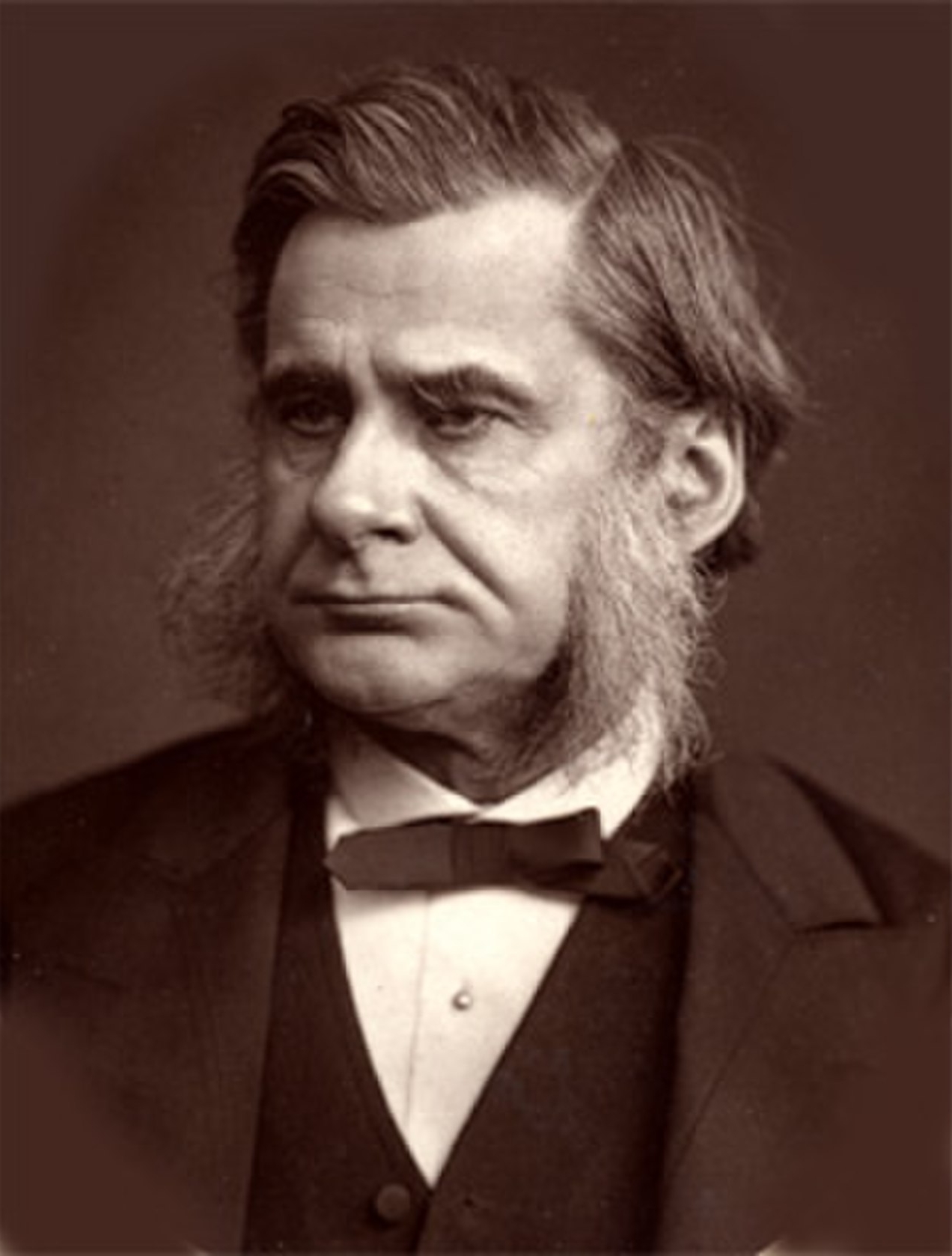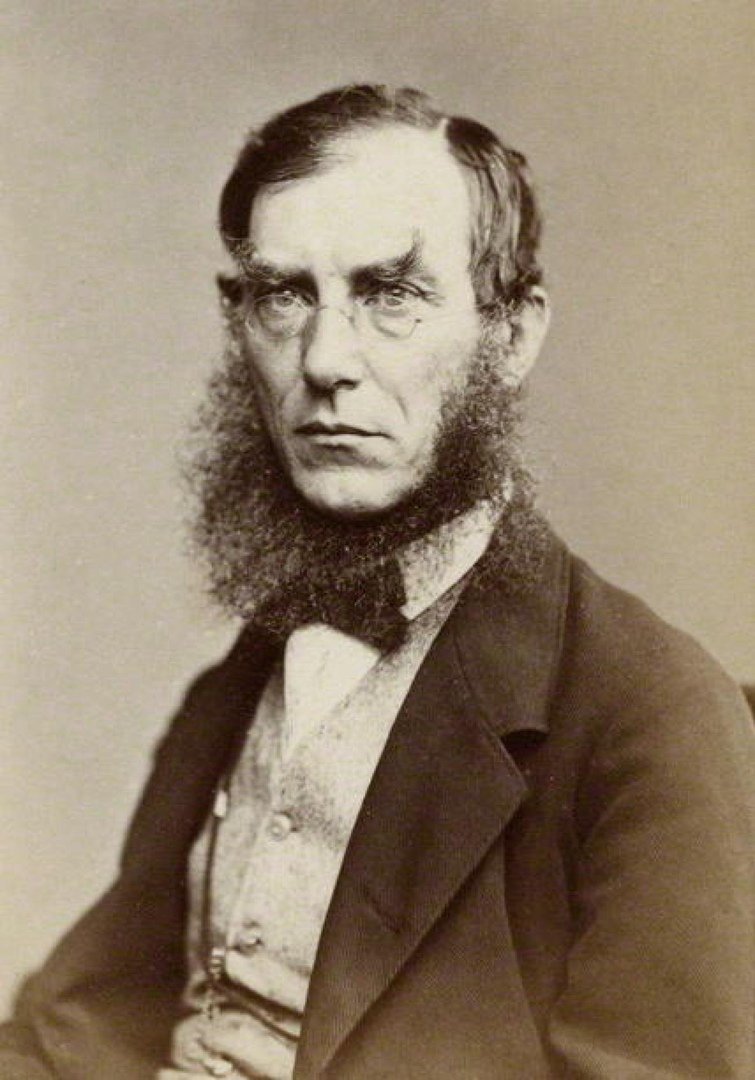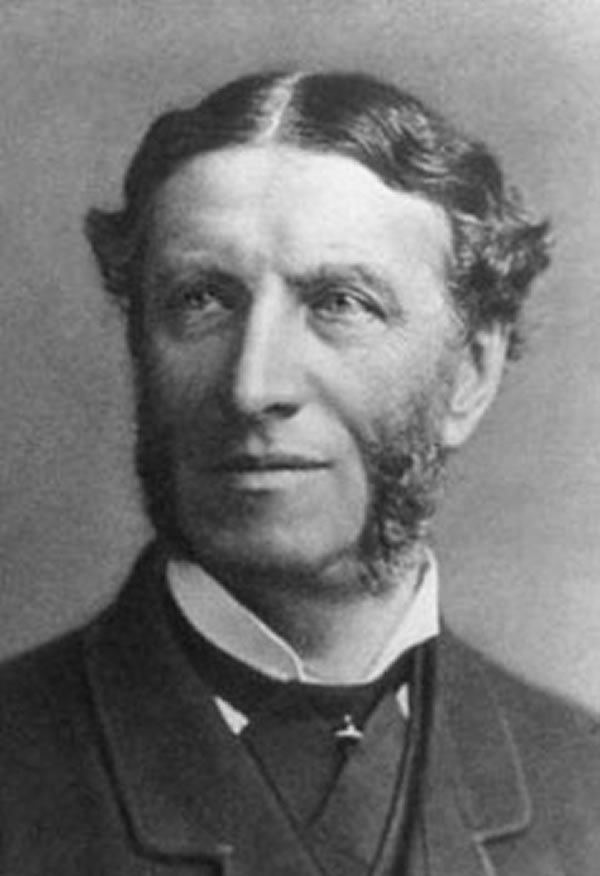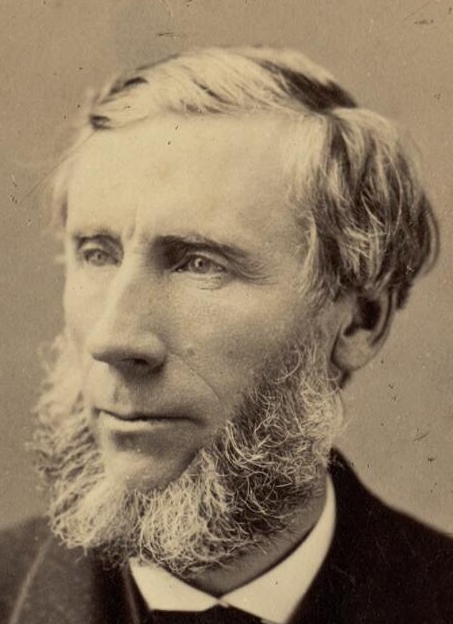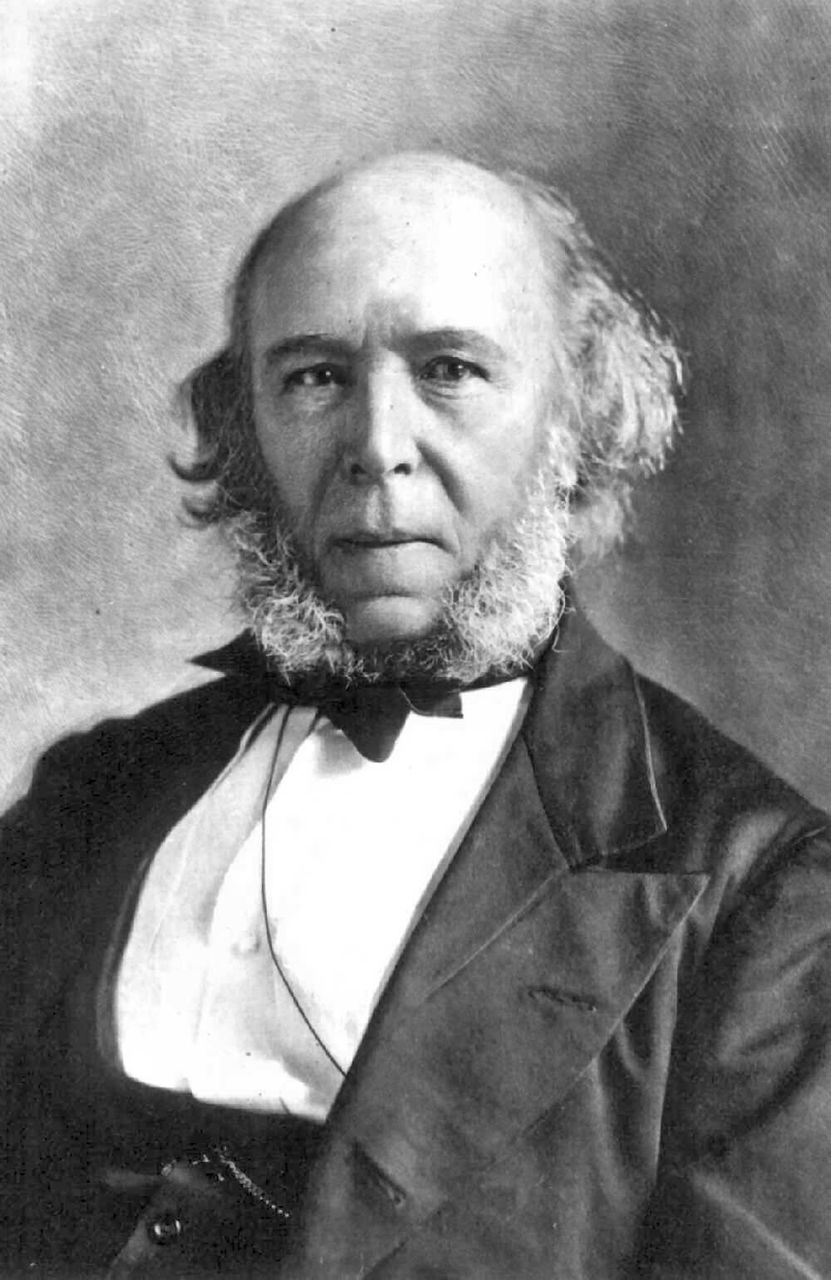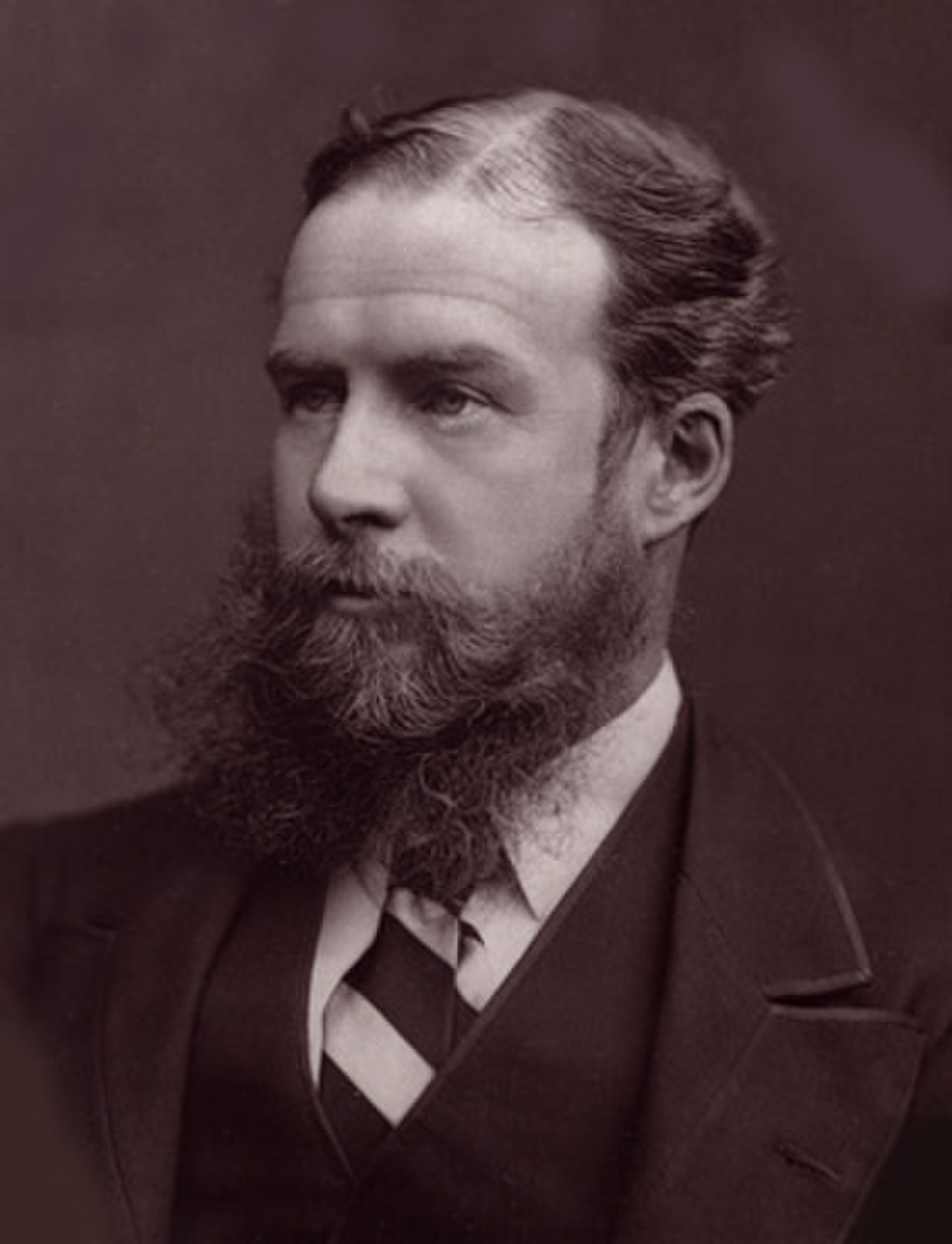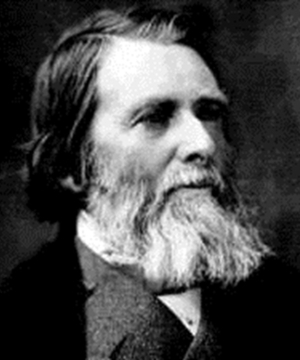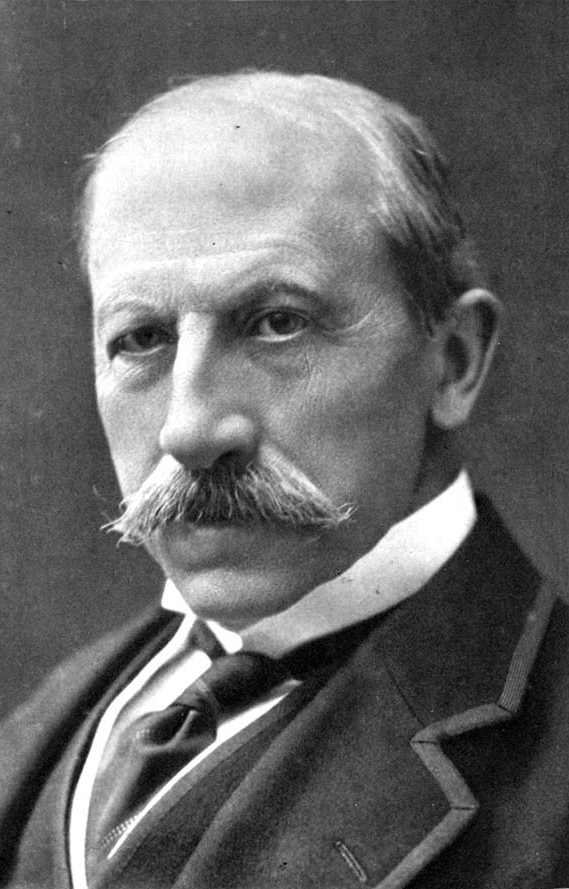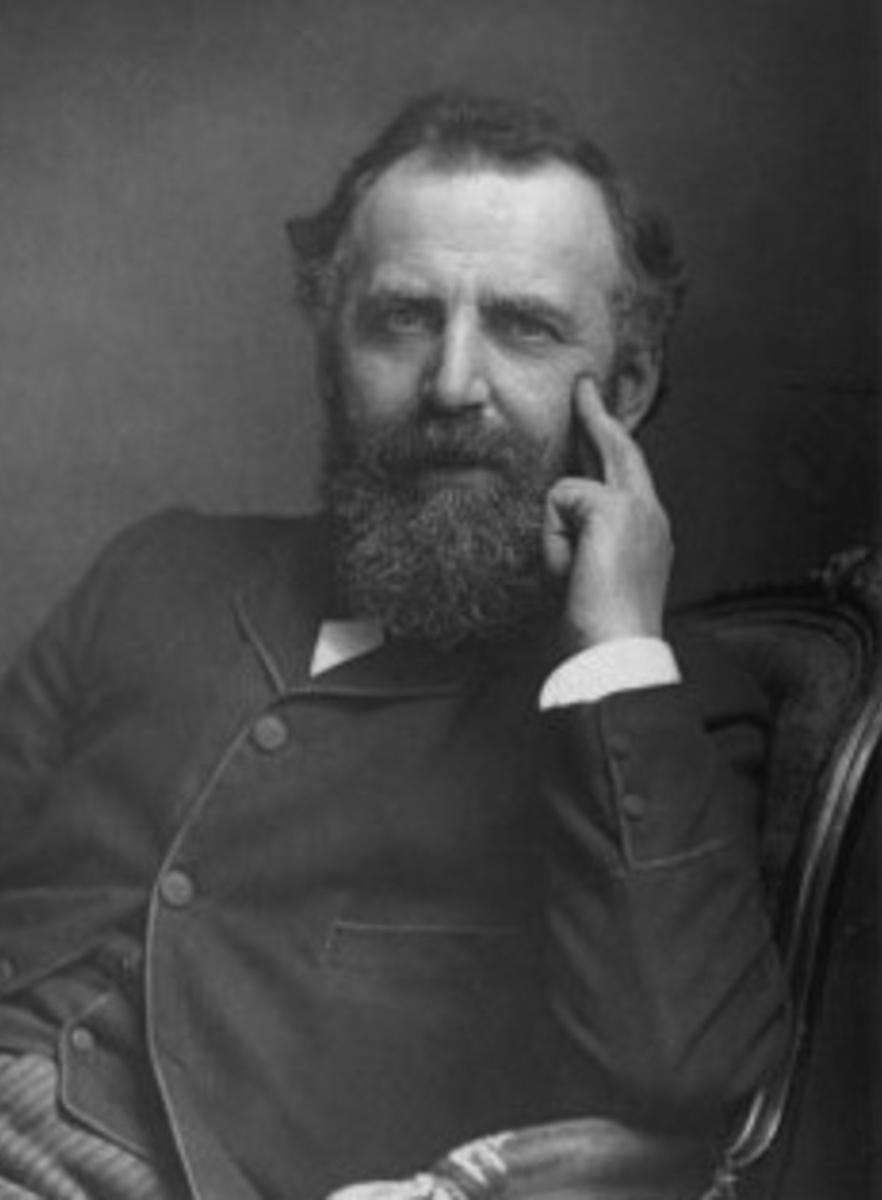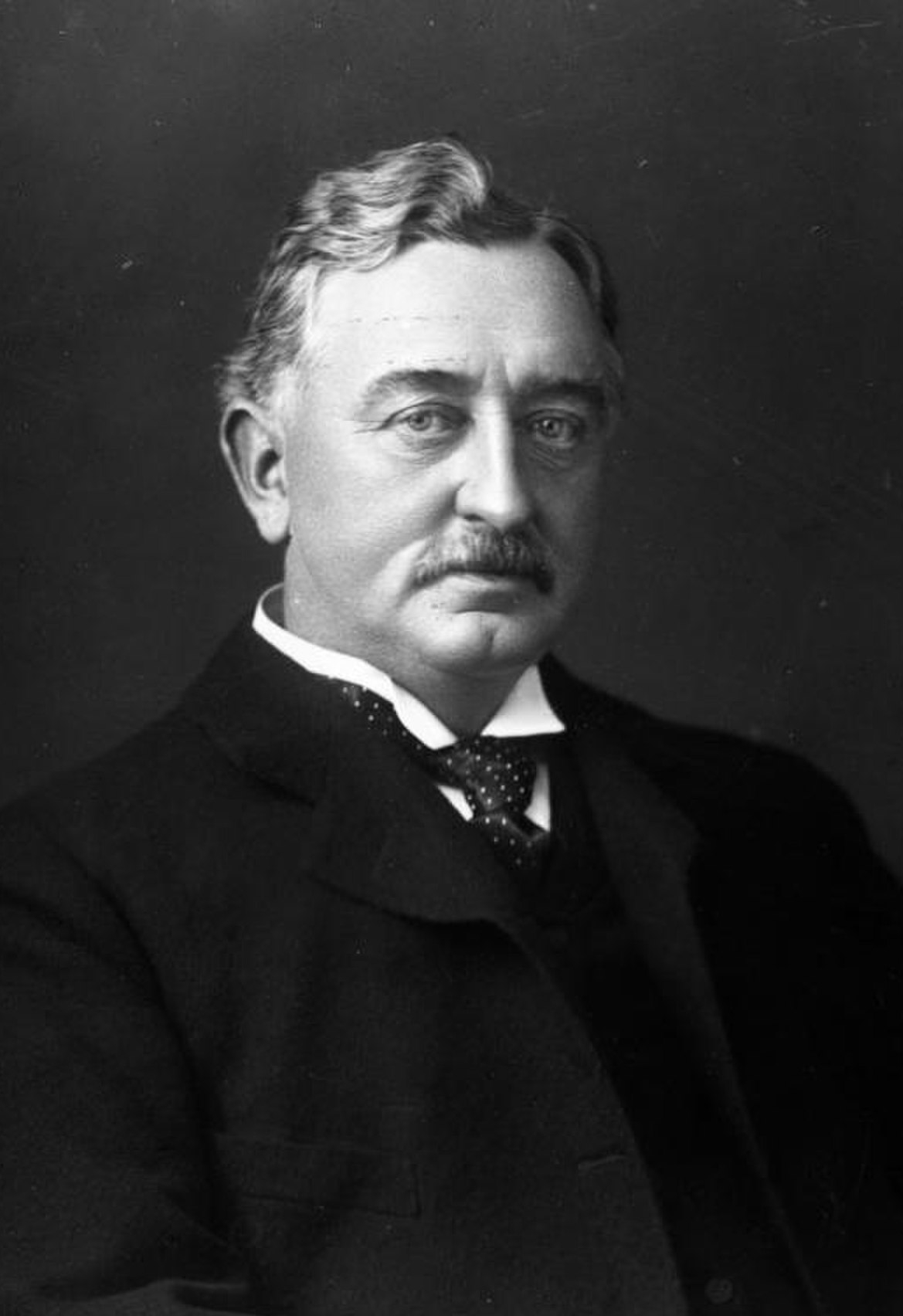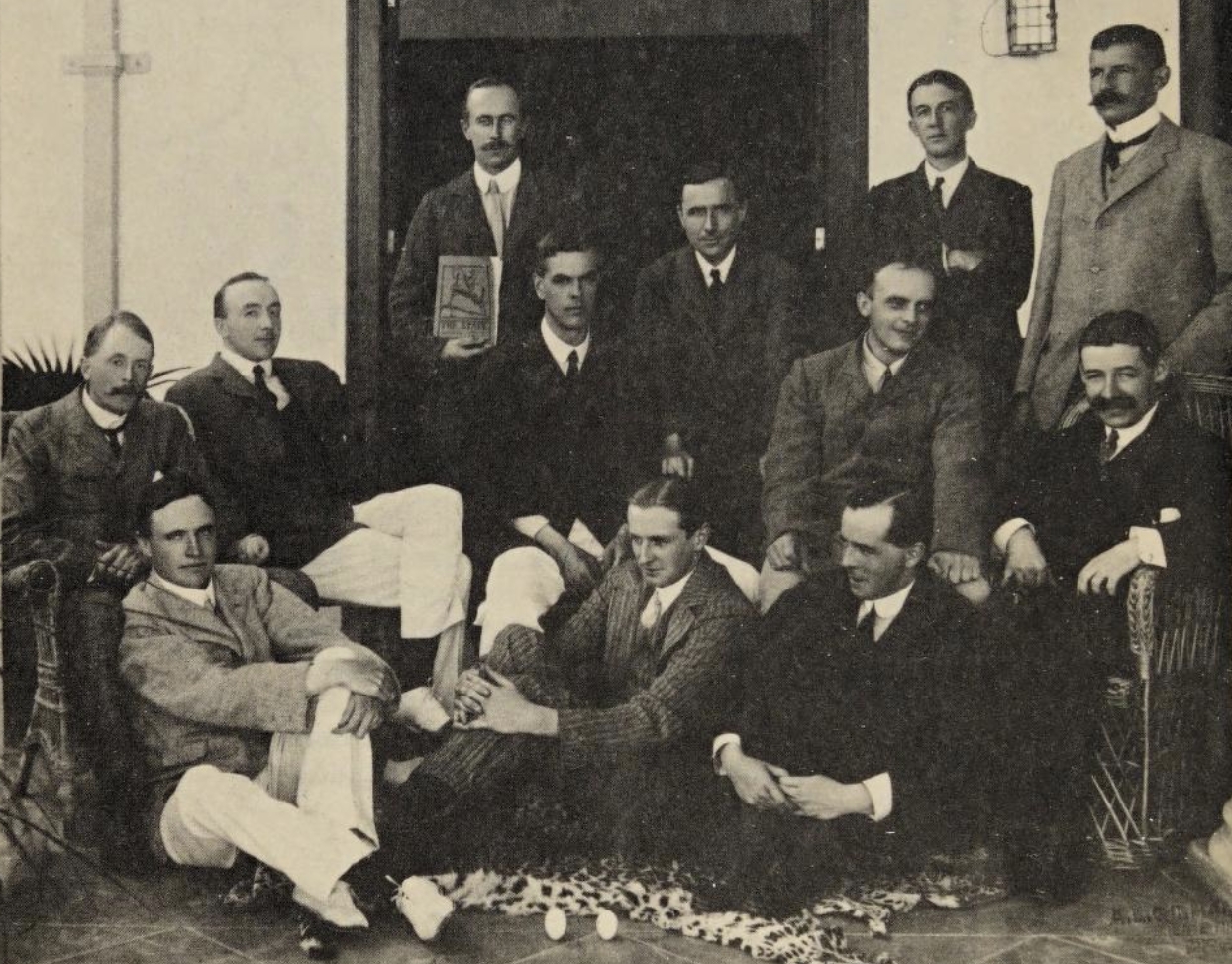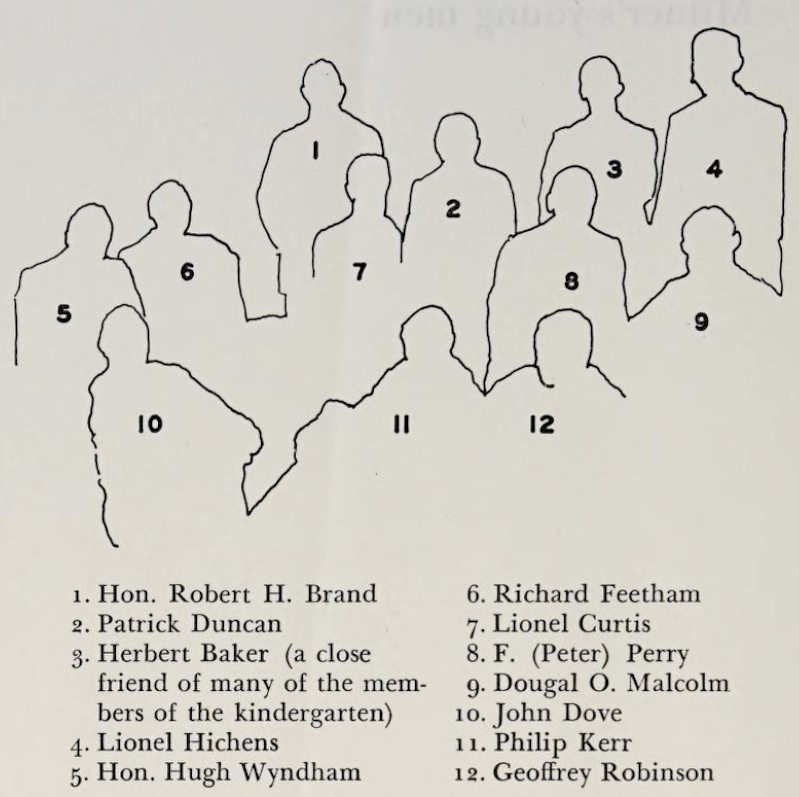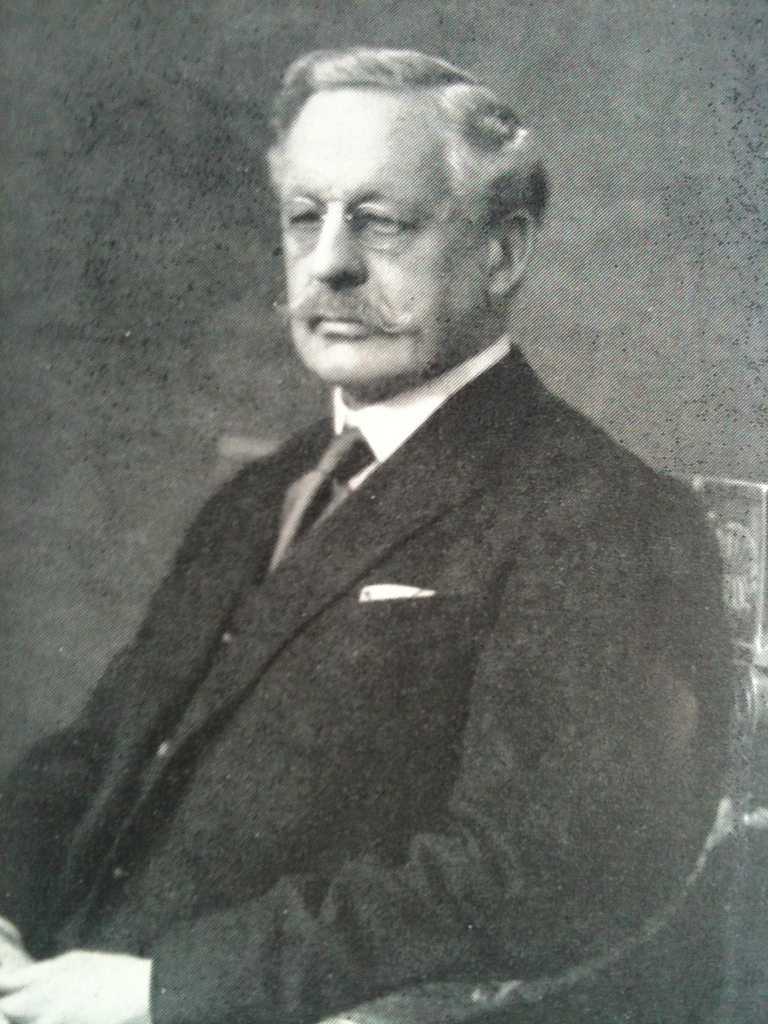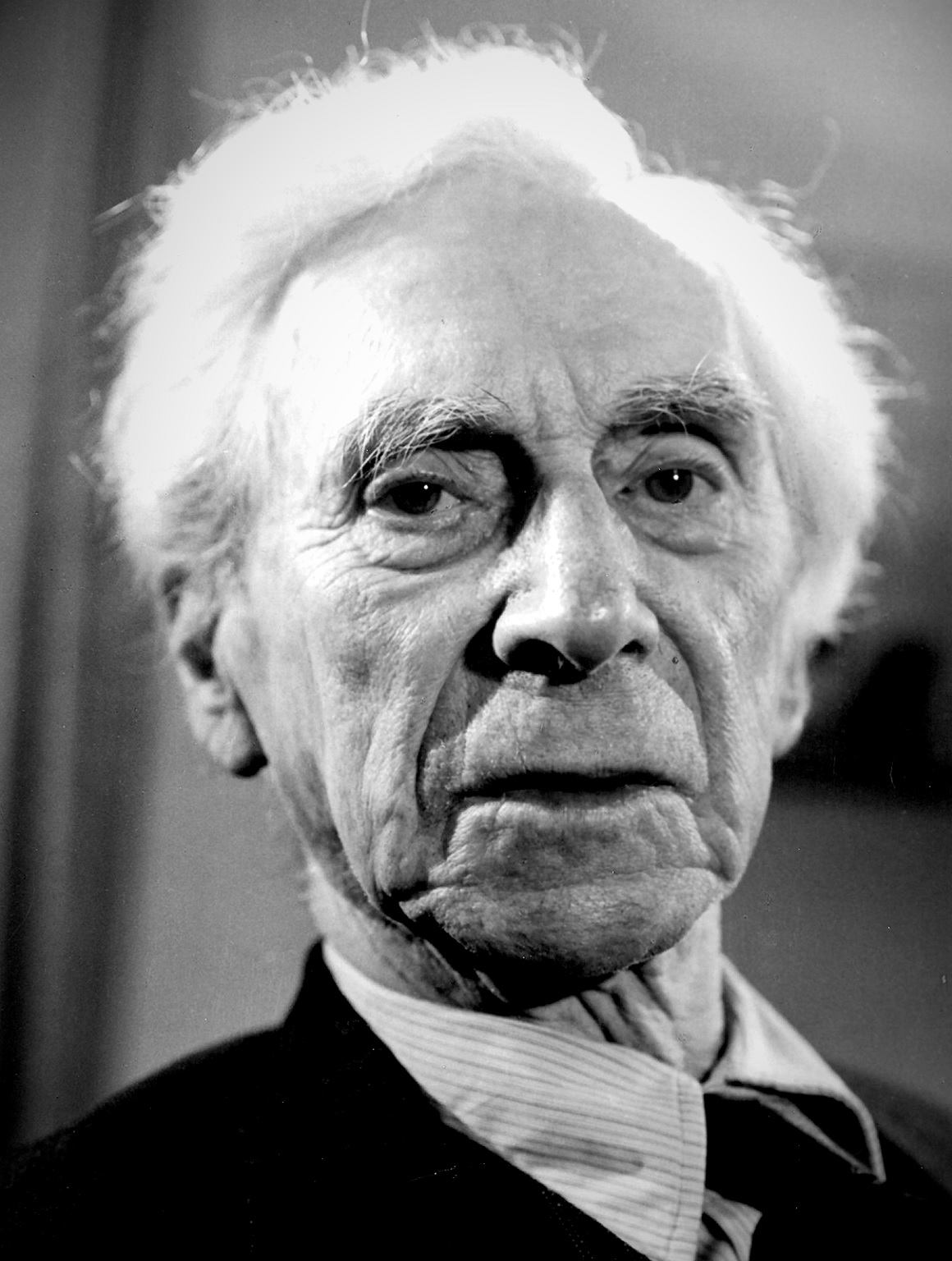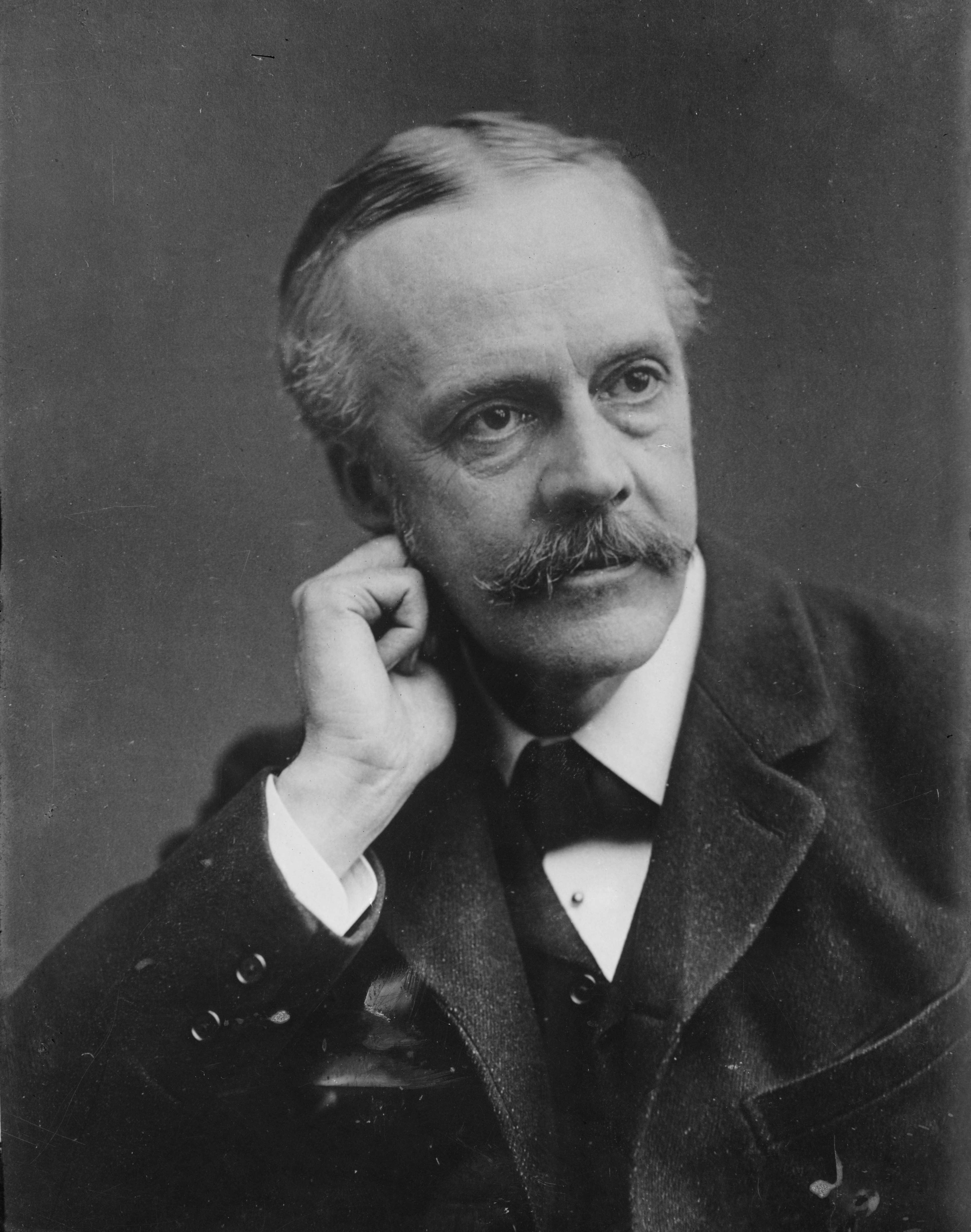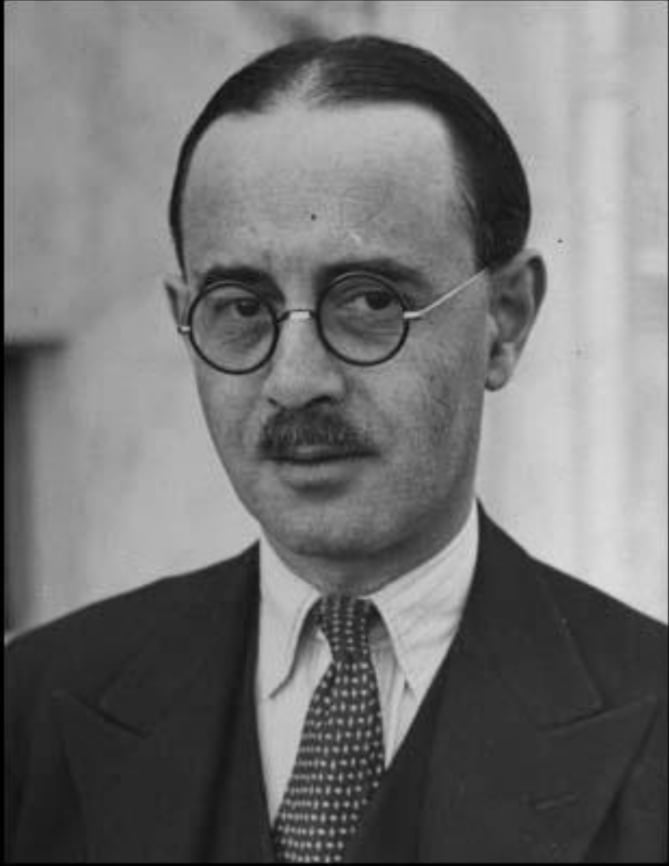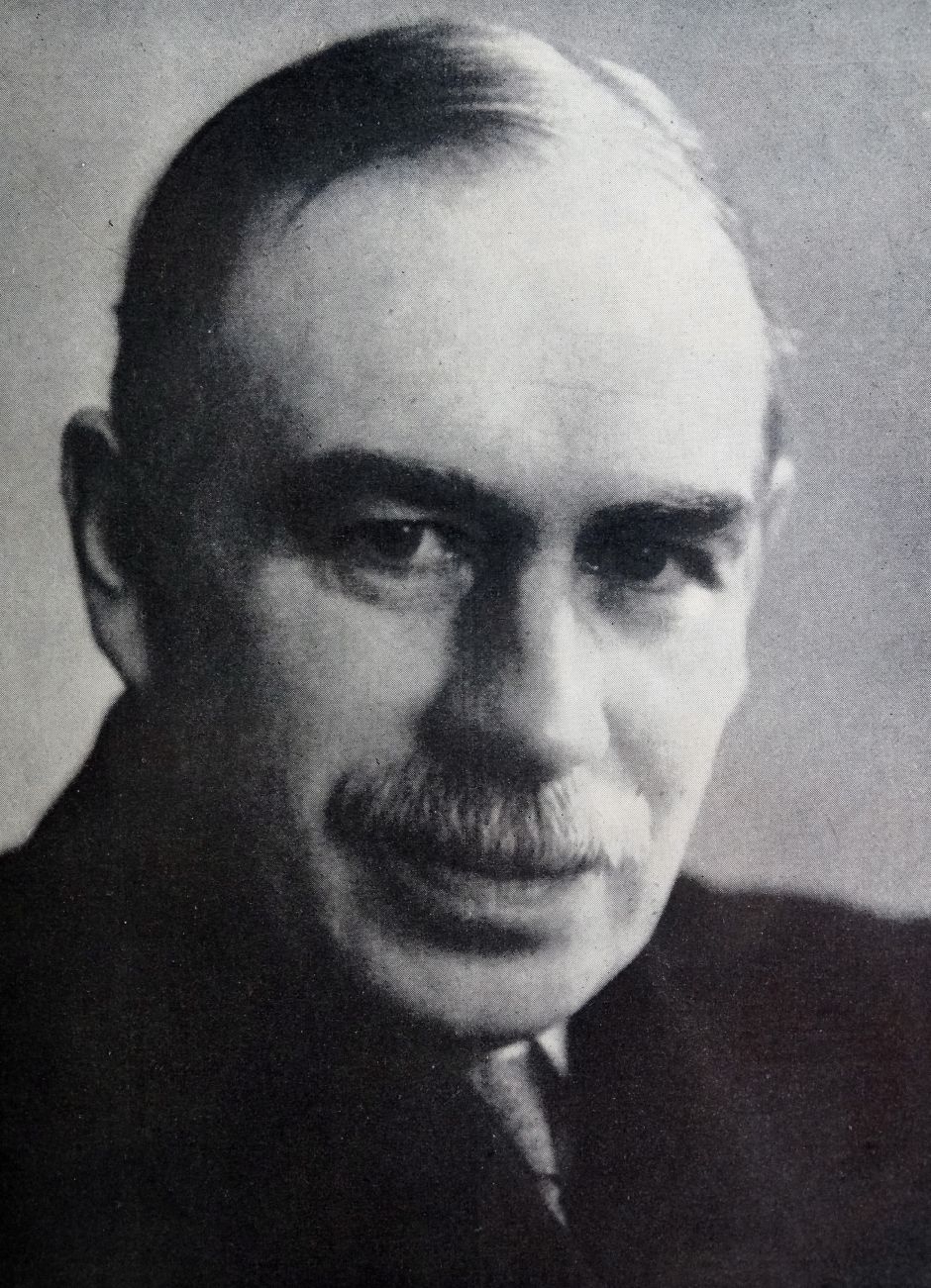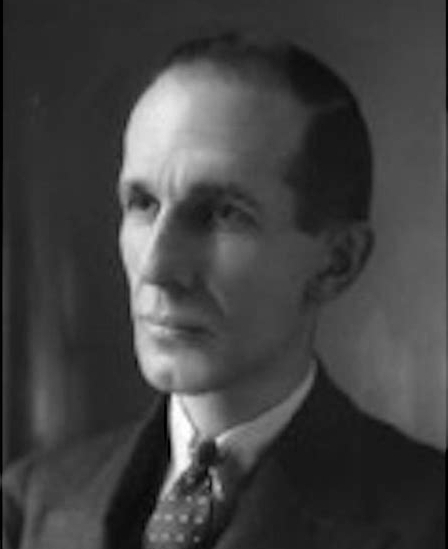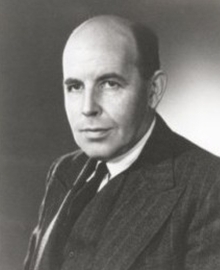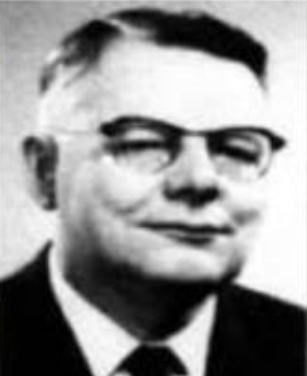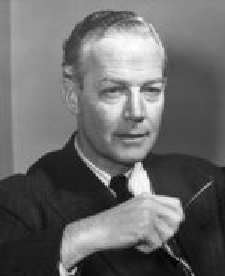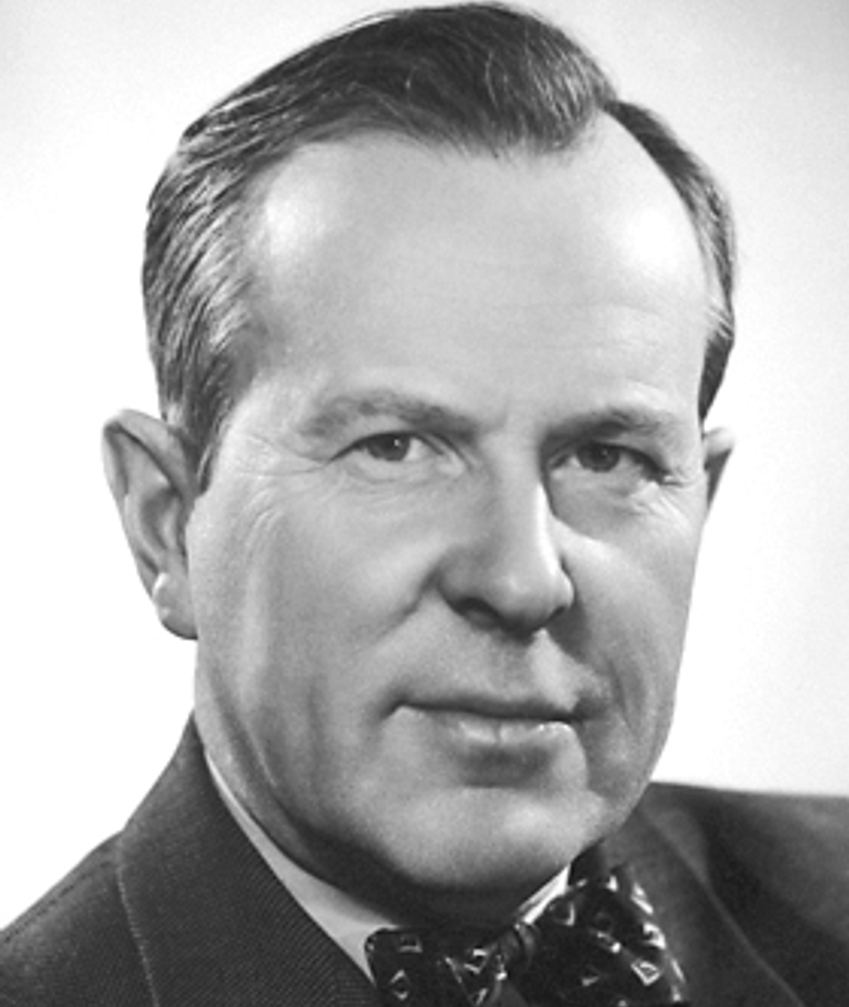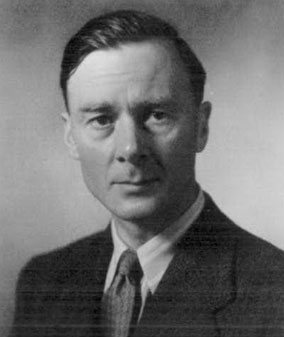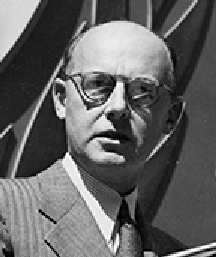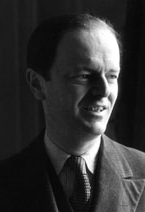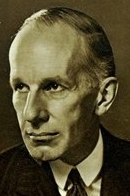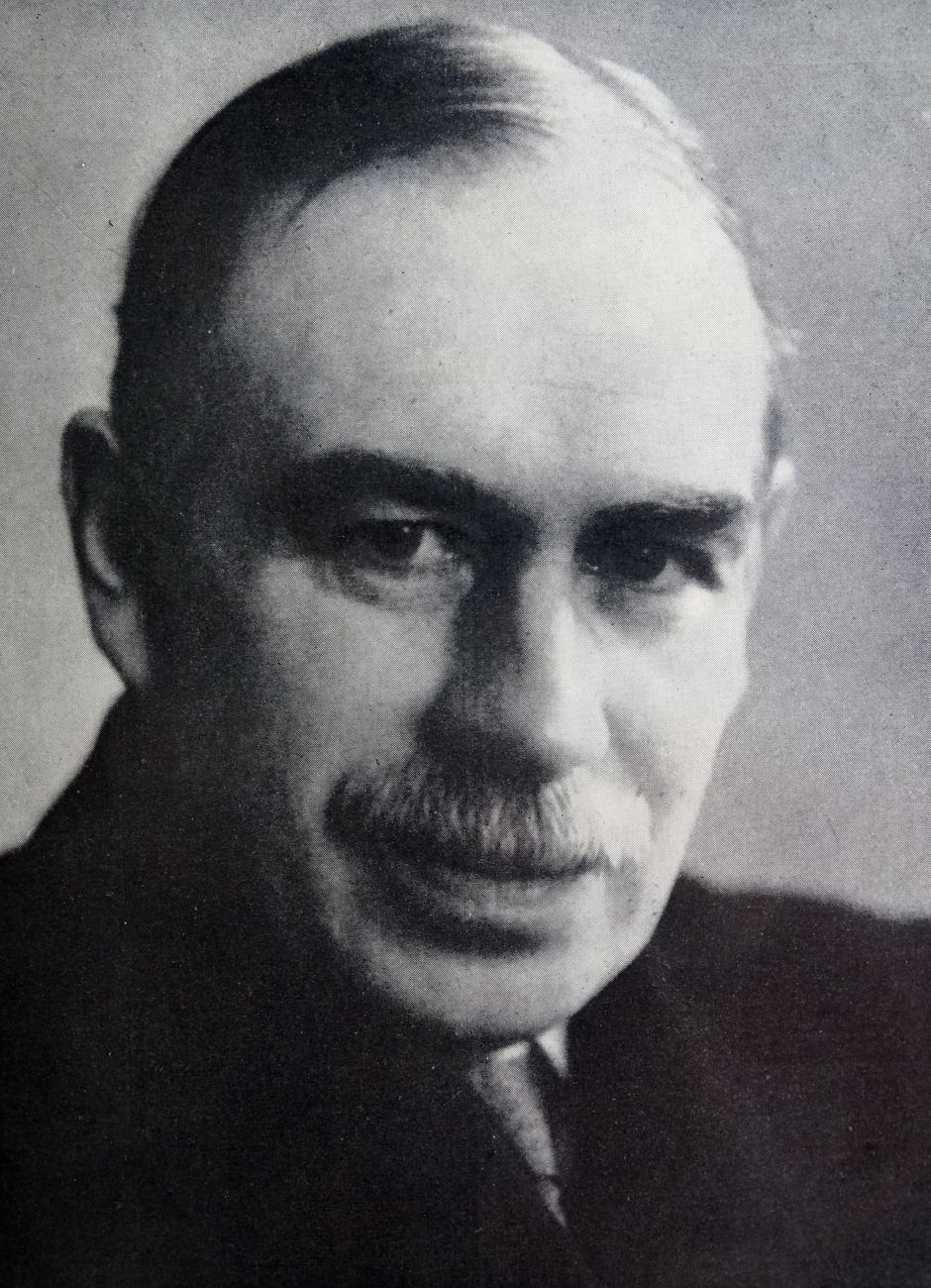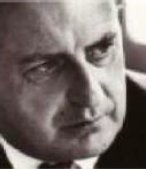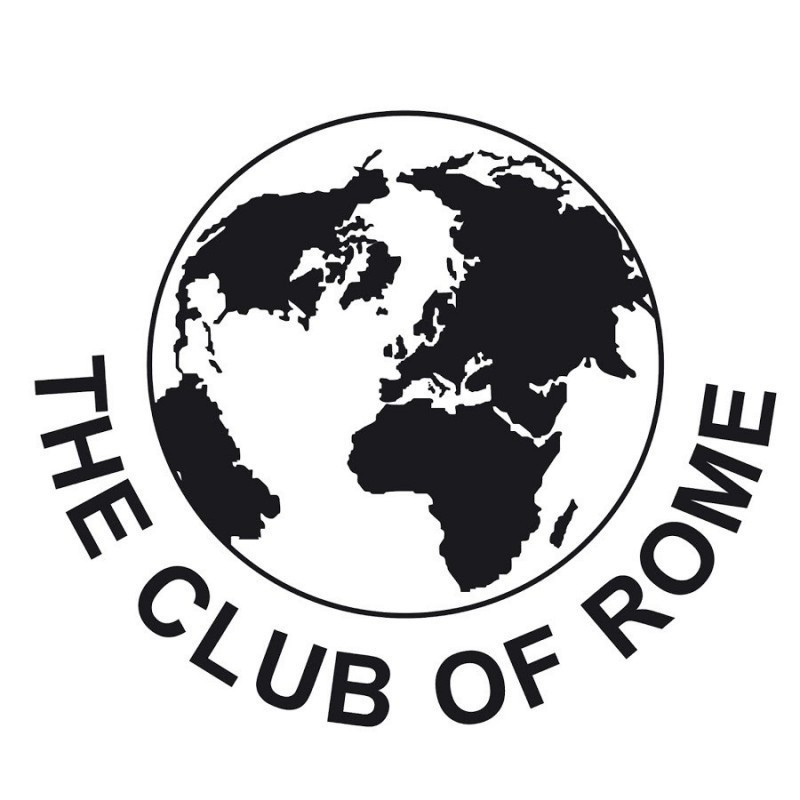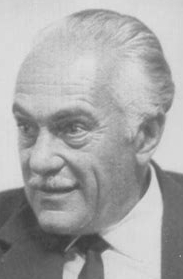|
Origins of the Deep State |
This is a three part series of documents that describe, in great detail and with references, the encroachment of the Deep State into North America. A biography of the author will be found at the end of this document. This document is being reposted on Highlander.com with permission from the copyright owner at canadianpatriot.org/
“Two systems are before the world; the one looks to increasing the proportion of persons and of capital engaged in trade and transportation, and therefore to diminishing the proportion engaged in producing commodities with which to trade, with necessarily diminished return to the labour of all; while the other looks to increasing the proportion engaged in the work of production, and diminishing that engaged in trade and transportation, with increased return to all, giving to the labourer good wages, and to the owner of capital good profits. … One looks to under working the Hindoo, and sinking the rest of the world to his level; the other to raising the standard of man throughout the world to our level. One looks to pauperism, ignorance, depopulation, and barbarism; the other in increasing wealth, comfort, intelligence, combination of action, and civilization. One looks towards universal war; the other towards universal peace. One is the English system; the other we may be proud to call the American system, for it is the only one ever devised the tendency of which was that of elevating while equalizing the condition of man throughout the world.”
- Henry C. Carey, Harmony of Interests, 1856
Canada’s struggle for existence as a sovereign nation has been caught between two opposing views of mankind represented by the British and American System of social organization. As the great economist Henry C. Carey laid out while he was advancing the policy of Abraham Lincoln, the American System was designed to become a global system operating amongst sovereign nations for the progress and mutual benefit of each and all. By the end of the 19th century, American System thinking was resonating with statesmen and patriots in all corners of the globe who were fed up with the ancient imperial system of British Free Trade that had always strived to maintain a world divided and monopolized.
Although British propagandists had made every attempt to keep the illusion of the sacredness of the British System alive in the minds of its subjects, the undeniable increase of quality of life, and creative thought expressed by the American System everywhere it was applied become too strong to ignore… especially within colonies such as Canada that had long suffered a fragmented, and underdeveloped identity as the price paid for loyalty to the British Empire.
In Germany, the American System-inspired Zollverein (custom’s union) had not only unified a divided nation, but elevated it to a level of productive power and sovereignty which had outpaced the monopoly power of the British East India Company. In Japan, American engineers helped assemble trains funded by a national banking system, and protective tariff during the Meiji Restoration. In Russia, American System follower Sergei Witte, Transport Minister and close advisor to Czar Alexander II, revolutionized the Russian economy with the American made trains that rolled across the Trans-Siberian Railway. Not even the Ottoman Empire remained untouched by the inspiration for progress, as the Berlin to Baghdad Railway was begun with the intention of unleashing a bold program of modernization of southwest Asia.
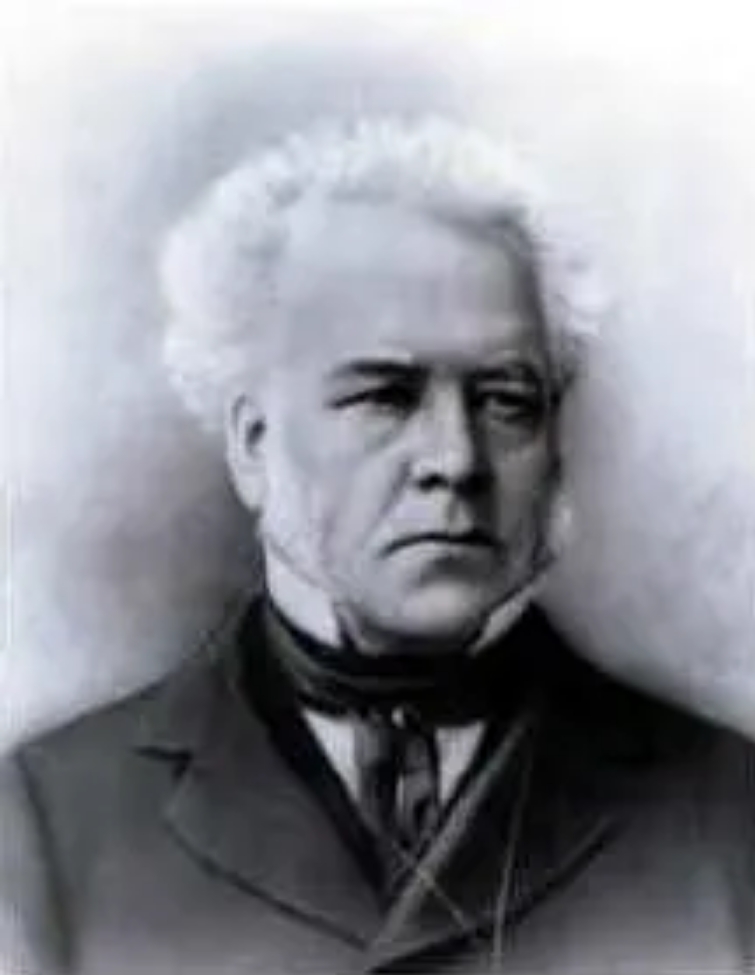
Canadian American System Patriot
Isaac Buchanan 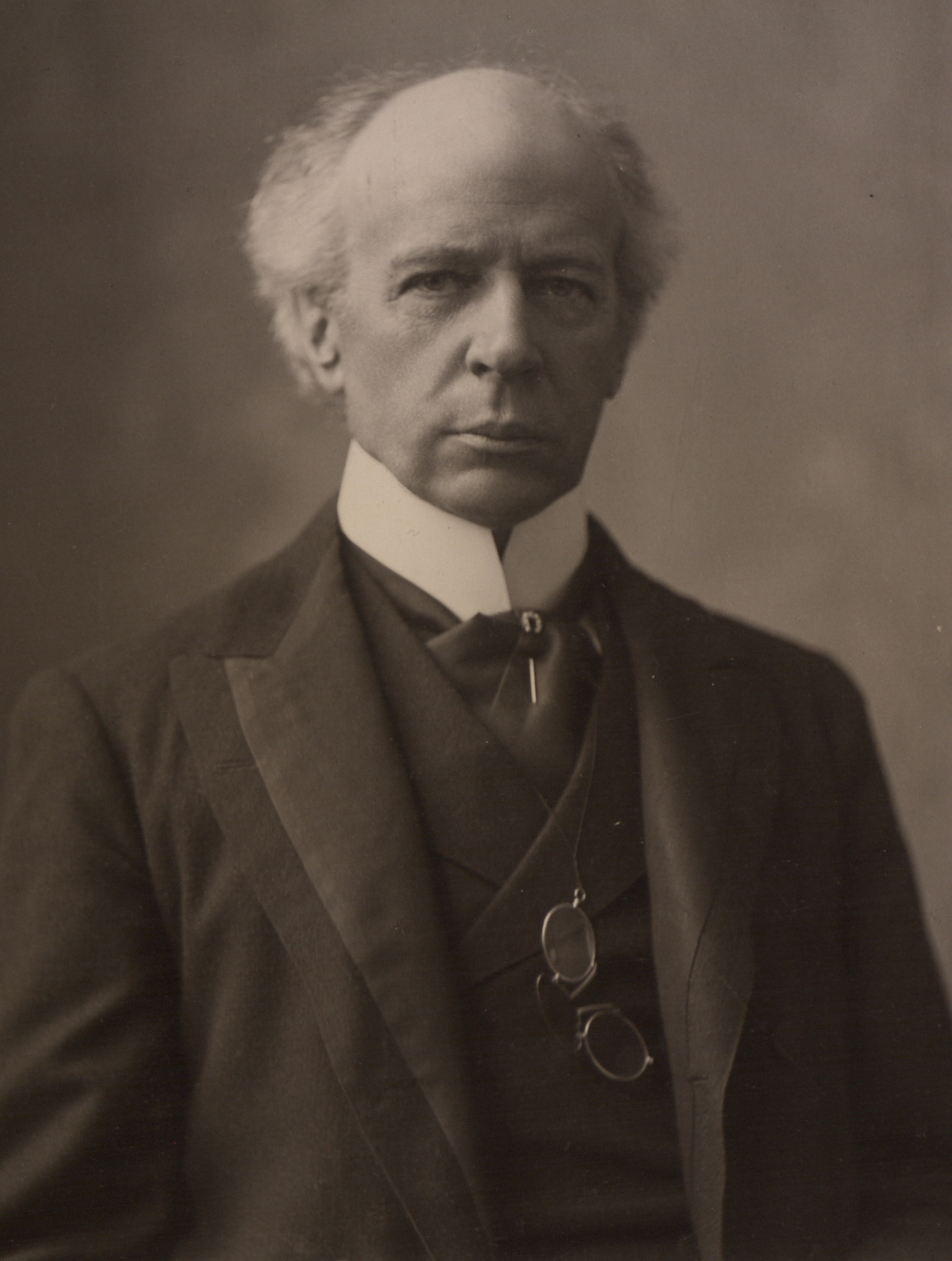
Lincoln admirer,
Wilfrid Laurier (1841-1919) |
In Canada, admirers of Lincoln and Henry C. Carey found their spokesman in the great American System statesman Isaac Buchanan.(1) Buchanan rose to the highest position of (elected) political office in the Dominion of Canada when in April 1864, the new MacDonald-Taché Ministry appointed him the President of the Executive Council. This put him in firm opposition to the Imperial agenda of George Brown, and the later Prime Minister John A. Macdonald, of whom he and all patriotic co-thinkers counted as bitter enemies to Canada’s independence and progress. The policy which Buchanan advocated as he rose to higher prominence was outlined in his December 1863 speech:
“The adoption by England for herself of this transcendental principle [Free Trade] has all but lost the Colonies, and her madly attempting to make it the principle of the British Empire would entirely alienate the Colonies. Though pretending to unusual intelligence, the Manchester Schools are, as a class, as void of knowledge of the world as of patriotic principle. … As a necessary consequence of the legislation of England, Canada will require England to assent to the establishment of two things: 1st, an American Zollverein [aka: Customs Union]. 2nd: Canada to be made neutral territory in time of any war between England and the United States”.(2)
While the customs union-modelled on the Zollverein program of American System economist Friedrich List in Germany laid out by Buchanan, was temporarily defeated during the operation known as the Articles of Confederation in 1867, the potential for its re- emergence would return in 1896 with the election of Wilfrid Laurier, Canada’s next Prime Minister. By 1911, the custom’s union policy advanced by Laurier, who was a devout admirer of Abraham Lincoln finally came to fruition. Laurier long recognized that Canada’s interests did not reside in the anti-American program of MacDonald which simply tied Canada into greater dependence towards the mother country, but rather with the interests of its southern neighbour. His Reciprocity program proposed to lower protective tariffs with the USA primarily on agriculture, but with the intention to electrify and industrialize Canada, a nation which Laurier saw as supporting 60 million people within two decades. With the collaboration of his close advisors, Adam Shortt, Oscar Skelton and later William Lyon Mackenzie King, Laurier navigated the mine field of his British enemies active throughout the Canadian landscape in the form of the Masonic “Orange Order” of Ontario, and later, the insidious Round Table movement.
While Laurier’s attempts to actualize a true Reciprocity Treaty of 1911 that involved free trade among North American economies united under a protective tariff against British dumping of cheap goods, it would not last, as every resource available to the British run Orange Order and Round Table were activated to ensure the Reciprocity’s final defeat and the downfall of Laurier’s Liberal government and its replacement by the Conservative government of Sir Robert Borden in its stead.(3) Laurier described the situation in Canada after this event:
“Canada is now governed by a junta sitting at London, known as “The Round Table”, with ramifications in Toronto, in Winnipeg, in Victoria, with Tories and Grits receiving their ideas from London and insidiously forcing them on their respective parties.”(4)
Two years before Laurier uttered this warning, the founder of the Round Table movement, Lord Milner wrote to one of his co-conspirators laying out the strategic danger faced by Buchanan and Laurier’s program with America:
“As between the three possibilities of the future: 1. Closer Imperial Union, 2. Union with the U.S. and 3. Independence, I believe definitely that No. 2 is the real danger. I do not think the Canadians themselves are aware of it… they are wonderfully immature in political reflection on the big issues, and hardly realise how powerful the influences are…”(5)
Without understanding either the existential struggle between the two opposing systems related above, or the creation of the Round Table movement by a new breed of British Imperialist as a response to Lincoln’s international victory in the face of the total bankruptcy of the British Empire at the turn of the last century, then no Canadian could honestly ever make sense of what has shaped his or her cultural and political landscape. It is the purpose of this present report to shed a clear light upon some of the principal actors on this stage of universal history with the hope that the reader’s powers of insight may be strengthened such that those necessary powers of judgement required to lead both Canada and the world out of our current plunge into a new dark age may yet occur.
(1) Robert D. Ainsworth, The American System in Canada, The Canadian Patriot, Special Edition, 2012, p.32
(2) Isaac Buchanan, Relations of the Industry of Canada with the Mother Country and the United States, 1864, p.22
(3) Robert D. Ainsworth, The End of an Era: Laurier and the Election of 1911, University of Ottawa, 2009
(4) O.D. Skelton, The Life of Sir Wilfrid Laurier, p. 510
(5) Milner to J.S. Sanders, 2 Jan. 1909 cited in “The Round Table Movement and Imperial Union” by John Kendle, University of Toronto Press, 1975, p.55
The Round Table movement served as the intellectual center of the international operations to regain control of the British Empire and took on several incarnations over the 20th century. It worked in tandem with the Coefficients Club, the Fabian Society, and the Rhodes Trust, all of whom witnessed members moving in and out of each others ranks. The historian Carrol Quigley, of Georgetown University wrote of this cabal in his posthumously published “Anglo-American Establishment”(6):
“This organization has been able to conceal its existence quite successfully, and many of its most influential members, satisfied to possess the reality rather than the appearance of power, are unknown even to close students of British history. This is the more surprising when we learn that one of the chief methods by which this Group works has been through propaganda.
It plotted the Jameson Raid of 1895; it caused the Boer War of 1899-1902; it set up and controls the Rhodes Trust; it created the Union of South Africa in 1906-1910; it established the South African periodical The State in 1908; it founded the British Empire periodical The Round Table in 1910, and this remains the mouthpiece of the Group; it has been the most powerful single influence in All Souls, Balliol, and New Colleges at Oxford for more than a generation; it has controlled The Times for more than fifty years, with the exception of the three years 1919-1922, it publicized the idea of and the name “British Commonwealth of Nations” in the period 1908-1918, it was the chief influence in Lloyd George’s war administration in 1917-1919 and dominated the British delegation to the Peace Conference of 1919; it had a great deal to do with the formation and management of the League of Nations and of the system of mandates; it founded the Royal Institute of International Affairs in 1919 and still controls it; it was one of the chief influences on British policy toward Ireland, Palestine, and India in the period 1917-1945; it was a very important influence on the policy of appeasement of Germany during the years 1920-1940; and it controlled and still controls, to a very considerable extent, the sources and the writing of the history of British Imperial and foreign policy since the Boer War.”(7)
To understand the pedigree of the Round Table movement as it was “officially” unveiled in 1910 as the ideological shaper of the policies and paradigm of the new “managerial class” of international imperialists dedicated to the salvation of the British Empire under an “Imperial Federation”, it would be necessary to go back a few decades prior, to 1873-74. It was in this year that a young Canadian named George Parkin lectured at Oxford on the subject imperial union as the sacred duty of all Anglo Saxons to advance. Parkin is popularly heralded by Oxford historians as “the man who shifted the mind of England”.
(6) Carroll Quigley, The Anglo-American Establishment, New York, Books in Focus, 1981 https://www.voltairenet.org/IMG/pdf/Quigley_Anglo_American_Establishment.pdf
(7) Carroll Quigley, The Anglo American Establishment, p. 5
|
||||||
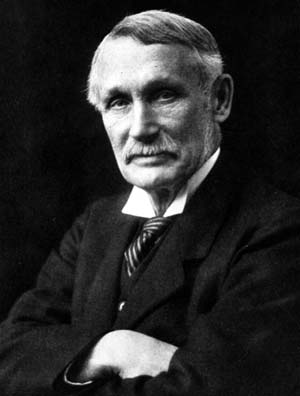
George Parkin (1846-1922)
|
During this same period, a grouping of Imperial intellectuals known as the “X Club” (f. 1865) centering on Thomas Huxley, Matthew Arnold, Herbert Spencer and Joseph Hooker were assigned the responsibility to overhaul the British Empire’s controlling ideological structures that had proven themselves worn out. Each would specialize on various branches of the sciences and would all promote gradualist interpretations of change to counteract explanations which required creative leaps. This program was applied with the intention of: 1) saving the collapsing empire and 2) establishing the foundation of a new scientific religion based upon Charles Darwin’s highly materialistic model of Natural Selection as the explanation for the evolution and differentiation of new species. As X Club co-founder Herbert Spencer went on to elaborate the system of “social darwinism” as the logical outgrowth of Darwin’s system into human affairs, the intention behind the propagation of the Darwinian program was never “the enlightenment liberalism in battle against the ignorant dogmas of religion”, as it is so often recounted by popular historians of science. Rather, the “revolution in science” initiated by the X Club was merely the re-packaging of an idea as old as Babylon: The control of the masses by a system of oligarchical rule, simply under a new type of “scientific dictatorship”. But how, when the demonstration of creative reason’s power to elevate humanity’s conditions of life by encouraging new discoveries and applied technologies, as promoted by the American System of Political Economy, would the world now accept the conditions of mental and political enslavement demanded by the imperialist in a fixed system struggle for diminishing returns?
This was the challenge upon which young Oxford men would set their creative energies using the “scientific” reasoning established by Thomas Huxley’s X Club and for the service of the ruling oligarchical families of Europe. George Parkin like all young Oxford men at this time, was highly influenced by this network’s ideas, and used them to justify the “natural scientific inevitability” of the hegemony of the strong over the weak. In this case, the Anglo Saxon master race dominating the inferior peoples of the earth. This message could be seen in his 1892 work Imperial Federation: “Nations take long to grow, but there are periods when, as in the long delayed flowering of certain plants, or in the crystallization of chemical solutions, new forms are taken with extreme rapidity. There are the strongest reasons for believing that the British nation has such a period immediately before it. The necessity for the creation of a body of sound public opinion upon the relations to each other of the various parts of the Empire is therefore urgent.”(8)
In elaborating upon the danger of the British System’s collapse in light of nationalist movements following the American System model, Parkin went on to ask: “Has our capacity for political organization reached its utmost limit? For the British people this is the question of questions. In the whole range of possible political variations in the future there is no issue of such far reaching significance, not merely for our own people but for the world at large, as the question whether the British Empire shall remain a political unit… or yielding to disintegrating forces, shall allow the stream of the national life to be parted into many separate channels.”(9)
One of Parkin’s Oxford contemporaries was Alfred Milner, a character who plays a vicious role in our drama as the catalyzer behind the formation of the Round Table Movement. Milner credited Parkin with giving his life direction from that point on.(10) It was during 1876 that another contemporary of Milner and Parkin, named Cecil Rhodes left Oxford in order to make a fortune on a cotton plantation in South Africa. All three characters were also highly influenced by John Ruskin, the leader of the “artistic” branch of British Intelligence led by the “Pre-Raphaelite Society”.
The proceeds of Rhodes’ cotton fortune were multiplied many times by ventures into the diamond industry of South Africa, allowing him to rise to gargantuan heights of political power and wealth, peaking with his appointment as Prime Minister of Cape Town and Founder of Rhodesia. The current London-centered mineral cartels Rio Tinto, De Beers, and Lonrho now pillaging Africa, as well as the legacy of Apartheid which has stained so much of South Africa’s history are among two aspects of the scarring legacy Rhodes has passed down to present times.
Between 1876 and his becoming High Commissioner to South Africa in 1897, Milner’s path slightly diverged from Rhodes. Milner was recruited by the editor of the Pall Mall Gazette William T. Stead and became associate editor soon thereafter. The Gazette’s function was set out in the Pall Mall Gospel, a short mission statement which Stead demanded all of his employees abide to: “The Federation of the British Empire is the condition of its survival… as an Empire we must federate or perish.” The gospel also propagandized for the “inevitable destiny” that the USA and Britain “coalesce”.(11) The role which the Pall Mall played in coordinating a cohesive vision of empire was the model followed by Milner and his minions later as they ran the Round Table periodicals. Stead was officially recruited to the grand design in 1889 which was instigated by Rhodes and his sponsor Lord Rothschild. It was when Stead had been recently released for prison due to his Gazette’s promotion of “organized vice” only to find his paper in serious financial trouble, when he was first called upon by Cecil Rhodes, a long time follower of his journal in South Africa. After their first meeting, Stead ecstatically wrote to his wife:
“Mr. Rhodes is my man! I have just had three hours talk with him. He is full of a far more gorgeous idea in connection with the paper than even I have had. I cannot tell you his scheme because it is too secret. But it involves millions. He had no idea that it would cost £250,000 to start a paper. But he offered me down as a free gift £20,000 to buy a share in the P.M. Gazette as a beginning. … His ideas are federation, expansion, and consolidation of the Empire. … He took to me. Told me some things he has told no other man—save Lord Rothschild— and pressed me to take the £20,000, not to have any return, to give no receipt, to simply take it and use it to give me a freer hand on the P.M.G. It seems all like a fairy dream. …”(12)
Quigley demonstrates that both Milner and Stead had become active members of the agenda laid out by Cecil Rhodes. But what was this agenda? In a series of seven wills written between 1879 and 1901,” Rhodes, the unapologetic racist, laid out his designs for the re-conquering of the world and indoctrinating young elites into his design:
“Let us form the same kind of society, a Church for the extension of the British Empire. A society which should have its members in every part of the British Empire working with one object and one idea we should have its members placed at our universities and our schools and should watch the English youth passing through their hands just one perhaps in every thousand would have the mind and feelings for such an object, he should be tried in every way, he should be tested whether he is endurant, possessed of eloquence, disregardful of the petty details of life, and if found to be such, then elected and bound by oath to serve for the rest of his life in his Country. He should then be supported if without means by the Society and sent to that part of the Empire where it was felt he was needed.”
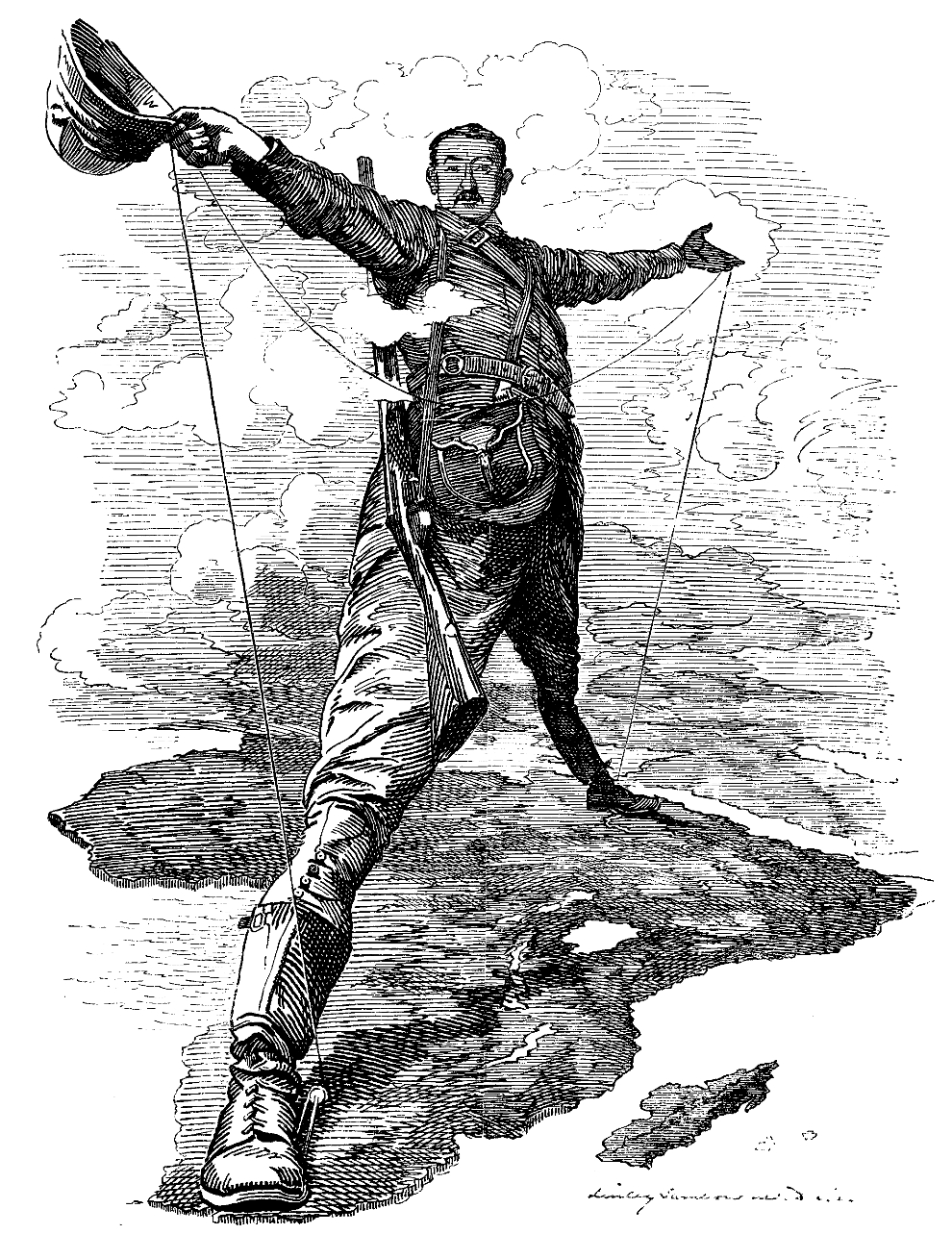
Cecil Rhodes long had a reputation as a vicious racist Here, an editorial features him dominating Africa
|
In another will, Rhodes described in more detail his intention:
“To and for the establishment, promotion and development of a Secret Society, the true aim and object whereof shall be for the extension of British rule throughout the world. The colonization by British subjects of all lands where the means of livelihood are attainable by energy, labour, and enterprise and especially the occupation by British settlers of the entire Continent of Africa, the Holy Land, the Valley of the Euphrates, the islands of Cyprus and Candia, the whole of South America, the islands of the Pacific not heretofore possessed by Great Britain, the whole of the Malay Archipelago, these aboard of China and Japan, [and] the ultimate recovery of the United States of America as an integral part of the British Empire.”(13)
It was under this specific design to create an indoctrination system of talented young disciples that Rhodes’ dream of stealing the world and reconquering America that the Rhodes Trust was established upon his death in 1902. Some historians have maintained that since Rhodes doesn’t literally bring up his call for a secret society in his last two wills, he must have “matured” and left those notions behind him. Yet Professor Quigley points out, that the belief pushed by such “authoritative” historians is a farce, evidenced by George Parkin’s revealing observation taken from his book The Rhodes Scholarship, published in 1912: “It is essential to remember that this final will is consistent with those which had preceded it, that it was no late atonement for errors, as some have supposed, but was the realization of life-long dreams persistently pursued.”(14)
Upon Rhodes’ death, George Parkin became the first head of the Rhodes Scholarship Trust in 1902 leaving his post as Principal of Upper Canada College (1895-1902) to fulfill his duty. It was under this post that Parkin recruited fellow Upper Canada College professor Edward Peacock, who joined him as a Rhodes trustee and promoter of what became the Canadian branches of the Round Table movement. While organizing for the ouster of Prime Minister Wilfrid Laurier and the defeat of the 1911 Reciprocity Treaty, this group recruited young talented disciples from their college connections along the way.
|
|
The model of the Round Table involved a central coordinating body in London, with branches strategically placed throughout the Commonwealth in order to provide one vision and voice to the young and talented “upper managerial class” of the reformed British Empire. Parkin and Peacock were joined by Lord Alfred Milner, Sir Arthur Glazebrook, W.T. Stead, Arthur Balfour and Lord Nathan Rothschild as co-trustees.
Working in tandem with the eugenicists of the Fabian Society of Sidney and Beatrice Webb, Balfour had founded the first International Eugenics Conference in 1912 alongside enthusiastic recruits suchyoung Roundtable member Winston Churchill. Charles Darwin’s cousin and founder of eugenics, Sir Francis Galton died mere weeks before being able to keynote the conference. The Fabian Society and its sister organization “The Co-efficients Club” featured such other prominent eugenicists as Bertrand Russell, Halford Mackinder, H.G. Wells and George Bernard Shaw, and later Harold Laski and John Maynard Keynes [see accompanying article on the Eugenics bent of the Fabian Society]. Membership rosters of either organization frequently overlapped.(15)
Much of the dirty work conducted by the original Roundtable movement was run primarily by the group of young Oxford men who got their start managing imperial affairs under Milner during the Boer War suppression of the Transvaal (South African) uprising of 1899 to 1902. Of this Kindergarden, Philip Kerr and Lionel Curtis were tasked with coordinating the Canadian branches from London (with Parkin and Peacock leading from Canada).
While Oxford had long been the indoctrination center of young elites for centuries prior, now with the Rhodes Scholarship program in place, a new level of standardization had been initiated. The new program provided scholarships to young talent primarily throughout the Anglo Saxon family of nations which Rhodes yearned to see re- absorbed under one Aryan umbrella. The Fabian Society had founded the London School of Economics (LSE) for similar purposes. Both the LSE and Oxford have worked hand in hand at crafting agents of imperial change throughout the entire 20th century.(16)
|
Eugenics from the Left: The Fabian Society
(Leading Fabians) |
||||||
|
Each student, upon selection, would be provided a scholarship to Oxford University, a generous stipend, and red carpet treatment into the upper echelons of the ruling oligarchical social networks, if the student so willed. Each student was returned to their home country enflamed with a burning desire to fulfill the objectives of the British Empire and advance “the scientific management of society”. Their talents were expressed either in elected office, working in the civil service, media, law, the private sector or in academia. In most cases, these scholars acted upon the Fabian method of ‘permeation theory’… slowly permeating all levels of society’s controlling structures in order to shape perception and shift the invisible structures controlling mass behaviour away from a current of progress and love of truth and towards a materialistic struggle for survival. Each year, one scholarship was granted to each of the Canadian provinces (with the exception of P.E.I) and 32 were granted to the United States. To the present date, approximately 7000 scholarships have been awarded with increasing openness to the non-Aryan countries to service the imperial agenda.
(8) George Parkin, Imperial Federation: The Problem of National Unity, Macmillan and Co., London, 1892, preface VIII
(9) Ibid, p.7
(10) After taking up his governorship of South Africa, Milner wrote to Parkin: “My life has been greatly influenced by your ideas and in my new post I shall feel more than ever the need of your enthusiasm and broad hopeful view of the Imperial future,” Milner to Parkin, 28 April, Headlam, ‘The Milner Papers,’ I, 42,
(11) W.T.Stead by E.T Cook, The Contemporary Review, June 1912, reprinted in Frederick Whyte, The Life of W.T. Stead, London, 1925, vol. 2, p.353-356
(12) Quigley, Anglo American Establishment, p. 32
(13) Rotberg, The Founder, pp. 101, 102. & Niall Ferguson, The House of Rothschild: The World’s Banker, 1848–1998, Penguin Books, 2000
(14) Quigley, ibid, p.31
(15) Notable Coefficients who were also be Fabians: Lord Alfred Milner, Sir Arthur Balfour, Lord Robert Cecil, Lord Bertrand Russell, H.G. Wells (protégé of Thomas Huxley), Leo .S Amery and Sir Edward Grey
(16) While Oxford and LSE have tended to produce the “doers”, the higher level “ideas” men of the Empire have tended to be conditioned at Cambridge
While the Canadian experiment has long been trapped by its loyalist (anti-republican) tendencies fueled by such oligarchical systems as the Family Compact.(17) Canada has never had a self- contained ruling class as witnessed in the case of Britain. To this present day, the London centered oligarchy loyal to Babylonian traditions, is expressed by the imperial crown as the “fount of all honours” from which all legal and actual authority across the Commonwealth emanates. This has been the model upon which different generations of the Canadian oligarchy have been shaped. Similarly, the American oligarchy has tended to follow a similar model of organization with families recruited by the Crown’s agents such as the Rockefellers, Morgans, Harrimans and Duponts who have merely shaped their values and customs of behaviour around the system led by the British Crown, and represent nothing at all intrinsically “American”. All attempts to evaluate history from the bias of “an international bankers conspiracy” or even “American imperialism” without this higher understanding of the British Empire is thus doomed to failure.
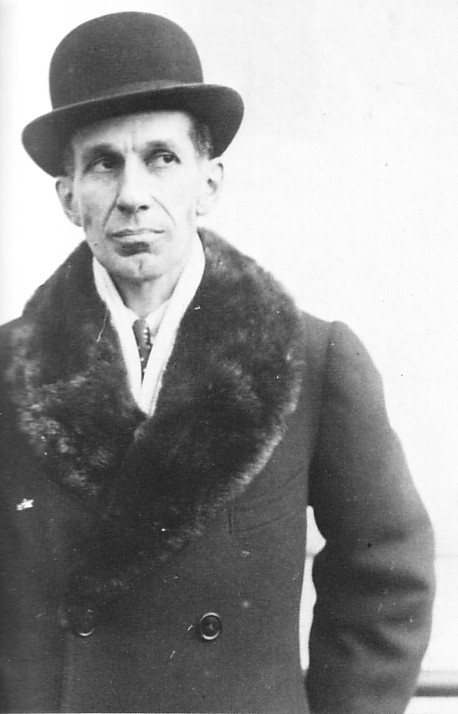
Vincent Massey
|
One of the central figures in the Rhodes network in forming the character and structure of the Canadian oligarchy, as well as the general mass culture of Canada is a man named Vincent Massey. Massey is the son-in-law of George Parkin, who, following the Darwinian edict of “breeding with the best” married his four daughters to leading Round Table and Oxford men. Massey, born into the wealthy Hart-Massey family dynasty became an early recruit to the Round Table, working alongside Canadian Round Table co-founder Arthur Glazebrook in setting up a branch in Ontario in 1911. Glazebrook admired Parkin so much that he even named his son George Parkin de Twenebroker Glazebrook, himself a Rhodes Scholar of Balliol who went on to help run this group alongside Massey by the late 1930s and would head the Canadian secret service during World War II. Arthur Glazebrook wrote a shining letter of recommendation to Milner upon Massey’s departure for studies at Oxford’s Balliol College on Aug. 11, 1911:
“I have given a letter of introduction to you to a young man called Vincent Massey. He is about 23 or 24 years of age, very well off, and full of enthusiasm for the most invaluable assistance in the Roundtable and in connection with the junior groups. … He is going home to Balliol, for a two year course in history, having already taken his degree at the Toronto University. At the end of his two years he expects to return to Canada and take up some kind of serious work, either as a professor at the university or at some other non-money making pursuit. I have become really very attached to him and I hope you will give him an occasional talk. I think it so important to get hold of these first rate young Canadians, and I know what a power you have over young men. I should like to feel that he could become definitely by knowledge a Milnerite”(18)
Upon his return to Canada, Massey quickly rose in the ranks of the Roundtable, becoming Crown Privy Councillor in 1925, then leading a delegation in 1926 at the Imperial Conference at which point his fellow Roundtabler Lord Balfour passed the Balfour Declaration as a means of appeasing the nationalist sentiment hot in many colonies striving for independence from the mother country. Massey then became Canada’s first Minister (aka: ambassador) to the United States (1926-1930), where he coordinated policy with controlling institutions around the intelligence institutions centered around the Council on Foreign Relations. During his time in Washington, Massey’s official biographer (and University of Toronto President from 1958-1971) Claude Bissel points out that he was a frequent guest in “The House of Truth”, a stronghold of Round Table ideas in the United States housing such luminaries as Walter Lipmann, Felix Frankfurter, Loring Christie, Eustace Percy, and featuring such frequent guests as Supreme Court Justice Oliver Wendell Holmes, and McGeorge Bundy.
|
House of Truth luminaries
|
||
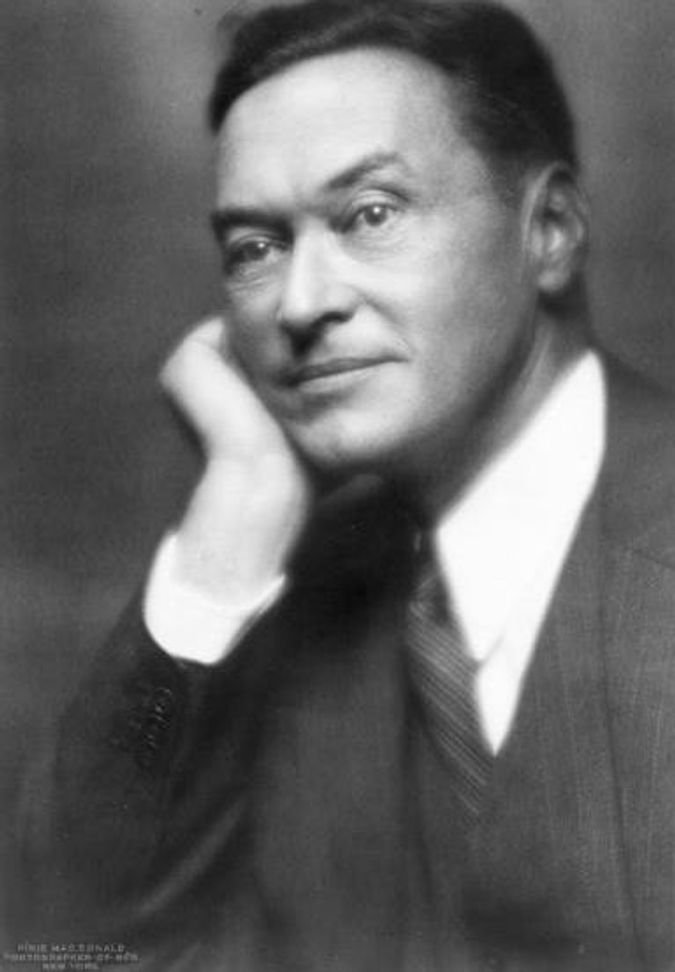
Walter Lipmann
|
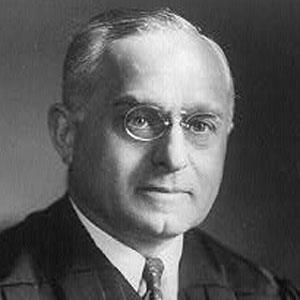
Felix Frankfurter
|
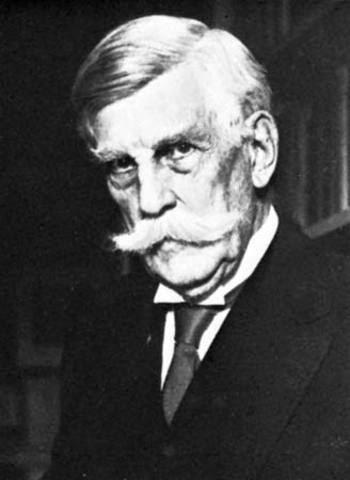
Oliver Wendell Holmes
(eugenicist) |
Most of these characters were hardcore eugenicists affiliated with the Council on Foreign Relations (the American branch of the Royal Institute for International Affairs) advancing the program of a British-led “Anglo-American Empire”. Oxford men Loring Christie, and Hume Wrong were both recruited to Massey’s staff during this period and played important roles in the postwar takeover of Canadian foreign policy. Hume’s father George Wrong was also an influential executive member of the Canadian Round Table and Massey ally.
Massey’s Washington deployment was followed by a stint as President of the Liberal Federation of Canada (1932- 1935), and then Canadian High Commissioner to London (1935-1946). It was soon after this experience that Massey was assigned to unleash the second of a series of Royal Commissions (1949-1951) dedicated to destroy any lingering sentiments of the American System within the hearts, minds, political-artistic-scientific structures or economic behaviour of Canada, and reconstruct the Canadian identity based on his own twisted image. This operation had the dual effect of relieving responsibility from the Rockefeller and Carnegie Foundations financial responsibility for crafting the Canadian identity.(19) As a token for a job well done, Massey then became the first Canadian-born Governor General (1952-1959). During his career, Massey served as Governor for Upper Canada College, and the University of Toronto, as well as founder of a university modeled on All Souls, Oxford called Massey College (f.1962). Like All Souls, Massey College serves as a central coordinating node for various operations run through the major universities in Canada.
Through his various political positions, Massey pulled every string possible to recruit as many agents of the Roundtable Movement and Rhodes Trust networks into prominent positions within the Canadian civil service, cultural control, and academia. During this same period in the United States, Rhodes scholars had swarmed into various influential positions of authority, with a special focus on the State Department, in order to prepare to commandeer Roosevelt’s New Deal program and convert it into a Keynesian nightmare at the first available opportunity. These operations resulted in a third attempt by the British Empire to achieve an agenda that had largely failed in its first two attempts between 1902 and 1933.(20) It is proper to briefly go through the first two before continuing with our report.
(17) The earliest incarnation of Canada’s “local oligarchy”, whose currents are still felt through the oligarchical structures of Canada, was named the “Family Compact”, formed officially during the War of 1812 by loyalist cliques who both left America, pre-existent loyalists from the War of 1776, and British aristocrats newly landed in Canada. Its legacy involved the creation of instruments for the imperial indoctrination of young elites such as King’s College (f.1827) and Upper Canada College (f.1829) along with the Bank of Upper Canada, all of which were run by the Compact’s leader, and Bishop for the Church of England in Canada, John Strachan. UCC was designed explicitly to be a ‘feeder school’ to King’s College (which was to take over full control of UCC in 1837 and later became re-named to “The University of Toronto”. The Compact would be forced to re-organize itself after the 1837 Rebellions of Upper and Lower Canada, led by William Lyon Mackenzie, and Louis- Joseph Papineau. Mackenzie’s grandson was Prime Minister William Lyon Mackenzie King. The re- organization of the Family Compact would result in the fraudulent Union of Upper and Lower Canada in 1840 and the promotion of the slavish belief in “Responsible Government” instead of true independence. It was from this current that George Parkin would arise.
(18) Carrol Quigley, Roundtable Group in Canada, Canadian Historical Review sept 1962, p.213
(19) Rockefeller, Carnegie and Canada: American Philanthropy and the Arts and Letters in Canada, 2005 by Jeffrey Brison demonstrates in detail the ironic role which “American” philanthropic foundations served in cultivating a largely anti-American identity for Canadians. The responsibility to fund the arts and humanities fell fully under the authority of the Canadian Government by 1957 with the creation of the Canada Council, a centralized cultural control center catalyzed by the Royal Commission on National Development in the Arts, Letters and Science (1949-1951), chaired by Vincent Massey. The first CIIA run commission was the Newton-Sirois Royal Commission of 1935- 1937, led by CIIA President Newton and was a complete failure.
(20) It is of note that this time frame is also bookended by the death of the last American System President and Lincoln follower William McKinley and the emergence into power of American System and Lincoln follower Franklin Delano Roosevelt. In the interim 3 decades, every single president, barring President Harding who died under a mysterious case of food poisoning in office, were demonstrated to have been anglophile puppets of the British Empire.
The First incarnation of the World Government agenda to supersede the principle of sovereignty as the basis for world affairs had been the Imperial Union thesis around which the Roundtable had first been created. This involved the creation of a Federation of nations united under one empire, in which representatives of various colonies could hold representatives within an Imperial Parliament, much like the European Union structure chaining nations under the Troika today. The obvious mission under this structure was the participation of the United States ruled by the “economic royalists” of whom Roosevelt said should have left the nation back in 1776. Under Parliamentary structures, little more than an illusion of democracy exists while its bureaucratic nature permits for optimal control by a ruling oligarchy.
By the end of World War I, forces within the Round Table were dreading the failure of this program, and had resolved to dedicate themselves instead to the League of Nations doctrine in its stead whereby essentially the same outcome could be achieved, but through different means. Under this changing of gears, it was arranged that the Round Table be phased out in place of something new. Two aging controllers of Milner’s Kindergarten writing to each other in 1931 laid this problem squarely on the table and even proposed a solution:
“As a brotherhood we have lost interest in the Empire and are no longer competent to deal with it. I think, therefore, that if The Round Table is to go on, it should quite definitely change its character, remove its subtitle, and become, what it is much more fitted to become at the present time, a publication connected with the Royal Institute of International Affairs… all the heart and soul of The Round Table movement is petering out and I really don’t know that we stand for anything in particular nowadays.”(21)
It was with this failure of its original blueprint in mind that the Roundtable Movement began a conversion into its new costume with the creation of the Royal Institute for International Affairs (RIIA) in 1919, followed immediately thereafter with branches in the United States under the heading of the Council on Foreign Relations and International Pacific Institute. Carrol Quigley demonstrates that the CFR and IPI featured crossovers of members from the RIIA, CIIA, while funding was provided through the Rockefeller Foundation, Carnegie Foundation and RIIA. While possessing nominally American names, these organizations and their members were fully British.
(21) Sir Edward Grigg to Hitchens, 15 December 1931, cited in The Round Table Movement and Imperial Union, by Kendle, p. 284
Both the RIIA, CFR and IPI were financed through large grants by the Rockefeller and Carnegie foundations which themselves were set up merely as financial instruments to further the British Imperial agenda at the same time the Round Table Movement was unveiled in 1910. These were two of the core foundations which had been used to finance eugenics laws and the statistics-based “scientific” premises justifying their political implementation. Quigley documents in his works the extensive array of financial support which these “philanthropic” organizations bestowed upon their London controllers.
|
Leading Laurier Liberals
|
||
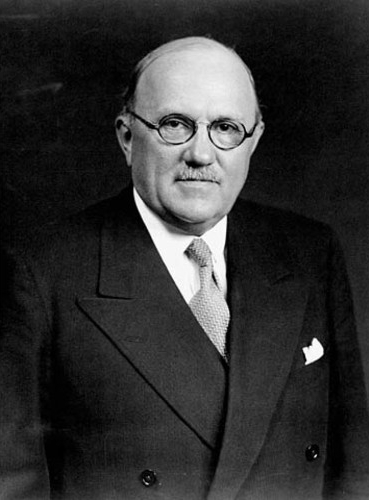
Ernest Lapointe
|
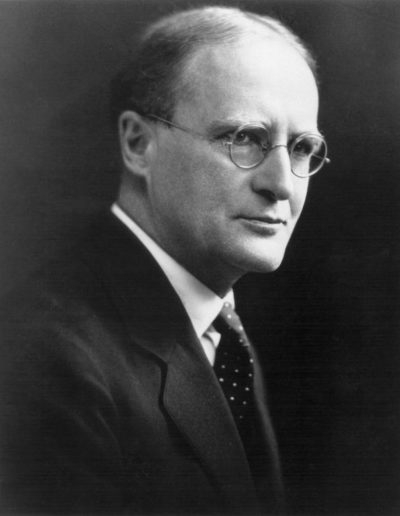
O.D. Skelton
|
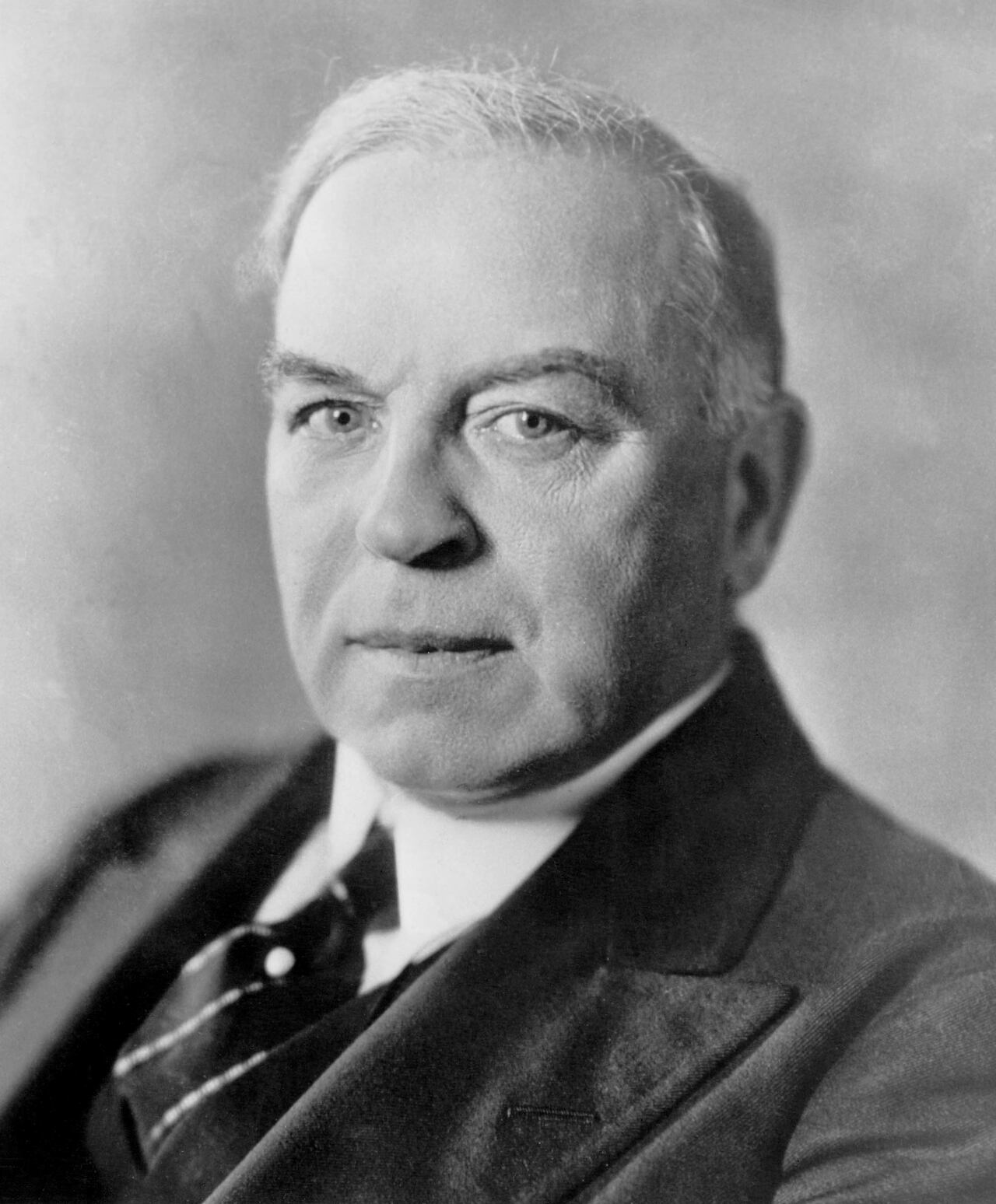
William Lyon Mackenzie King
|
Due to the regaining of power of the Liberal Party, now under the leadership of Mackenzie King, the Canadian infiltration was not happening at the pace which some RIIA operatives would have liked. In fact, due to the influence of key Laurier Liberals such as Oscar Skelton and King’s Justice Minister Ernest Lapointe in the famous Imperial Conference of 1923, the last attempt to impose the Round Table thesis for Imperial Union was defeated in that form. By 1925, Roundtable controller Philip Kerr (aka: Lord Lothian) wrote of the anti-British situation in Canada guided by Lapointe and Skelton in the following terms:
“I am afraid that things in Canada are not at present as satisfactory as they are in the United States. … I even found in places a certain feeling that it was a mistake for returned scholars to avow themselves as Rhodes scholars and that the best would be that they should merge themselves in the population and forget their unhappy past!”(22)
In 1925, O.D. Skelton, Laurier’s friend and biographer, as well as long time friend and trusted collaborator of Prime Minister William Lyon Mackenzie King, was made Undersecretary of External Affairs. It was also at this time that resistance to Rhodes Scholar penetration into guiding positions of national policy was obstinately begun.
Canadian cooperation with British foreign policy largely came undone beginning with the Canadian rejection of Britain’s demands that Canada commit its forces to Britain’s near-war with Turkey during the Chanak Crisis of 1922. In subsequent Imperial Conferences throughout the 1920s, the Laurier Liberals led by Skelton and Lapointe went on to flank and reject various attempts at binding foreign policy between Imperial Federation or the League of Nations. Collaboration with leaders of the Free Irish State against Imperial policy was key in the success of the Canadian patriots’ fending off the Round Table.
(22) Cited in Canada and the British World, by Philip Buckner, UBC Press, 2007, p.266
Massey’s biographers have commonly referenced his own frustration with Skelton whom he saw as a barrier between himself and the Prime Minister, a man who he could generally manipulate as long as no one with geostrategic insight was near him.(23) King’s increasing lack of cooperation with British Foreign policy resulted in the following quote by Massey brother-in-law, and Round Table member William Grant in 1925:
“It is very difficult to make a permanent impression on him [King] for two reasons. 1) He is as selfish a man as I have ever known, the selfishness disguised by a thick smear of sentimentalism. He will, therefore, sacrifice anyone or anything to his ambition, and then sob about it. 2) He has a mind as lacking in edge as a jellyfish. Fortunately for you he has a real fund of dignified, though rather windy eloquence, and will do little harm if given plenty of speeches to make.”(24)
The Grant quote is instructive as it provides the reader an insight into the singular character flaw of King which would taint him his entire life. That is, the pitiful fact of his “other-directedness”, such that his tendency to frustrate evil influences who wished to use him for their own nefarious ends was frequently balanced by the frustration of good influences who tried to influence him the other way. For good or for ill, King was never his own man but was, in the end, a mother-dominated mystic who could never sever his ideological affiliations with the Monarchy. He may have been a man of deep personal conviction in a higher cause… but like the poor Venetian Prince in Schiller’s “The Ghost Seer”, his convictions were never his own. After the death of Skelton in 1940, King’s neurotic insecurity would express itself in his relief to be liberated by Skelton’s domineering influence: “I have frequently been thrown off following my own judgement and wisdom in these matters by pressure from Skelton and the staff that I made up my mind I would not henceforth yield to anything of the kind.”(25) In another diary entry a year later, King wrote: “One of the effects of Skelton’s passing will be to make me express my own views much more strongly.”(26)
King’s pro-monarchist inclinations permanently schismed his modus operandi from those influences who he otherwise respected, evidenced in the following diary recordings of Skelton and King during two Imperial Conferences: “I defend ultimate independence, which he [King] opposes”, while after another conference, King later wrote: “[Skelton] is at heart against the British Empire, which I am not. I believe in the larger whole, with complete independence of the parts united by cooperation in all common ends.”(27)
(23) William Mackenzie King himself has always been a paradoxical character in Canadian history. Living under the domineering shadow of his mother’s eye (even long after her death), King was literally possessed by a drive to bring honor back to his family after his grandfather William Lyon Mackenzie, had led the thwarted Upper Canada Rebellion of 1838. King had the admirable quality of being a man possessed of a principled will and sense of divine mission on earth, yet sadly an irrational tendency to speak to his friends and family long after they had died. It was this irrationally mystical profile that was capitalized on while King had lived in London, visiting the prolific parapsychology operations and affiliated mediums run by Roundtable leaders as W.T. Stead. King’s penchant for bad judgement was manifest throughout his life, especially seen as he was hired by the Rockefeller Foundation from 1914-1918 to help John D. Rockefeller Jr. resolve problems with striking miners in the USA. It was through King’s mediation that the farcical policy of the “Company Union” was created. Skelton’s particular frustration with King’s flaky character was evidenced in a letter to his wife during the 1926 Imperial Conference when Skelton wrote: “the fact that certain other people [King] give all their time to dining and talking with ‘Lord’ this or ‘Lady’ that and to diary writing and 5 minutes a day to prepare for conference matters makes everything pretty hard.” [citation from Lapointe and Quebec’s Influence on Canada’s Foreign Policy, p. 57]
(24) W. Grant to Sir Maurice Hankey, Oct., 1925, W.L. Grant archives, vol.5, Citation from Claude Bissel’s, The Imperial Canadian vol 1. William Grant was also President of Upper Canada College, Director of the Massey Foundation.
(25) King Diary June 1940, cited in Ernest Lapointe and Quebec’s Influence on Canadian Foreign Policy by John MacFarlane, University of Toronto Press, 1999, p.124
(26) King Diary, Feb. 6, 1941 cited in Ernest Lapointe and Quebec’s Influence, p.124
(27) Skelton quote from Skelton papers, vol 11, file 1197, diary, 22 October 1923. King quote from King Diary Sept. 11, 1929. Both cited in Ernest Lapointe and Quebec’s Influence, p.55
|
Massey men establish the CIIA
|
||
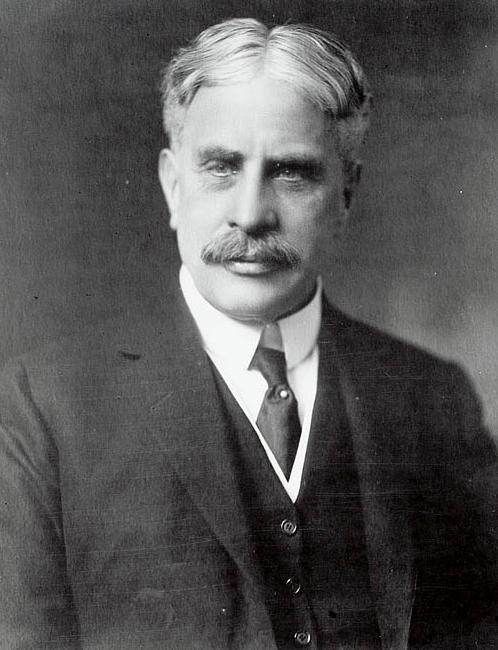
Sir Robert Borden
|
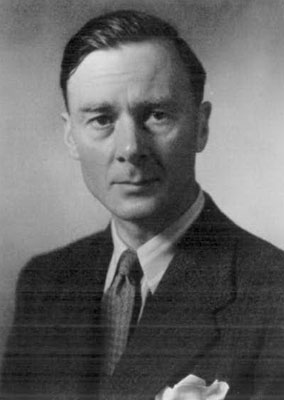
Escott Reid
|
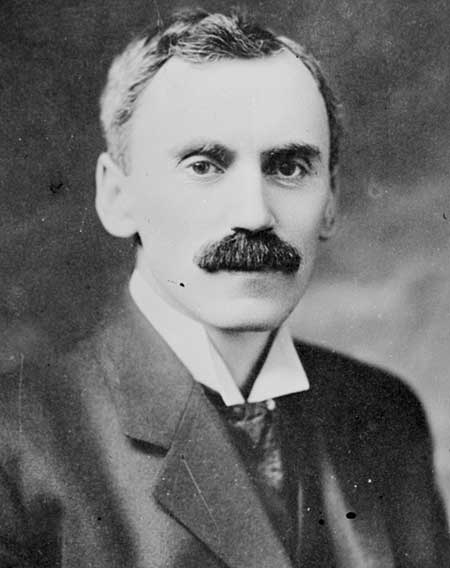
Newton Rowell
|
|
(one world government fanatic)
|
||
The Canadian branch of the RIIA (aka:’ Chatham House’) was created only in 1928, (at the same time as its Australian counterpart) largely as a response to the anti-Round Table tendencies of the Laurier Liberals upon King. The CIIA’s first President was none other than former Canadian Prime Minister and Masonic Orangeman Sir Robert Borden. Its second president was Newton Rowell, who later became president of the Canadian Bar Association, and chaired the failed Rowell-Sirois Royal Commission of 1935-1937.(28) Sir Joseph Flavelle and Vincent Massey were Vice Presidents and George Parkin de T. Glazebrook was honorary secretary. Other founding members were financier and later Conservative Party Cabinet official J.M. Macdonnell, Carnegie Foundation Trustee N.A.M. Page 13 of 56 Matthew Ehret - Origins of the Deep State Mackenzie, UCC President William Grant, Rhodes Scholar George Raleigh Parkin, financier Edgar Tarr, journalist J.W. Dafoe, and Henry Angus. Raleigh Parkin, Grant and Macdonnell also had the distinction of being brothers-in-law with Vincent Massey, and sons-in-law of George Parkin. In 1933, through a donation from the Massey Foundation (which served as a mini clone of the Rockefeller Foundation), the CIIA hired its first Permanent Secretary named Escott Reid. Reid was a Rhodes scholar fanatically governed by a commitment to world government through the League of Nations, expressed by his following remarks:
“It would be easier and more self respecting for Canada to give up to an international body on which it was represented, the decision on which it should go to war than to transfer the right to make that decision from the government in Ottawa to the government in Washington.. It would thus appear probable that effective military cooperation between Canada and the United States is possible only within the framework of an effective world order of which both Canada and the United States are loyal members.”(29)
The five years after the CIIA was established, an affiliate organization was founded called the Canadian Institute for Public Affairs (CIPA) by similar networks associated with the CIIA, in order to shape national internal policy while the CIIA focused upon Canada’s foreign policy. Original featured speakers were the CIIA’s Norman Mackenzie, and the eugenicist leader of the newly created CCF Party J.S. Woodsworth. It would be another 20 years before both organizations began to jointly host conferences together. Today, CIPA exists in the form of the Couchiching Conferences and their regular brainwashing seminars have been broadcast across the Canadian Broadcasting Corporation (CBC) for over 70 years.
The CIPA was affiliated with the YMCA, itself a major British-run indoctrination asset as it focused spreading its ideology on conferences, and workshops the world over. It was through this network that a young Maurice Strong was recruited and rose to the highest echelons of the management of the oligarchy’s affairs in later years.
(28) The Rowell-Sirois Commission attempted to centralize much of the fragmented Canadian system, modelled on effectively socialist terms. The federalizing of provincial debts and obligations was among the various proposals which attempted to mimic the outward form of FDR’s American System policies, but without any of the substance. Due in large measure to the resistance by Quebec, Alberta and B.C, this commission failed completely at achieving its agenda.
(29) Citation from Reid bio
Before FDR came to power in 1932, the United States was brought to its knees after four years of Great Depression itself induced by the blowout of a housing bubble built up artificially by British-Wall Street agents such as U.S. Treasury Secretary Andrew Mellon. It was during this time of fear and want that the American population was at its most gullible, largely accepting the propaganda that immigration and bad genes were the cause of the rampant criminality in these painful years. The vast majority of the sterilization laws passed and fascist sympathy cultivated occurred during this time of fear.
As Franklin Roosevelt rallied the population behind the battle cry “there is nothing to fear but fear itself, and kicked the money lenders out of the temple through the implementation of Glass-Steagall and the activation of public credit issued through the Reconstruction Finance Corporation. The RIIA running their networks in Canada and especially in the United States had to re-adjust their programs. The renewed faith in the powers of sovereign government in effecting progressive change by the activation of the American System principles were evaporating the belief that world government was the only option for peace to be ensured. However, change for an empire is not always easy, and after decades of investing energy into their reconquest of the United States, the British made a violent attempt to crush FDR.
A startling revelation swept through the press in 1933 with General Smedley Butler’s public unveiling of the Wall Street-backed attempt to run a coup d’état against Roosevelt using 500 000 legionnaires.(30) General Butler’s unveiling of the plan to install himself as puppet dictator was recounted in Butler’s famous book “War is a Racket.”(31) This attempted coup had occurred mere months after the thwarted Masonic-run assassination plot to kill FDR which resulted in the killing of Mayor Cermak of Chicago.
As Pierre Beaudry reported in his study on the Synarchy: “It was not a mere coincidence that, at the same time the British promoted the Nazis in Europe, in 1934, the synarchist Lazard Freres and J.P. Morgan financial interests in the United States were staging a similar fascist dictatorial coup against Franklin D. Roosevelt, using the same disgruntled Veterans of Foreign Wars groupings with operatives from the French Croix de Feu deployed to the United States. They ultimately failed to capture the leadership of General Smedley Butler, who ended the U.S. plot by publicly denouncing the conspiracy as the fascist coup that it was.”(32)
After having failed miserably in applying aggressive fascism in America, as was being done in Europe as the “solution” to the economic woes of the depression orchestrated by agents of the British Empire on Wall Street, the Rhodes networks decided that the only chance to defeat FDR was through the old Fabian method of infiltration and co-option. Every attempt was made to infiltrate New Deal institutions at all costs such that their full co-opting could occur relatively seamlessly upon the first opportunity of Roosevelt’s fall from power. For this, leading Fabian Society eugenicist John Maynard Keynes’ theories were used to first mimic the outward form of Roosevelt’s program without any of the substance.
(30) General Smedly Darlington Butler, War is a Racket, Roundtable Press Inc., 1935
(31) “I appeared before the Congressional Committee, the highest representation of the American people under subpoena to tell what I knew about activities which I believe might lead to an attempt to set up a fascist dictatorship… the upshot of the whole thing was that I was to pose to lead an organization of 500 000 men which would be able to take over the functions of government” -Gen. Smedley Butler, November 1933. Video extract is viewable on https://www.youtube.com/watch?v=2pSOekHA8OQ
(32) Pierre Beaudry, Synarchy Movement of Empire Book II, p.50
|
Left-Wing Fascism Blossoms in Canada: The League for Social Reconstruction
|
||||
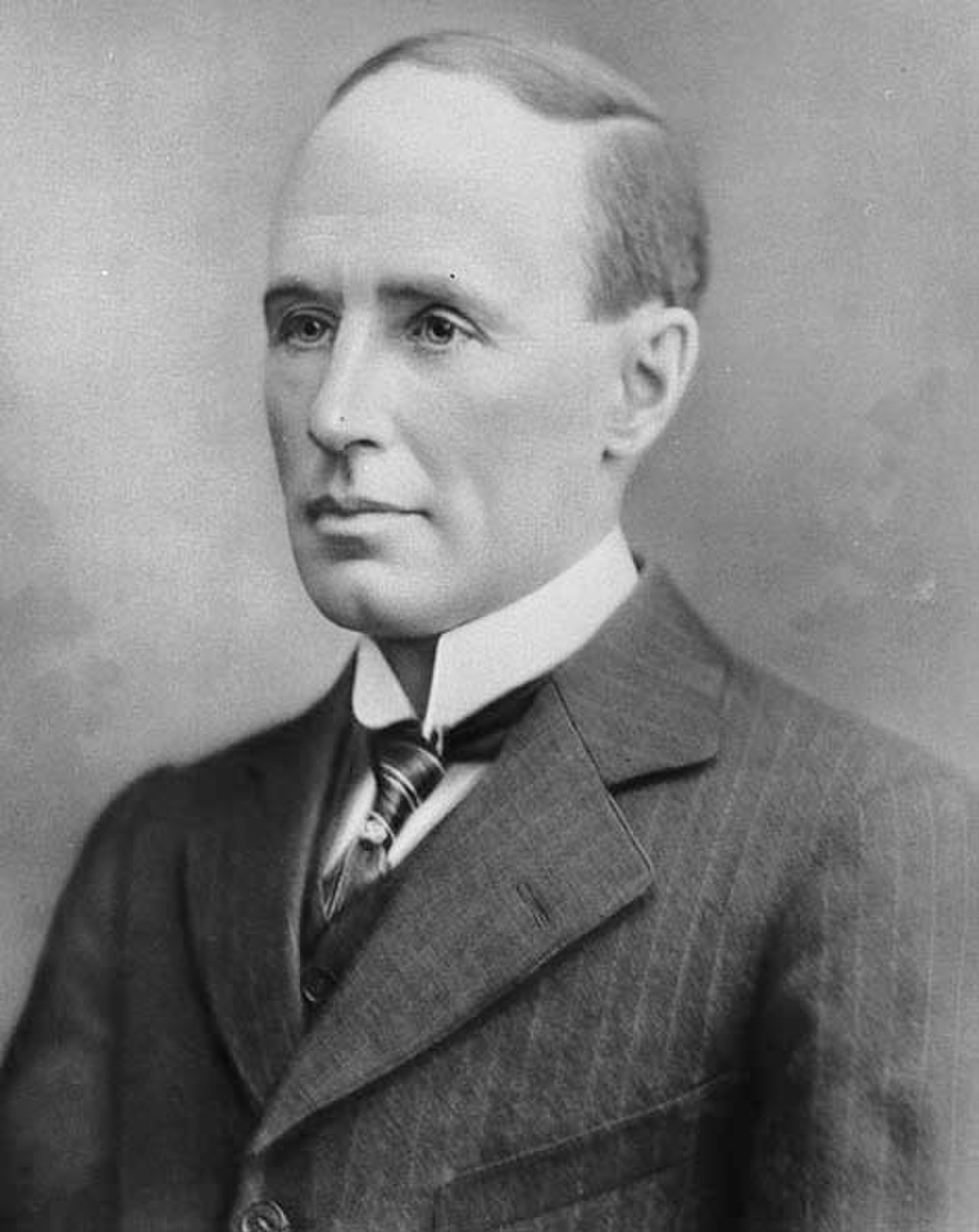 |
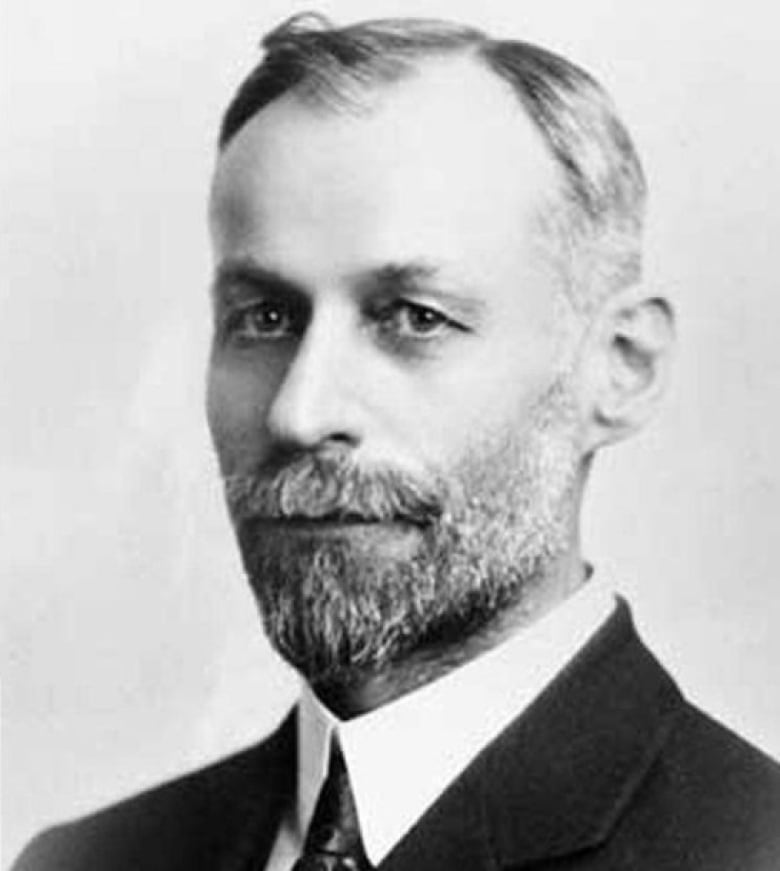 |
 |
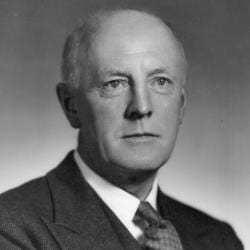 |
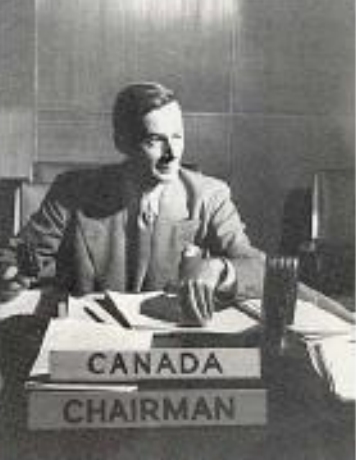 |
|
The Rhodes Trust Sets up the Canadian Fabian Society (left to right: Eugene Forsey, J.S. Woodsworth, F.R. Scott, Frank Underhill and Escott Reid).
These founders of the League of Social Reconstruction went on to create the Cooperative Commonwealth Federation (now the New Democratic Party. In the function of Quebec-based CCF leader, F.R. Scott was an early controller of a young Pierre Elliot Trudeau) |
||||
Just as Roosevelt was coming to power in America in 1932, the Rhodes Trust networks of Canada centering on Escott Reid, Frank Underhill, Eugene Forsey, F.R. Scott, and David Lewis founded a self- described “Fabian modeled think tank” customized for Canada known as the League for Social Reconstruction (LSR). Reid, Forsey, Scott and Lewis were all Rhodes Scholars while Underhill was an Oxford trained Fabian who was tutored by Harold Laski and G.B. Shaw at Balliol College. The avowed intention of the group was to institute a system of “scientific management of society” under Fabian precepts and expressed itself in the group’s selecting of J.S. Woodsworth, another Oxford- trained Fabian, to head the new Cooperative Commonwealth Federation (CCF) as an outgrowth of the LSR. The CCF called for the complete destruction of capitalism in its Regina Manifesto of 1933. Woodsworth, an avowed eugenicist, vigorously endorsed the passage of Alberta’s 1927 sterilization laws to eliminate the unfit (32). Following the gospel of his Fabian mentors H.G. Wells and G.B. Shaw, Woodsworth even advocated the abolishment of personal property. At its heart the CCF was not your typical “socialism”, but merely fascism with a “scientific” socialist face.
Knowing that a fearful mob tends to fall into extremes, the CIIA’s creation of a new polarized left and right did not produce the result as it should have. Under the logic of empire, the abysmal failure of the “right” wing conservative party of Prime Minister R.B. Bennett (1930-1935), should have created the conditions for a radical left turn by the time the CCF had been formed. Unemployment was over 25%, money tightening policies were choking what little production still existed and Bennett’s typically anti- American Tory stance was blocking any potential for increasing trade with the United States.
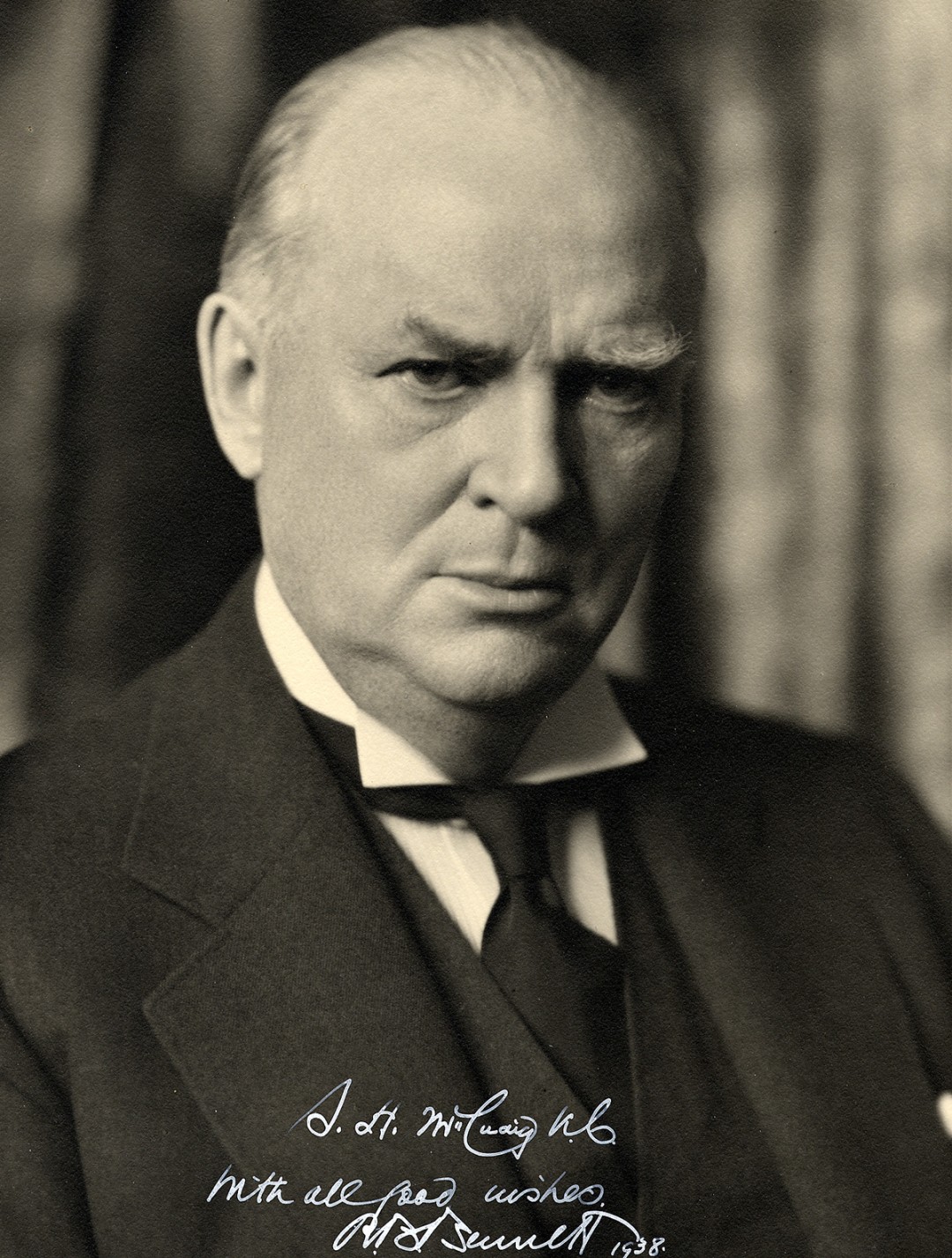
Prime Minister R.B. Bennett would end his days as Viscount Bennett in England
|
But something wasn’t working for the Empire’s agenda. While the political seeds for a “scientific socialist” world government were being planted on pace in Canada, the cultural fear and despair necessary for such programs to take root willingly by the choice of the masses were no longer in place. Indeed, the Canadian population was so inspired by the weekly Roosevelt Fireside Chats broadcast across the border, scattered with newspaper reports of inspiring New Deal projects, that hope for a better future and a national solution to the chaos of the Great Depression was close enough at hand such that no great polarization could occur. As such, the blind acceptance of a Woodsworth-CCF scientific dictatorship run by agents of Rhodes’s nightmare was avoided.
FDR’s power in the minds of the Canadian population forced even the radical anti-American blue-Tory Government of R.B. Bennett to eventually adapt to the language of the New Deal by trying to copy the U.S. program in a last ditch effort to save the 1935 election. This Delphic program was known as Bennett’s “New Deal for Canada” platform. The platform was a failure, as the program laid out by Bennett had two grave errors:
1) Promoting a vast array of social welfare proposals (ie: minimum wage, health insurance, unemployment insurance, expanded pension plan, minimum hours for the work week) but lacking any large scale nation building measures which defined the American success and gave meaning to the welfare measures, the Bennett knock-off simply copied the form without any of the substance of the true New Deal. The closest approximation to infrastructure programs involved slave labour driven “work camps” paying 25 cents per day which used and abused young desperate men so that piecemeal roads and patchwork building could occur devoid of any national mission.(33)
2) The national credit system employed by Roosevelt through his understanding of American System thinkers as Alexander Hamilton and Abraham Lincoln was entirely absent from the mind of Bennett and his civil servants. While the creation of the Bank of Canada modeled on the privatized system of England’s Central Bank, was established in 1935 after an extensive Royal Commission run by Lord Macmillan (begun in 1933), its constitutional and structural mandate was designed to merely centralize control for the management of already existent wealth under the control of monetarist/accounting principles… not the creation of new wealth. This institution was designed as inherently monetarist/Keynesian, NOT Rooseveltian. Without a proper American styled credit system in place which tied credit to the increase of the productive powers of labour, then any large investments, even the superficial ones proposed by Bennett’s New Deal were doomed to failure. After the Conservative Party’s 1935 decimation at the hands of the Liberals, Bennett soon retired permanently to Britain, accepting a title of nobility as Viscount.
With a revival of the American System under Roosevelt, we can see why the Canadian culture was not induced to fall into the spider web set by London. However we have yet to explain how the CIIA/Rhodes Trust networks were prevented from fully taking over control of Canada’s foreign policy during the remainder of the 1930s.
(33) Little known today, Alberta was the first Canadian province to pass sterilization laws in 1927 (the other being British Columbia which did the same in 1932). These provinces followed the 32 American States which had done the same beginning with Indiana in 1909.The promotion of their passage, the financing of the statistical based science promoting them was funded by the two biggest “philanthropic” organizations in the world: The Carnegie Foundation and the Rockefeller Corporation. Neither organization was truly American however, and were merely doing the bidding of their London masters. Later, another LSE trained Fabian named Tommy Douglas replaced Woodsworth as the leader of the CCF. Tommy Douglas, the father of Canadian universal healthcare, was a devout eugenicist, writing his 1933 masters thesis on “Problems of the Sub-Normal Family” while studying at the Fabian run London School of Economics. Most defenders of Douglas applaud him for having dropped his pro-eugenics philosophy after visiting Nazi Germany in 1936 and evidenced by the fact that Premier Douglas did not implement proposed 1944 sterilization laws in Saskatchewan when the opportunity arose. This defense is ill-founded, as eugenics was already deemed too hot to push publicly, evidenced by the pro-eugenics blueprint which Julian Huxley’s 1946 founding document of UNESCO lays out [see pg. 39 for exerpt]. The Universal Healthcare reform carried out by Douglas has a much darker intention which must be re-evaluated under this new light. More on this subject can be found in A Race of our Own: Eugenics and Canada 1894-1946 and in the appendix to this report.
On October 1935, the Liberals still under the leadership of Mackenzie King returned to power in Canadian politics attempting to gain a foothold amidst the two British controlled extremes of the left- wing CCF and right-wing Conservatives. At this point, Vincent Massey left his three year post as President of the Liberal Party to occupy his new position as the High Commissioner to Britain bringing into his staff such Oxford protégés as Lester B. Pearson as his personal secretary, as well as Rhodes Scholars George Ignatieff and Escott Reid. While most modern historians (often affiliated with the CIIA such as John English and Jack Granatstein(34) have held that the influx of Oxford men into the Department of External Affairs (DEA) was catalyzed by O.D. Skelton, the evidence demonstrates that none other than Vincent Massey himself and the CIIA networks were the true leaders in this process against the better intention of O.D. Skelton. The popular thesis cooked up by Granastein and his ilk, has merely been a mythology maintained in order to hide Canada’s true nation building heritage from present generations, as the following evidence will demonstrate.
While the CIIA had built up a large array of high level intellectuals which had successfully installed themselves at controlling nodes of all major universities across Canada, unlike its counterparts in the United States or Britain, the CIIA had been unsuccessful at permeating the Department of External Affairs (DEA). This was caused in large measure by the return of Oscar Skelton as Undersecretary of the DEA working alongside the Minister of External Affairs Mackenzie King. King was the only Prime Minister to occupy both posts simultaneously in Canadian history. Historian Adam Chapnick describes the suspicions of King and Skelton to CIIA infiltration in the following terms:
“He shared his prime minister’s suspicions of Britain’s political leadership and had never forgotten that following the British blindly into battle in 1914 had nearly destroyed his country. … Skelton became the leader of “the isolationist intelligentsia” in the East Block.”(35) This distrust was demonstrated in the words of the Prime Minister, who spoke to the Canadian population after the Imperial Conference of 1937 saying: “Those who looked to the conference to devise and formulate a joint imperial policy on foreign affairs defense or trade will find nothing to fulfill their expectations”.(36)
As chaos began to spread and the echoes of war could be heard, cracks began to appear in Skelton’s policy of keeping the CIIA nest from taking over Canadian foreign policy. In a diary entry of May 20, 1938, Skelton wrote the following ominous words:
“The British are doing their best to have the Czechs sacrifice themselves on the alter of European peace… apparently the French are softening in resistance. The Prime Minister said in council there seemed almost unanimous recognition of (the) impossibility of our staying out if Britain goes in: my 14 years effort here wasted”.(37)
Chapnick describes the irony of the RIIA’s success in coordinating post war planning through the British Foreign Office as early as 1939, yet was unable to make any headway for similar planning in their Canadian branch:
“While Mackenzie King was bracing his country for the possibility of war, the RIIA’s world-order preparatory group held its first meeting at Chatham House on 17 July 1939. The discussion emphasized the importance of maintaining the rule of law in international relations. Unlike the CIIA, which struggled to be heard in Ottawa through much of 1941, the RIIA had already established close links to the government in London. Its impact was evident in October 1939 when Lord Lothian [aka: Philip Kerr], the British ambassador in Washington, alluded publicly to a future global federation. His comments foresaw an international order in which regional organizations would police the world under the umbrella of a unifying executive body.“(38)
Historian Denis Stairs relates Philip Kerr`s frustration with Skelton`s influence on Mackenzie King when he wrote that “Kerr once pointedly observed to Vincent Massey that it “would be better if Skelton did not regard co-operation with anyone as a confession of inferiority”. Massey reported later in his memoirs that he agreed with the assessment.“(39) Massey, an enemy of Skelton since the 1923 Imperial Conference referred to Skelton in his diaries as “Herr Doktor Skelton”.
Upon the mysterious deaths of O.D. Skelton and Ernest Lapointe in 1941,(40) the gates holding back the CIIA’s hordes began to be lifted as Massey’s young recruit Norman Robertson (a Rhodes Scholar), was quickly installed as Skelton’s replacement as Undersecretary of External Affairs. With this veritable coup, things quickly changed for the CIIA’s role in shaping Canada’s foreign policy. Chapnick describes the situation in the following terms:
“Ironically, just as the CIIA abandoned its faith in the Canadian government, Norman Robertson finally began to mobilize the Department of External Affairs. Since wartime restrictions prevented him from hiring the additional staff necessary to pursue an internationalist agenda in the traditional way, he sought temporary help from his former academic colleagues. Himself a University of British Columbia graduate, Robertson first asked the professor of political science and economics Henry Angus to move to Ottawa and assume the position of departmental “special assistant.” Angus was a member of the CIIA and had studied the Versailles settlement in depth.
“He was expected to contribute constructively to postwar discussions. George Glazebrook, known to Pearson from the History Department of the University of Toronto, soon joined him. Glazebrook had sat on the CIIA research committee that had been tasked with looking into the shape of the postwar world. In all, approximately twenty university professors eventually worked for External Affairs during the war, nearly all of whom had direct or at least indirect ties to the CIIA. The recruitment of these academics created a planning infrastructure within the Canadian civil service that was similar to those already established in Great Britain and the United States. Two years after the Anglo-American process of planning the postwar order had started, Canada was finally taking its first small step forward.”(41)
With the takeover of Canada’s foreign policy-making apparatus in the Department of External Affairs by the CIIA, Canada’s new program of the “Third Way” was set in place by the likes of Escott Reid, Lester Pearson, and later Pierre Elliot Trudeau. Under this program, Canada’s role in the post War world serve as a counterweight to the bipolar cold war dynamic of Mutually Assured Annihilation. Wherever possible Canada would disrupt America by befriending Communist Countries, while Britain’s Delphic foreign policy became one of closely mimicking USA. The Third Way was described later by Pierre Trudeau when asked of his foreign policy approach as “the creation of counter- weights”. All this was done not for interests of Canada, a nation whose birth had become tragically aborted but in the service of the British Empire.
(34) See Rick Sander’s The Ugly Truth of General McNaughton for more on the Canadian slave labour camps in The Canadian Patriot #5, 2013
(35) Jack Granatstein serves as Rowell Jackman Resident Fellow of the CIIA, while John English served as the CIIA Vice President from 1988-1990 and President from 1990-1992. W.L. Morton, another major authority on this segment of history is a Rhodes Scholar whose works have been published by the CIIA. Ironically (but lawfully) Anti-American Tory historian Donald Creighton’s career was largely funded directly by continuous grants from the Rockefeller Foundation until that burden was relieved by Vincent Massey’s British modelled Canada Council in 1957.
(36) Adam Chapnick, The Middle Power Project: Canada and the Founding of the United Nations, UBC Press, 2005, p.9
(37) Bruce Hutchison, The Incredible Canadian, Hunter Rose ltd., Toronto, 1959, pg.229
(38) O.D. Skelton Archive, Diary entry, Friday May 20, 1938, vol. 13, MG30D33
(39) Chapnick, Ibid. p.9
(40) Denis Stairs, The Menace of General Ideas in the Making and Conduct of Canadian Foreign Policy
(41) Skelton died in a car accident in January 1941 while Ernest Lapointe died in November 1941. Both men had a profound influence on King, and resisted Canada’s early involvement in the war, as it was understood by both to be another case of British intrigues gone awry.
“As between the three possibilities of the future: 1. Closer Imperial Union, 2. Union with the U.S. and 3. Independence, I believe definitely that No. 2 is the real danger. I do not think the Canadians themselves are aware of it... they are wonderfully immature in political reflection on the big issues, and hardly realise how powerful the influences are... On the other hand, I see little danger to ultimate imperial unity in Canadian ‘nationalism’. On the contrary I think the very same sentiment makes a great many especially of the younger Canadians vigorously, and even bumptuously , assertive of their independence, proud and boastful of the greatness and future of their country, and so forth, would lend themselves, tactfully handled, to an enthusiastic acceptance of Imperial unity on the basis of ‘partner- states’. This tendency is, therefore, in my opinion rather to be encouraged, not only as safeguard against ‘Americanization’, but as actually making, in the long run, for a Union of ‘all the Britains’.”(1)
- Lord Alfred Milner, 1909
(1) Milner to J.S. Sanders, 2 Jan. 1909 cited in “The Round Table Movement and Imperial Union” by John Kendle, University of Toronto Press, 1975, p.55
Canada’s history has remained clouded in misinformation and outright lies for over 200 years, while basic truths which were once well understood by leading statesmen in Canada a century past are now treated as little more than myth or “conspiracy theory”. Yet as the above quote written by the pen of Lord Alfred Milner indicates, the crafting of the Canadian identity has been bought for the price of a national soul. The greatest obstacle to Canadian sovereignty today is found in the fact that Canada’s synthetic identity has been constructed over the past decades with the intention of obstructing the establishment upon this earth of a world of sovereign republics, which was and still is the outgrowth of the success of the American Revolution. To do so, we must investigate how the Anglo Dutch oligarchy has played through such institutions as the Rhodes Trust, Fabian Society, and Round Table Movement. These structures have played a key role in mis-shaping every key standard of economic, political, cultural and scientific behaviour which defines the Canadian System and associated identity to this day.
Part one of our story focused upon the creation of these institutions, and their methods of penetrating their networks throughout influential institutions of Canada from 1865 to 1943, and the evolution of the Round Table into the Royal Institute for International Affairs (RIIA) in 1919. American branches were created in 1920 with the Council on Foreign Relations and Institute of Pacific Relations, while a Canadian branch was established in 1928 with the Canadian Institute for International Affairs (CIIA). Key Canadian patriots resistant to the RIIA’s plans were also introduced in the form of “Laurier Liberals” O.D. Skelton and Ernest Lapointe, both of whom aided in influencing the highly malleable Prime Minister William Mackenzie King towards the Canadian nationalist cause, greater cooperation with American Patriots such as Franklin Roosevelt and away from the RIIA’s plans for world government under the League of Nations. With the mysterious deaths of Skelton and Lapointe in 1941, all such resistance melted away and Canadian foreign policy become fully infected by Rhodes Trust/ Fabian agents of the CIIA.
This second segment will address the important 1943-1972 destruction of humanist potential leading up to the reforms implemented by CIIA-assets Lester B. Pearson and Pierre Elliot Trudeau in their role in advancing Milner’s program for a new synthetic nationalism.
By the end of the war, Canada’s productive capacity had risen to unimaginable heights and the vision of unbounded progress free of imperial monetarism was not far off from realization. The relationship between Canada and the United States was at an all time high, with exploding trade, and purchasing power that had multiplied threefold from 1939 to 1956. The authority and power won by C.D. Howe was continued into the following 12 years of Canadian progress first, as Minister of Reconstruction (1944-1948) then as Minister of Trade and Commerce (1948-1957). When Howe realized that his resistance to Canada’s participation in the unjust Korean war of 1950 would not work, he changed gears, and took advantage of the situation by renewing his broad war powers, once again allowing himself to lead Canada’s economy top down, resulting in the great projects with America such as the St Lawrence Seaway, the Avro Arrow CF-105 supersonic interceptor, the TransCanada-U.S. natural gas pipeline and especially the civilian use of nuclear power shaped by Canada’s unique CANDU technology.(2)
 |
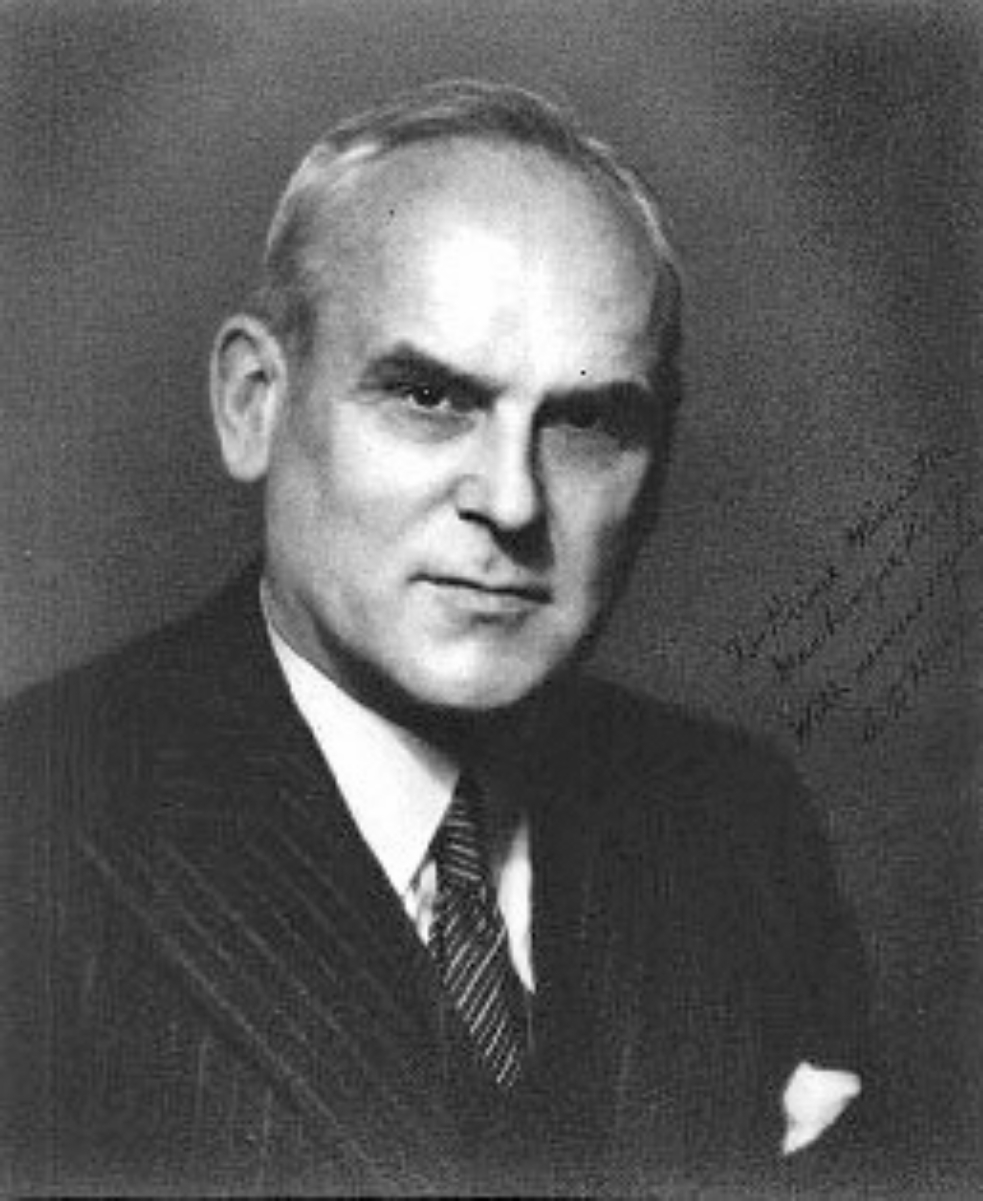 |
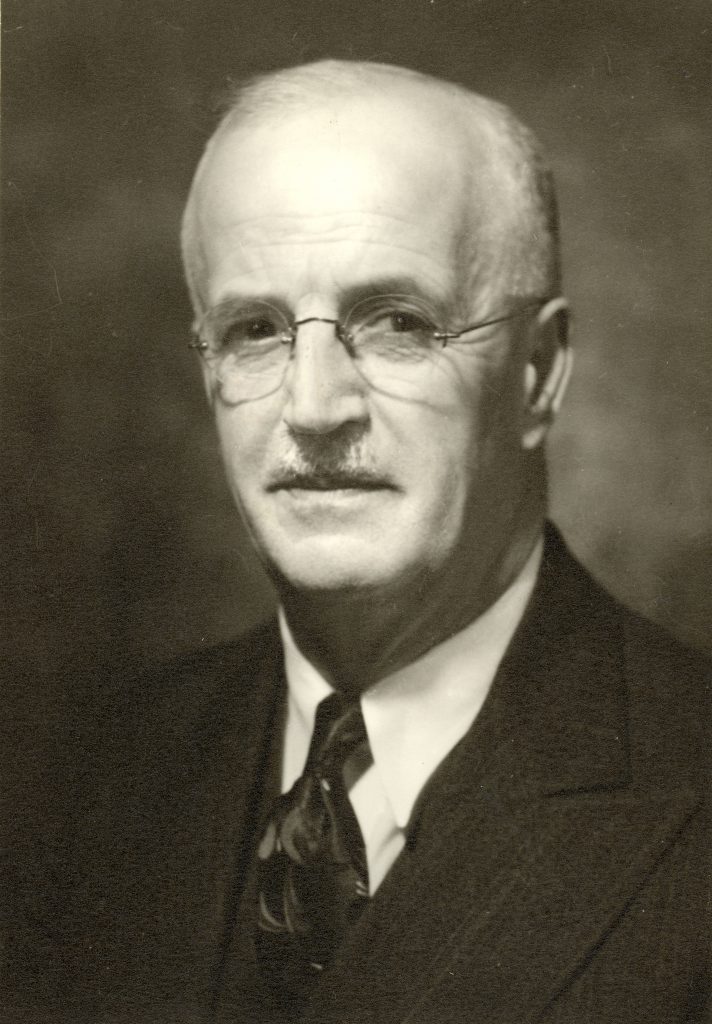 |
|
The amazing rise in Canada's productive powers of labour by the end of WWII
were largely due to the scientific leadership of the founders and managers of the NRC and AECL such as E.W.R Steacy [left], C.D. Howe [middle] and C.J. Mackenzie [right] |
||
The secret to Canada’s progress during and after the war continued to be the National Research Council (NRC), re-organized and rehabilitated after years of incompetence under its former President General Andrew McNaughton. The NRC was a flexible top down organization run by one of Howe’s brightest engineering students C.J. Mackenzie who went on to become the first President of Atomic Energy Canada Ltd (AECL).
With similar mission-oriented organizational structures having organically formed in the USA during war, the NRC was celebrated and studied as a model for countries the world over. The leaders of this institution fought not only to advance nuclear power in Canada in order to escape the limits of fossil fuels and accelerate the next breakthrough to thermonuclear fusion, but also led the fight to provide their technology to underdeveloped countries such as India and Pakistan which were yearning to break free of their British colonial masters.(3) The NRC also successfully led breakthroughs in radio astronomy, oceanography and industry. Its basic objective can be summarized in the following model:
- Maximize the density of discoveries within a cross country system of self-financed and self- organized intramural NRC laboratories.
- Translate those discoveries into new technological applications and machine tools.
- Apply these technologies as efficiently as possible into the industrial productive system to increase the productive powers of labour.
- Force university curricula and behaviour to adapt by such creative upshifts as quickly as possible ensuring that no fixed/formulaic patterns of thought could encrust themselves upon the minds of students or professors.
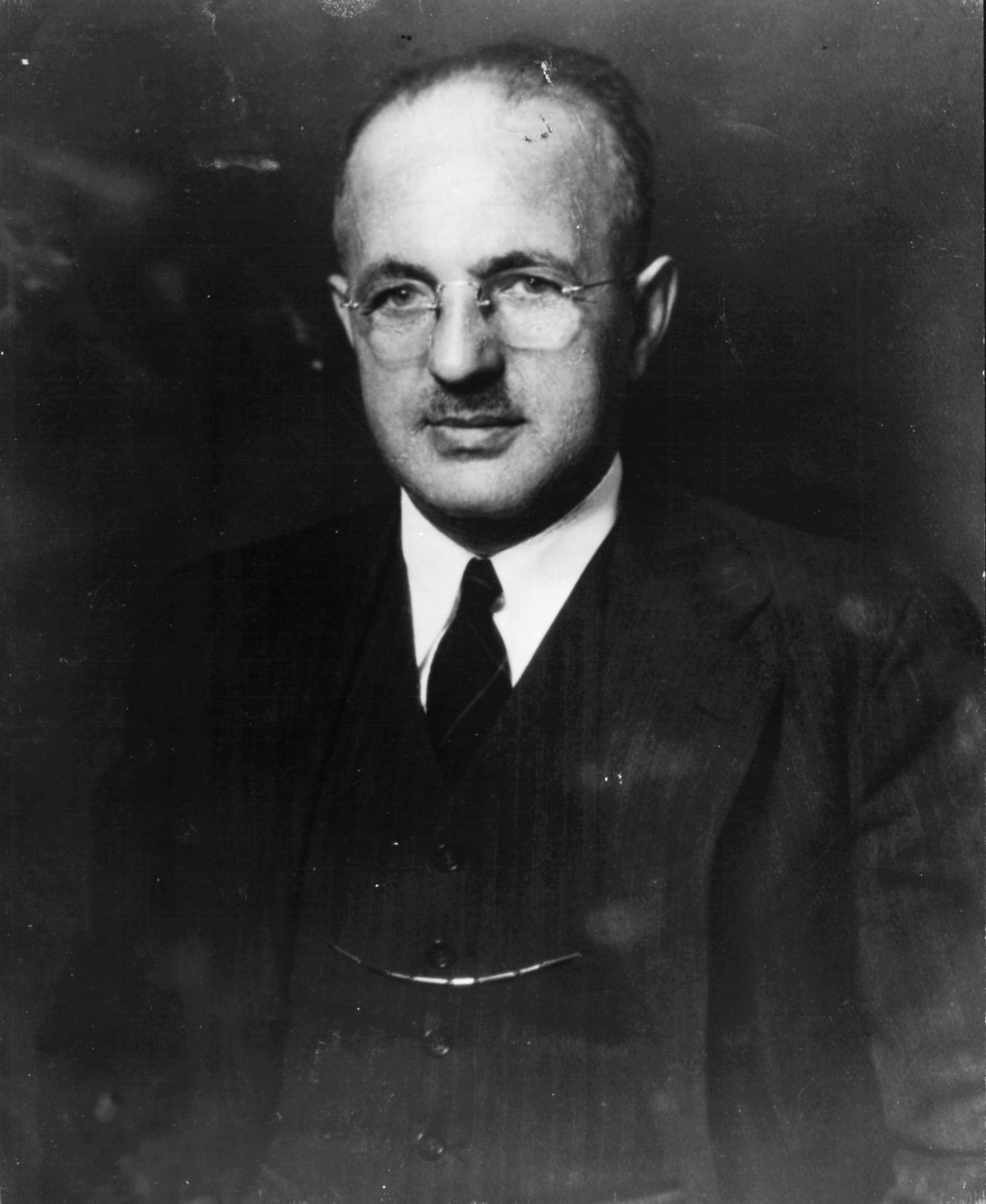 |
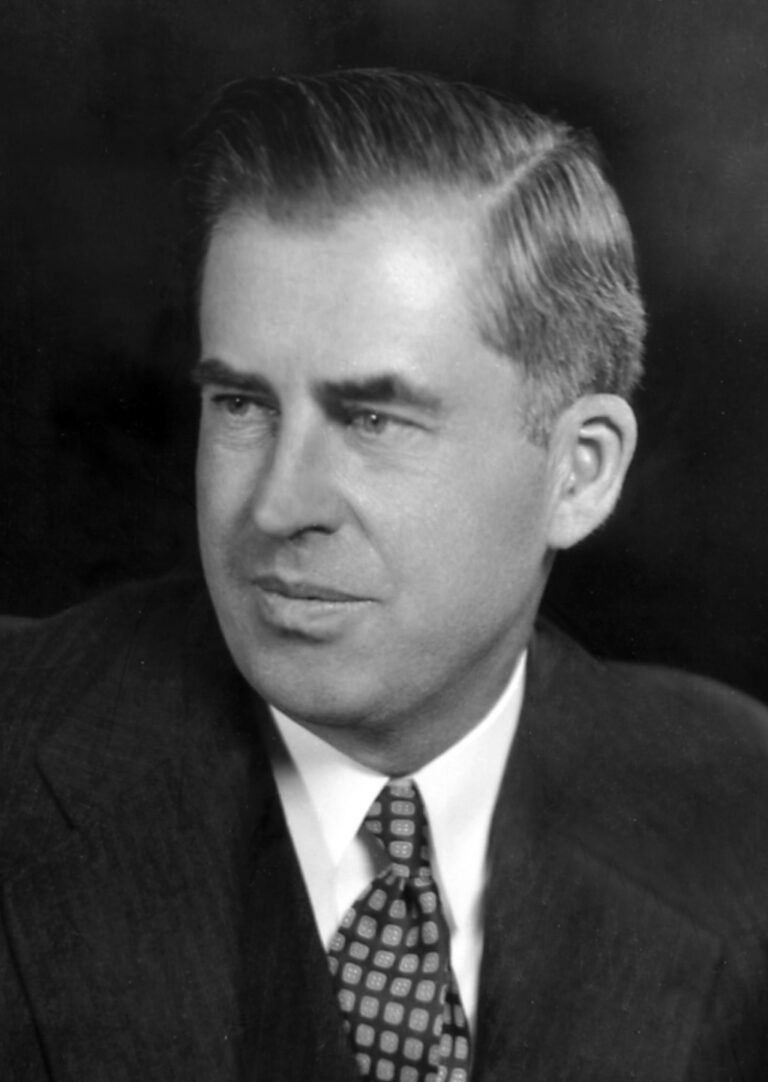 |
|
Harry Dexter White [left] and Henry Wallace [right]
were among the targets of Mccarthy's "socialist" witch hunt during the Cold War |
|
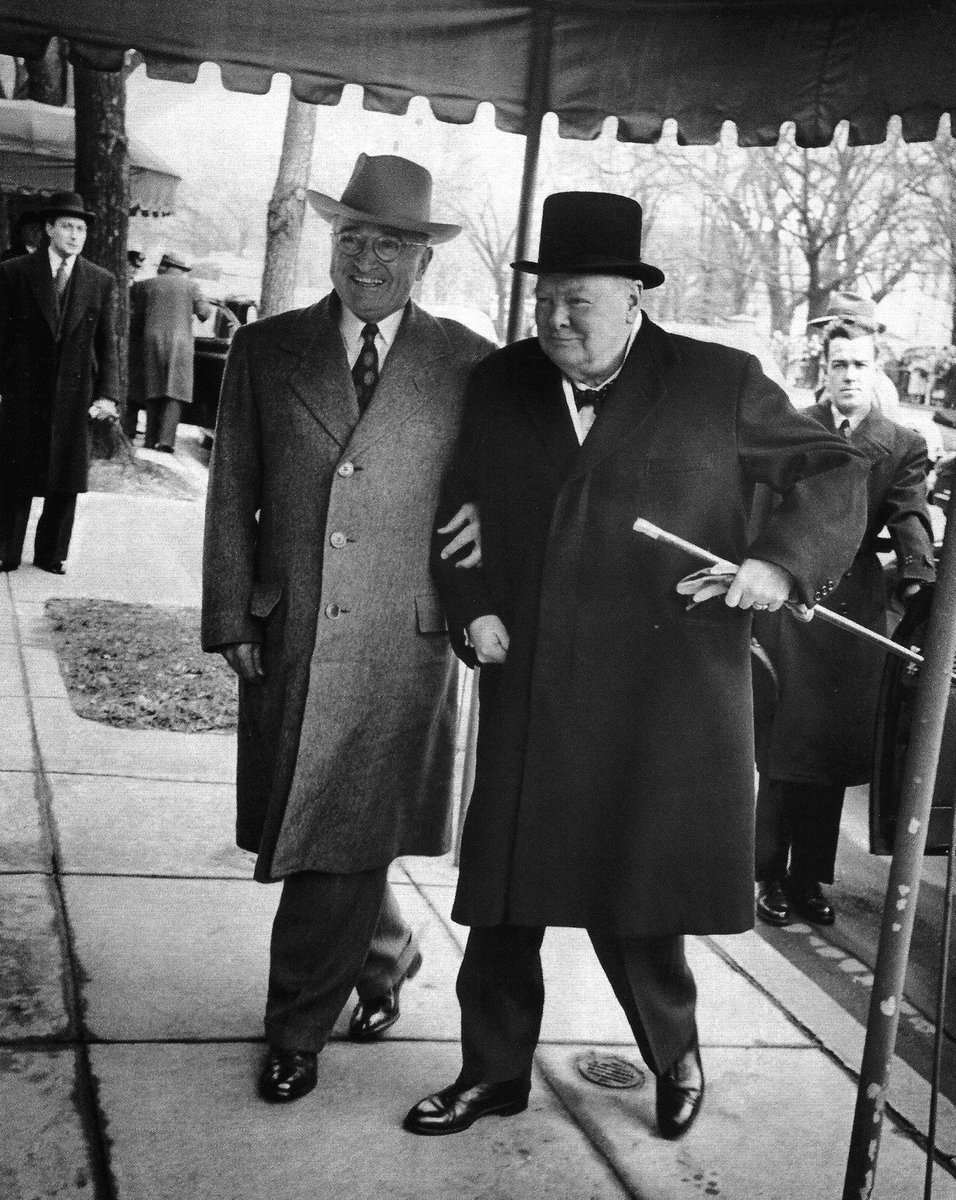
Here Anglophile President Harry S. Truman walks
in gleeful bliss with his handler Sir Winston Churchill |
|
The Cultural/Economic/Scientific factors of Canada’s post-war dynamic were on a new trajectory of true independence, founded on a commitment to progress which the British Empire now mobilized all of its energy to destroy. The great fear of Lord Milner laid out in 1909 of “union with the United States” guided by unbounded scientific and technological progress was now underway, peaking with a 1948 call for a North American customs union advocated by Howe and leading FDR statesmen in the United States that had not yet been purged by the Cold War witch hunt led by Senator McCarthy. Sadly, now under the vast influence of the British Empire’s mind control, one of Mackenzie King’s last acts in office was the destruction of this proposition. After King’s 1950 death, C.D. Howe continued on as Minister of Trade and Commerce under King’s successor Louis St. Laurent (1948-1957).(4)
Having ensured that FDR’s postwar vision for a world of sovereign nation states would not come to fruition after his untimely death in April 1945, the first of a series of ideological barrages was hammered into Canadian and U.S. policy beginning with the installation of Wall Street tool Harry Truman as President, and with him the advent of the “Truman Doctrine” centering on the Rhodes-Milner agenda of Anglo-American Empire guided by Churchill’s design of “British brains and American brawn”. While FDR was still alive, his allies led by Harry Dexter White and Henry Wallace were capable of fending off John Maynard Keynes’ attempts to structure the Bretton Woods agreements according to his own twisted logic of a one world currency steered by the Nazi affiliated Bank for International Settlements and Bank of England (of which Keynes was a Director). However, after FDR’s death, the last major beachhead of resistance to British recolonization melted.
The Anglo-American “special relationship” was quickly established by Truman bringing American foreign policy quickly under the control of the RIIA networks beginning with Truman’s unnecessary utilization of two of America’s only three nuclear bombs on the already defeated Japan which set the foundations for the Korean War.(5) This policy was ushered in by Sir Winston Churchill’s 1946 “Iron Curtain” speech in Fulton, Missouri which officially opened the age of the Cold War, setting a fear based dynamic of tension that resulted in a purging of FDR allies from positions of influence, and an influx of British operatives into high prominence the world over.
(2) CANDU stands for CANadian Deuterium Uranium reactors which use heavy water (in which each atom of oxygen is combined with two atoms of the heavy isotope of hydrogen, deuterium) to slow the fast moving neutrons enough for appreciable absorption and splitting of the nuclei of unstable (“fissile”) isotopes such as uranium-235, without the need to enrich the uranium-235 above its low natural abundance of 0.7 % relative to the non-fissile uranium-238. The absorption of neutrons by the nuclei of relatively stable “non-fissile” isotopes, such as the much more abundant isotopes uranium- 238, or thorium-232, transmutates these heavy elements into the chemically distinct but fissile isotopes, plutonium-239 and uranium-233, which vastly expand the potential of nuclear power for mankind.
(3) Canadian scientists such as C.J. Mackenzie and E.W.R. Steacy were integral in shaping the Colombo Plan which served as a conduit in its early days for technology transfers to underdeveloped countries. After America, Canada was the 2nd country in the world to have civilian nuclear power in the form of its NRX research reactor. In the context of President Dwight Eisenhower’s 1953 “Atoms for Peace” program, Canada provided large scale transfers of its nuclear technology to developing countries., first to India, with a contract signed in April 1956 with the CIRUS research center (constructed in 1960), and then soon after to Pakistan with the Karachi Nuclear Power Plant design supplied by G.E. Canada in 1966. Canada helped India construct two other reactors named RAPP-1 and RAPP-2, but contracts were soon ended for decades due to the creation of nuclear weapons by both countries as an effect of British-manipulated conflict. By the late 1960s, the emphasis on development was shifted from technology sharing and real nation building, towards external monetary aid, and “appropriate technologies” that wouldn’t change the supposed “fixed cultural patterns” of indigenous peoples. In Canada this imperial re-orientation was overseen by Sir Maurice Strong who was assigned to create the Canadian International Development Agency (CIDA) in 1968 for this purpose.
(4) St. Laurent and Howe attempted to keep Canada’s dynamic of growth and close relations with the United States as strong as possible throughout their time in office until they were overthrown in a CIIA-run coup of the Liberal Party. St. Laurent shared the Laurier Liberals’ mistrust of the Rhodes Trust networks from an early point in his career, having been one of the first Québécois’ to be offered the Rhodes scholarship in 1907, and rejected “the honour” favouring a Quebec-based education instead.
(5) L. Wolfe, The Beastmen Behind the Dropping of the Bomb, 21st Century Science and Technology, 2005
In 1951, the enormously influential Massey-Lévesque Royal Commission attempted to first launch an attack upon the “American invasion” of media (print, radio, television and cinema) which was taking over the Canadian psyche. One of the primary demands of the 1951 report called for an emergency ban on U.S. media to keep “dangerous” American cultural influences from contaminating Canada’s British traditions with the following words:
“Few Canadians realize the extent of this dependence... our lazy, even abject imitation of them [American institutions] has caused an uncritical acceptance of ideas and assumptions which are alien to our tradition.”(6)
What were these types of alien ideas which concerned the British Empire so much at this important period of historical change? To get a sense of the fear which Massey and his British masters felt regarding the “low brow” American journalism being read by Canadians, it is useful to take a sample of a 1951 article written by journalist Eugene Griffin “Canada Offers Fine Field to Rhodes’ Wards” published as one of a series of 16 explosive articles between July 15-31 in the Chicago Tribune:
“Scholars and other British educated Canadians are in a unique position to serve Britain through Canada’s influence on Washington as a next door neighbor of the United States. Canada acts as a connecting link between England and the United States, helping to hold the neighboring republic in line with the dominion’s mother country... When Gen. MacArthur displeased Britain and Canada by his efforts to win the Korean war, Canada’s Oxford educated minister for external affairs, Lester B. Pearson, complained that American-Canadian relations had become “difficult and delicate”. MacArthur was fired the next day... Pearson’s foreign office staff is packed with Rhodes scholars. There are 23 among 183 staff officers, or one out of every eight, who were educated at Oxford university, England, on the scholarships created by Cecil Rhodes, empire builder and diamond mogul who wanted the United States taken back into Britain’s fold. ... Other Canadian foreign office members also were educated in England, although not as Rhodes scholars. Pearson went to Oxford (St. John’s, 1922) on a Massey scholarship, endowed by a Canadian millionaire... Norman A. Robertson, a Rhodes scholar (Balliol, 1923) sometimes called the most brilliant member of the British trained inner circle in the government’s East Block, headquarters of the prime minister and the foreign office, is another important figure in Canada’s relations with Britain and the United States. He is clerk of the Privy Council and Secretary to the cabinet, and has been undersecretary of state and High Commissioner to Britain.”[see appendix for reprint of entire article].
|
Rhodes Scholars Penetrate Canada
|
|||||
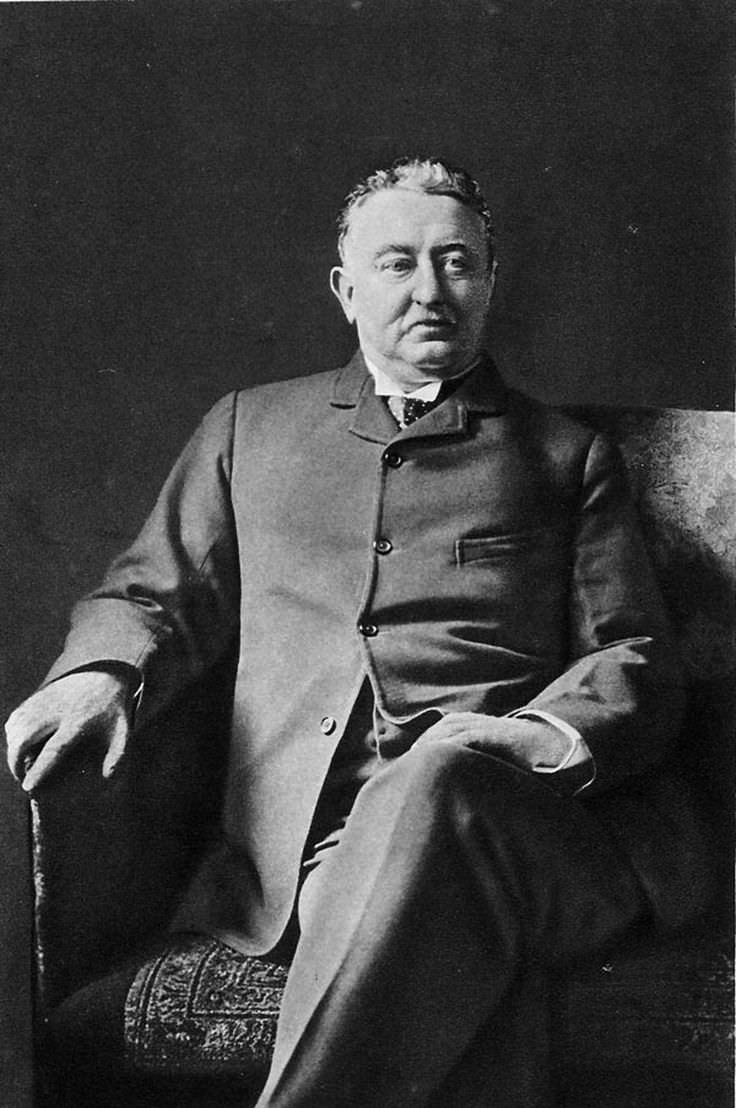
Cecil Rhodes
|
|
||||
|
|||||
|
By 1951, large and influential nests of Oxford-trained Rhodes scholars had infested vast branches of government and academia through efforts led by
Lord Alfred Milner protégé Vincent Massey and his pet, Lester B. Pearson. Pictured above is a small coterie of the most insidious Rhodes scholars referred to in the 1951 Chicago Tribune article, with Cecil Rhodes seated at left. |
|||||
Little could the writers of the Chicago Tribune then know that during the very summer of their writing, a young Fabian, having just returned home from his conditioning under Harold Laski’s mentorship at the London School of Economics was working at his first job in the Privy Council Office (PCO) under the watch of Rhodes Scholar and Privy Council Clerk Norman Robertson. That young Fabian went by the name Pierre Elliot Trudeau.(7) Working alongside Trudeau at the time in the PCO included his supervisor Gordon Robertson, a young Oxford man named Marc Lalonde and his friend Gerard Pelletier, all three of whom went on to play prominent roles in Trudeau’s powerful inner cabal 20 years later.
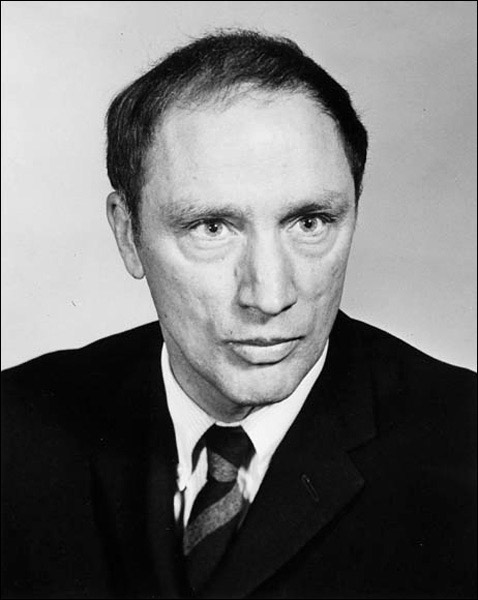 |
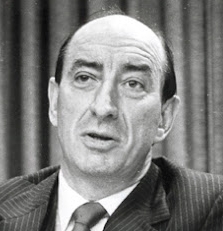 |
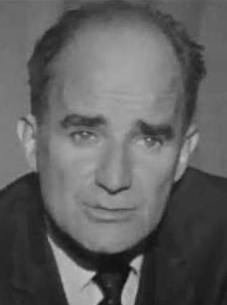 |
|
Such operatives as Pierre Trudeau [left], Marc Lalonde [middle] and Gerard Pelletier [right]
all got their start simultaneously as recruits in Ottawa's Privy Council Office under the watch of Rhodes Scholar Norman Robertson |
||
Upon returning to Montreal in 1951, Trudeau came under the control of F.R. Scott, Rhodes scholar and co-founder of the League of Social Reconstruction (LSR) 20 years earlier. Trudeau’s celebrity as an enemy of Quebec Premier Maurice Duplessis was cultivated by these Rhodes networks through his publication Cité Libre which served to 1) brainwash young intellectuals according to the journal’s existential Catholic “personalist” philosophy of French philosophers Jacques Maritain and Emmanuel Mounier on the one side and 2) rally a populist attack on the Vatican- influenced Union Nationale (UN) government of Duplessis, Daniel Johnson Sr. and Paul Sauvé on the other.(8) This provincial government had made its renown not only for resisting British control over its destiny, but had also been a beachhead of resistance against eugenics laws then being implemented across the continent.(9) Trudeau worked in tandem with the creepy network of social engineers run from Laval University by Father George Henri Lévesque (co-chair of the Massey Commission), which exploded onto the scene in 1960 as the “Quiet Revolution” overthrow of the Union Nationale after two untimely heart attacks of UN leaders beginning with Duplessis in 1959, then followed by Paul Sauvé a mere nine months later.
Another personality whose celebrity was being created in tandem with Trudeau’s during the 1950s included Trudeau`s schoolboy chum, and British Intelligence asset René Lévesque, whose popular CBC radio show Point de Mire served to rally public opinion against the Duplessis regime and prepare the culture for the radically liberalizing reforms of the Quiet Revolution.(10)
(6) Massey Report quote cited in Karen Finlay’s “The Force of Culture: Vincent Massey and Canadian Sovereignty”, University of Toronto Press, 2004, p. 218
(7) Trudeau had just returned to Canada from a 500 day long world tour instigated by Harold Laski, a recruiter of young talent and law professor at the London School of Economics who had mentored young Trudeau from 1947-49. Laski was also a leader of the Fabian Society at this time serving as the Head of the National Executive of the British Labour Party.
(8) Maritain and Mounier were part of the “Catholic” variety of the discrete collaborators with Vichy during WWII, after the integrist Pope, Pius XII, had signed a Concordat deal with Hitler. Maritain was an Ultramontane integrist type of fascist who revived Thomas Aquinas with the purpose of instituting a “New Middle Ages” with the collaboration of the Dominicans. Maritain and Mounier were the leaders of the very Catholic “Ordre Nouveau” under Vichy. (See Pierre Beaudry’s Synarchy report on the DOMINICAN FASCIST YOUTH MOVEMENT in Book II: The Modern Synarchy Movement of Empire www.amatterofmind.org/Pierres_PDFs/SYNARCHY_I/BOOK_II/2._SYNARCHY_MOVEMENT_OF_EMPIRE_BOOK_II.pdf.) Maritain was the most important French philosopher of the war years in France and later in America. The entire Maritain, Mounier, and Reginald Garrigou-Lagrange salon at Meudon was anti- De Gaulle, during and after the war. They were “Catholic personalist communitarians” who oriented against individualism and materialism for the benefit of the Revolution Nationale of Petain.
(9) The March, 1946 issue of Eugenical News featured an article called “The Present Status of Sterilization Legislation in the United States” which demonstrates the eugenicists’ anger with the Quebec Church: “The opposition of the Roman Catholic leaders constitutes the greatest obstacle that is encountered in applying, or in acquiring this therapeutic protection. From Maine come complaints that the Catholics of Quebec are moving southward and obstructing the proper use of their sterilization law. From Arizona we hear that no use has been made of their law ‘because of religious objections.’ Three States, Arizona, Arkansas, Nevada, have no institution for the feebleminded or epileptics, though some are cared for in the mental hospitals. Connecticut’s population has a greater proportion of Catholics than any other State having a sterilization law. This accounts in part for the fact that only an occasional operation is being done there.”
(10) Both Trudeau and Lévesque had prominent roles in the 1960-1966 operation with Trudeau working in the Institute for Research into Public Law under Rhodes Scholar Jean Beetz at Father Lévesque`s Université Laval and René Lévesque working as a Cabinet Minister of the Liberal government of Jean Lesage. For more on René Lévesque`s recruitment to British intelligence during WWII, see The Canadian Patriot #5, Feb. 2013.

Sir Julian Huxley founded UNESCO in order
to make the science of eugenics become a standard of social control under a new name. |
The guidelines for the post-1945 path to a New World Order were laid out clearly by Sir Julian Huxley in his 1946 UNESCO: Its Purpose and Its Philosophy:
“The moral for UNESCO [United Nations Education, Science and Cultural Organization] is clear. The task laid upon it of promoting peace and security can never be wholly realised through the means assigned to it–education, science and culture. It must envisage some form of world political unity, whether through a single world government or otherwise, as the only certain means of avoiding war... in its educational programme it can stress the ultimate need for a world political unity and familiarize all peoples with the implications of the transfer of full sovereignty from separate nations to a world organization.”(11)
To what end would this “world political unity” be aimed? Several pages later, Huxley’s vision is laid out in all of its twisted detail:
“At the moment, it is probable that the indirect effect of civilization is dysgenic instead of eugenic, and in any case it seems likely that the dead weight of genetic stupidity, physical weakness, mental instability and disease proneness, which already exist in the human species will prove too great a burden for real progress to be achieved. Thus even though it is quite true that any radical eugenic policy will be for many years politically and psychologically impossible, it will be important for UNESCO to see that the eugenic problem is examined with the greatest care and that the public mind is informed of the issues at stake so that much that is now unthinkable may at least become thinkable.”(12)
How could “the unthinkable” application of a practice which Hitler had made repulsive to humanity, become adopted by a society which had a faith in progress and unbounded creativity so incompatible with social Darwinism? Huxley’s own life’s decision to become a founding member of the World Wildlife Fund (WWF) in 1961 alongside Bilderberg Group founder Prince Bernhard and Prince Philip provides us a clue. It is no coincidence that Huxley’s role as President of the British Eugenics Society (1959-1962) also overlapped his co-creation of the World Wildlife Fund (WWF).
|
||||||||||||
The only way such a genocidal policy as eugenics, masquerading as “objective” science, could be readopted by humanity was through the dissociation of mind from matter, via the breaking of “subjective values” from “objective facts”. The method chosen was a worshipping of the ugly and irrational in the aesthetics such that judgement could no longer be governed by a sense of truth and beauty, while the “cold and logical” was separated from the artistic and kept in its own cold dark mechanical universe accessible only through statistical methods of thought. This is how the modern school system has been divided into two different synthetic worlds of Arts and Sciences. The operatives chosen to carry out this policy were Massey’s ally Sir Kenneth Clark and Sir John Maynard Keynes who led the scientific management of culture in Britain.(13) The mental cage chosen to schism “values” from “facts” in managing human affairs was named “systems analysis”.
A major goal of the Massey Commission and its UNESCO design, was to create structures that would elevate the Humanities and Social Sciences to the highest pedestal of knowledge (and financing), paving the road for the later acceptance of systems analysis to be used in the management of society. The person assigned to impose “systems” planning into political practice was the Lord President of the British Empire’s Scientific Secretariat Alexander King working through the Organization for European Economic Cooperation (OEEC), (later to become the Organization of Economic Cooperation and Development (OECD) in 1961). Under the OECD, King became Director General of Scientific Affairs and went on to co-found the Malthusian Club of Rome alongside Italian industrialist Aurelio Peccei in 1968.(14)
(11) Julian Huxley: UNESCO Its Purpose and Its Philosophy, 1946, p.13
(12) Huxley, Ibid., p.21
(13) During the War, Britain had centralized its cultural control via the creation of the Council for the Encouragement of Music and Arts (CEMA) founded and led by the Director of Britain’s National Art Gallery, Sir Kenneth Clark. Upon receiving his assignment after serving as fine arts curator at Oxford’s satanic Ashmolean Museum, Clark was made Knight Commander of the Bath in 1938, one of the highest honours bestowed upon high ranking prostitutes of the oligarchy. After the war, CEMA became the Arts Council of Britain, chaired by John Maynard Keynes, a director of the British Eugenics Society until his death. Keynes is on record mere months before his death, exclaiming at a Galton Lecture in 1946 that eugenics is “the most important, significant and, I would add, genuine branch of sociology which exists” [“Opening remarks: The Galton Lecture”. Eugenics Review vol 38 (1): 39–40.] These networks drove the counter-culture operation known as “The Congress for Cultural Freedom’ (CCF)-sponsored by the Rockefeller Foundation, the CIA and directed by British Intelligence beginning in 1949. For more on the CCF, see The Congress for Cultural Freedom: Making the World Safe for Post-War Kulturkampf, by Jeff Steinberg and Steve Meyer, published in the June 24, 2004 issue of Executive Intelligence Review, downloadable on www.larouchepub.com
(14) In laying out the strategy for his life’s work with the Club of Rome, King wrote in the forward to his 1991 book The First Global Revolution; “The common enemy of humanity is man. In searching for a new enemy to unite us, we came up with the idea that pollution, the threat of global warming, water shortages, famine and the like would fit the bill. All these dangers are caused by human intervention, and it is only through changed attitudes and behavior that they can be overcome. The real enemy then, is humanity itself.”
The RIIA directed its various branches, and Rhodes Trust networks around the world to implement the New Eugenics project outlined by Julian Huxley in 1946. In Canada, the implementation process occurred between an interval of 24 years and took the form of four CIIA-directed operations whose immense influence cannot be overstated. They were:
- The Royal Commission into the Arts and Letters (1949-1951),
- The Royal Commission on Economic Prospects for Canada (1955-1957),
- The Royal Commission on Government Organization (1960-1963), and
- The Senate Committee on Science Policy (1968-1972).
Each commission was designed with the effect of establishing new structures of thought upon policy makers in the domain of culture, economic and science policy which induced the blind acceptance of satanic policies of Malthusian eugenics masquerading as “environmentalism”, or the “science” of saving nature from civilization. A society imbued with a moral sense of Judeo-Christian ethic and love of progress, and strengthened by the Roosevelt-led fight against Hitler, would never accept Eugenics. A fact well known to the Anglo-Dutch oligarchy.
A Royal Commission, as the name implies is an invention of the British Empire which has been used for centuries in order to create the perception that top down structural changes in all aspects of government were “scientifically” and objectively achieved. The truth is that conclusions of such Commissions have always been pre-decided by the ruling oligarchy long before the Royal Commission’s experts were even formed. Usually spanning 2-3 years of studies by a clique of pre- selected “experts” in a given field, Royal Commissions produce voluminous data sets, hundreds of thousands of pages of information, and then summarize their findings and prescriptions in the form of several summary reports consisting of a 1-2 thousand pages. The sheer quantity of data associated with such reports is supposed to dissuade anyone from giving any respect to other countervailing opinion which challenge the Commission’s findings, with the assumption that unless everyone commits two years of their lives to a specialized study funded by millions of dollars and thousands of man hours, then their opinion could not be worth anything.
In Canada, Milner-protégé Vincent Massey was assigned the unique responsibility of leading the implementation of this multifaceted program which struck in a series of Royal Commissions organized entirely by agents of the CIIA. Massey’s role was carried out as the chairman of the already mentioned Royal Commission on National Development in the Arts, Letters and Sciences (1949-1951) alongside his co-chairman Father George Henri Lévesque, a social scientist and Dominican priest who is rightly credited as the intellectual godfather of the 1960-1966 “Quiet Revolution” which secularized the province of Quebec and brought in OECD educational reforms. All proposals sought by the end of this two year study were directed by the UNESCO agenda which Sir Julian Huxley laid out publicly in 1946.(15)
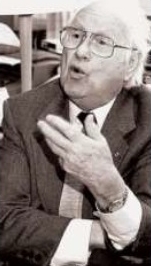 |
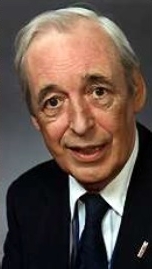 |
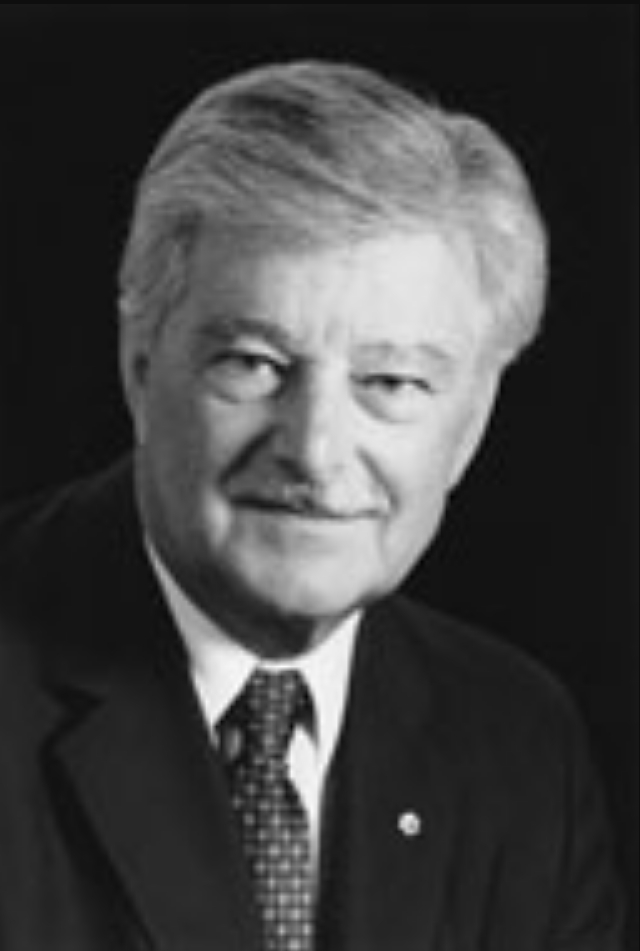 |
|
Left to right: Father Georges Henri Levesque and his two disciples
Maurice Lamontagne, and Rhodes Scholar Paul Gérin-Lajoie |
||
As Massey’s former assistant Karen Finlay wrote in The Force of Culture: Vincent Massey and Canadian Sovereignty, Massey’s lifelong governing principle was “principle of disinterest” whereby Massey argued that it is “intellectual detachment” which empowers someone to truly judge the aesthetic value of art.(16) Under the logic of UNESCO and Massey’s satanic formula, it is assumed that since personal “subjective” values pollute one’s judgements on “the beautiful and good’, it is only by disassociating oneself from pre- existing values, that we gain the ability to judge “good” and “bad” art in an “objective” and thus “true” fashion.
The severing of the subjective from the objective thusly also forces the denial of any pre-existing standards by which anything could be judged as intrinsically good or bad, and thus a ripe field of moral relativism can be harvested. Evil may then run wild without any fear of being challenged. In other words, this is a complete denial of the existence of universal physical principles.
The structures against universal physical principles which were proscribed in the Massey-Lévesque Commission involved the creation of a more powerful Canadian Broadcasting Corporation, a National Film Board, a National Library, a National Art Gallery, a National Art Bank, a Social Sciences and Humanities Research Council, Federal financing of the education system in the humanities and social sciences, and Canada Council for the Arts modelled on Keynes’ semi-autonomous, government financed British template.(17)
The Federal financing of the education system was vital for the Commission since it was the only way which OECD and UNESCO reforms could be ushered in without provincial resistance. Pre-existing teaching practices emphasizing the Greek Classics, which treated students as if they had a soul, could only be dismantled efficiently under this top down restructuring, applied during the 1960s in which moral relativism, Darwinism, and “new math” increasingly replaced anything of substance. The horrendous explosion of modernist, abstract and banal art generously sponsored under the structures of Massey’s Canada Council (f.1957) gives one a sick sense of the spiritual disease with which the imperialists (and sadly their victims) are infected. Both federal control of education and the arts were necessary to pervert the principles guiding both, and establish the mental/spiritual infrastructure supportive of satanic programs of Malthusian population reduction as the new environmentalist eugenics was designed to be.
To amplify this spiritual disease, the Massey-Levesque Commission even proscribed the creation of a Canadian honours system such that oligarchical habits could more easily be cultivated in Canada.(18) The creation of the Canada Council took much longer than Massey would have liked, and its postponement was due largely to the resistance of the l’Union Nationale government of Quebec and its Vatican-steered Catholic Church. The powerful elements within the Quebec Catholic Church were among the only organized forces on the continent that had competently identified the satanic intentions underlying the OECD-UNESCO reforms being infiltrated into global educational and political systems.

The founding members of the Institute for Reseach into Public Law in 1961, most notably Marc Lalonde (upper left), Carl Goldenberg (upper 2nd from left), Jean Beetz (bottom left) and Pierre Trudeau (upper right)
|
It was for such reasons that Father Lévesque and his ideological offspring of social engineers and technocrats at the University Laval had become the bitter enemies of the Union Nationale government. The implementation of OECD educational reforms as prescribed by the Massey-Lévesque Commission were a primary focus of the Quiet Revolution. The task of applying the reforms was given in large part to two Rhodes Scholars: Jean Beetz and the creator of the Quebec Ministry of Education, Paul Gérin-Lajoie. Soon-to-become Prime Minister Pierre Elliot Trudeau played a key institutional role in this process as well in the Law Faculty at University Laval alongside Lalonde and Beetz.
With the creation of the Canada Council, the “scientific management” of culture, so necessary to elevate the ugly and banal into a position of respectable authority was ensured and the ground was thus laid for the next steps of the fascist takeover of Canada.
(15) Zoe Druick, International Cultural Relations as a Factor in Postwar Canadian Cultural Policy: The Relevance of UNESCO for the Massey Commission, published by Simon Fraser University
(16) Karen Finlay, “The Force of Culture: Vincent Massey and Canadian Sovereignty“, University of Toronto Press, 2004
(17) Anna Upchurch, Vincent Massey: Linking Cultural Policy from Great Britain to Canada, International Journal of Cultural Policy, Feb. 15, 2008
(18) This came to be known as the Order of Canada, instituted in 1967, and quickly followed by a succession of other Canadian honours in the years following. It is vital to understand that the origin of the honours’ authority is derived directly from the British Monarchy, which is legally acknowledged as being the “Fount of All Honours”. This is the fundamental source from which all efficient authority springs up within both the public and shadow governing functions of the British Imperial system.
“Many Canadians are worried about such a large degree of economic decision-making being in the hands of non-residents [because it] might lead to economic domination by the United States and eventually to the loss of our political independence.”
-1957 Gordon Commission Report.(19)
The Massey-Lévesque Commission was followed systematically, by the Royal Commission on the Economic Prospects of Canada (1955-1957) chaired by Walter Lockhart Gordon, chairman of the National Executive Committee of the CIIA and head of the largest accounting firm in Canada Clarkson-Gordon Management. The Commission claimed that Canada’s sovereignty was threatened by American ownership of Canadian enterprise, and that drastic action to cut America off from the Canadian economy were absolutely necessary.

Gordon shaping a generation of manipulatable baby boomers at a 1970 University of Toronto teach in. Photo: D.Griffin. Toronto Star
|
As historian Stephen Azzi demonstrated in his 2007 study Foreign Investment and the Paradox of Economic Nationalism,(20) the claims made by the report were entirely fraudulent. The massive upshift in quality of life, electricity and social services due to American capital in Canada was not even addressed in the voluminous Gordon Commission reports. Thus the only relevant purpose of the report was to cultivate a culture of anti-Americanism, and establish political structures limiting foreign ownership of Canadian markets, and lower the potential living conditions of Canadians.(21) The biggest farce embedded in the Gordon Commission quote above, of course, which Azzi misses, is that there never was any political independence for Canada to lose to Americans in the first place, since it had never freed itself from the political and economic clutches of its British Mother.
Gordon went onto implement his own proposals after leading the cleansing of the Liberal Party of all C.D. Howe Liberals between 1957-1963,(22) becoming Finance Minister (1963-65) under his long- time puppet-on-loan from Vincent Massey, Lester Pearson, whom he himself selected as early as 1955 to run for leadership of the Liberal Party.(23) After his policies as Finance Minister failed, Gordon took over the post of President of the powerful Privy Council Office (1966-68) from his predecessor Maurice Lamontagne.
These two commissions were designed to “sound the alarm bells” against Canadian vulnerability to an imminent American imperial takeover of Canada’s culture and economic resources. Although no evidence was ever presented that American imperialism had any intention to take over Canada, the prescriptions to save Canada from economic and cultural Americanization involved both a negative and positive component: Negatively, each proposed the rapid implementation of quota systems/ tariff systems to limit foreign input of capital and media, while positively, proposing centralized structures to coordinate culture and economic management by a vast London-steered bureaucracy. The already long controlled mass media outlets of Canada glamorized their findings and created a mass fear in the popular culture.

The fraud of Canadian nationalism hit an all time high in 1963, when PM Lester Pearson unveiled Canada's 1st national flag. Pictured here: Pearson cheered by duped Canadians.
|
The effect of these two reports also amplified anti-Americanism to such a feverish pitch that a Canadian identity could be established on a fear-based negation, whereby Massey, Lévesque and Gordon following the prescription laid out by Lord Milner in 1909 crafted a blueprint for a “New Nationalism”. This counterfeit nationalism was wrapped up with a brand new national anthem and Canadian flag upon Lester B. Pearson’s Liberals becoming the government in 1963.
The Delphic perception of Canada’s sovereign status outside of the actual control of the British Empire had to be established for the next wave of Canada’s post-1963 role in trapping nations into the imperial spider’s web of International Monetary Fund conditionalities.
Unlike the flags of most countries, the noble Maple Leaf, as many Canadians have still yet to realize, has neither now nor ever signified anything whatsoever.
(19) Preliminary Report Royal Commission on Canada’s Economic Prospects, Toronto: Cockfield, Brown p. 83
(20) Stephen Azzi, Foreign Investment and the Paradox of Economic Nationalism, published in Canadas of the Mind: The Making and Unmaking of Canadian Nationalism in the 20th Century, McGill-Queens University Press, 2007
(21) While Finance Minister Gordon’s measures to impose foreign takeover taxes of 30%, and incentives for Canadian ownership of the economy in order to cut off American capital flows into Canada, the devastating effects to the economy could not be ignored and they were soon disbanded. Many of Gordon’s propositions such as the Canadian Development Corporation to pool capital and buy back Canada would only go into effect during the Trudeau administration 10 years later.
(22) One of those who suffered the purge was C.D. Howe-ally Henry Erskine Kidd, General Secretary for the Liberal Party who refered to the process led by Gordon as “a palace revolution”, as referenced in Stephen Azzi, Walter Gordon and Rise of Canadian Nationalism, McGill-Queens University Press, 1999, pg. 71
(23) “I have a feeling that people would like to follow your star in droves – if and when you decide the time is right to give them the nod.” Cited in Walter Gordon and the Rise of Canadian Nationalism by Stephen Azzi, p.70
Once the Canadian cultural inferiority complex was amplified sufficiently by fear of American imperialism, the collective neurotic mindset was now ready for the next wave of the CIIA’s onslaught unleashed with the Royal Commission on Government Organization (1960-1963) chaired by Walter Gordon’s partner at Clarkson-Gordon, John Grant Glassco. Glassco was the son of William Grant, and nephew of Vincent Massey. This commission brought in a monetarist/accounting framework for managing a bureaucratic structure under the logic of “letting managers manage”. As its mission statement laid out: “This report examines the adequacy of existing arrangements for making economic and statistical services available for the formulation of policy, for administrative decisions, and for the service and enlightenment of the public.”(24)
A little later, the report laid out the belief that all problems with inefficiency in achieving policy objectives was due to the fact that there are too few economists and social scientists in controlling administrative positions of government: “..very little can be done, or ought to be done, to discourage the movement of economists into higher administrative posts. Talented administrators are just as scarce as economists, and it would be a mistake for the public service to deny itself any fruitful source of good administrators.”(25)
In preparation for Finance Minister Walter Gordon’s 1963-65 implementation of his 1957 Royal Commission financial proposals, Glassco laid out the new necessary controlling structures to allow Gordon to cut off Canada from American investments, and choke off as much of America from Canada as possible when he wrote: “The immediate concern is the development of a competent central economic staff within the Department of Finance, not to take over work done elsewhere but rather, under the direction of the Minister of Finance, to attend to the development of general economic policy for the government as a whole.”(26)
Finally, Glassco pushed for the UNESCO policy of amplifying the social sciences while attacking the “hard” sciences like physics and biology with the following: “The relatively slow development of economic research in Canadian universities, due to shortage of funds, bears on both the quantity and quality of the future supply of trained economists. While the government is spending scores of millions annually to support research in physics and biology, little financial assistance is given to research in the social sciences.”(27)
The edict of “letting managers manage” was necessary if the appearance of democracy were to be maintained while the absolute control of society by an accounting priesthood was to be preserved. The commission’s reports called for the adoption of “horizontal” (aka: bottom up) planning which was to replace the archaic belief in “vertical” (aka: top down) intentions from elected officials to the process they were elected to preside over, as was the common practice of the NRC and its administrators.
Ironically, while bottom up planning according to accounting standards was pushed, central control through the Treasury Board was also promoted by Glassco. This prescription would ensure that only a small coterie would ever fully have their minds on the whole, while every other department were too busy focusing on hyper-specialized compartmentalized parts to think about the whole.
While the NRC and its leadership such as C.J. Mackenzie, the student of the late C.D. Howe and the late Dr. E.W.R. Steacy were vigorously attacked by the Glassco Commission, the overhaul which Glassco prescribed involved the centralized planning of science policy according to budgetary constraints under the Treasury and a Science Secretariat. These positions were to become completely subservient to the control of bureaucrats specialized in accounting and monetary economics degrees advanced through the “social sciences and humanites” programs outlined by UNESCO. With this new system of management and its anal adherence to Planning-Programming-Budgeting (PPB), the problems associated with the governments such as those of C.D. Howe and later John Diefenbaker (1957-1963) which intended to actually get something done for the improvement of the nation, could not occur.(28) This systemic reform was not an end in and of itself however, and was merely a necessary stepping stone towards actualizing a system of thinking which would accept the linear language of “Systems Analysis” as a guide for conceptualizing the management of humanity under laws of entropy, constrained by the limits of fixed resources.
The Glassco Report’s prescriptions for policy overhaul were to be implemented fully by Trudeau several years later.
As a reward for a job well done, Glassco was promoted from Executive Vice-President of Brazilian Traction, Light and Power Co. to President in 1963.Under this position, the overthrow of the nationalist Brazilian President João Goulart was effected via a military coup d’état.(29) The free market pillaging of Brazil created a model applied even more aggressively a decade later with Henry Kissinger’s orchestration of the Pinochet regime’s coup in Chile.
(24) Glassco Commission Royal Commission Report on Government Organization, Queen’s Printer, Ottawa Canada, 1962, vol. 3, part 1, p.22
(25) Ibid. p. 22
(26) Ibid., p.33
(27) Ibid., p.33
(28) During a confrontation with the Lamontagne Senate Committee, Secretary of the Treasury Board Simon Reisman described the problem of PPB thus: “PPB may, for all I know, have considerable merit when applied to business operations... the PPB system, however, in more complex situations such as science, breaks down by reason of the general error of its assumption that the outcome of experiments is predictable.” [excerpted from F.Roland Hayes’ Chaining of Prometheus: The Evolution of a Power Structure for Canadian Science, University of Toronto Press, 1973, p.19]
(29) Robert Chodos, Let Us Prey, Jarmes Lorimer and Company publishing, 1974, p.26
The last wave of this CIIA-run Milner Project for a new nationalism (at least insofar as major structural reforms were concerned), took the form of the Senate Special Committee on Science Policy (1967-1972), more popularly known as the Lamontagne Commission after its chairman Senator Maurice Lamontagne.(30) This commission had the distinction of being the most transparent in its satanic intention to ban creativity and impose Malthusian constraints un-naturally upon the management of human affairs. The report is especially relevant as it begins with the acknowledgement of the American System of Political Economy, which it then attempts to destroy by lies and ridicule:
“During the early part of the 19 th century, Great Britain and to a lesser extent France were fast developing industrial technology and finding ways of fruitfully exploiting science. Later on the United States moved from technical backwardness to such a level that it could begin exporting to the “advanced” European countries manufacturing techniques and machine tools so different that the whole approach became known as the “American System”. An English productivity team that visited the United States in 1853 to study this ‘system’ concluded that “men served God in America, in all seriousness and sincerity, through striving for economic efficiency.”(31)
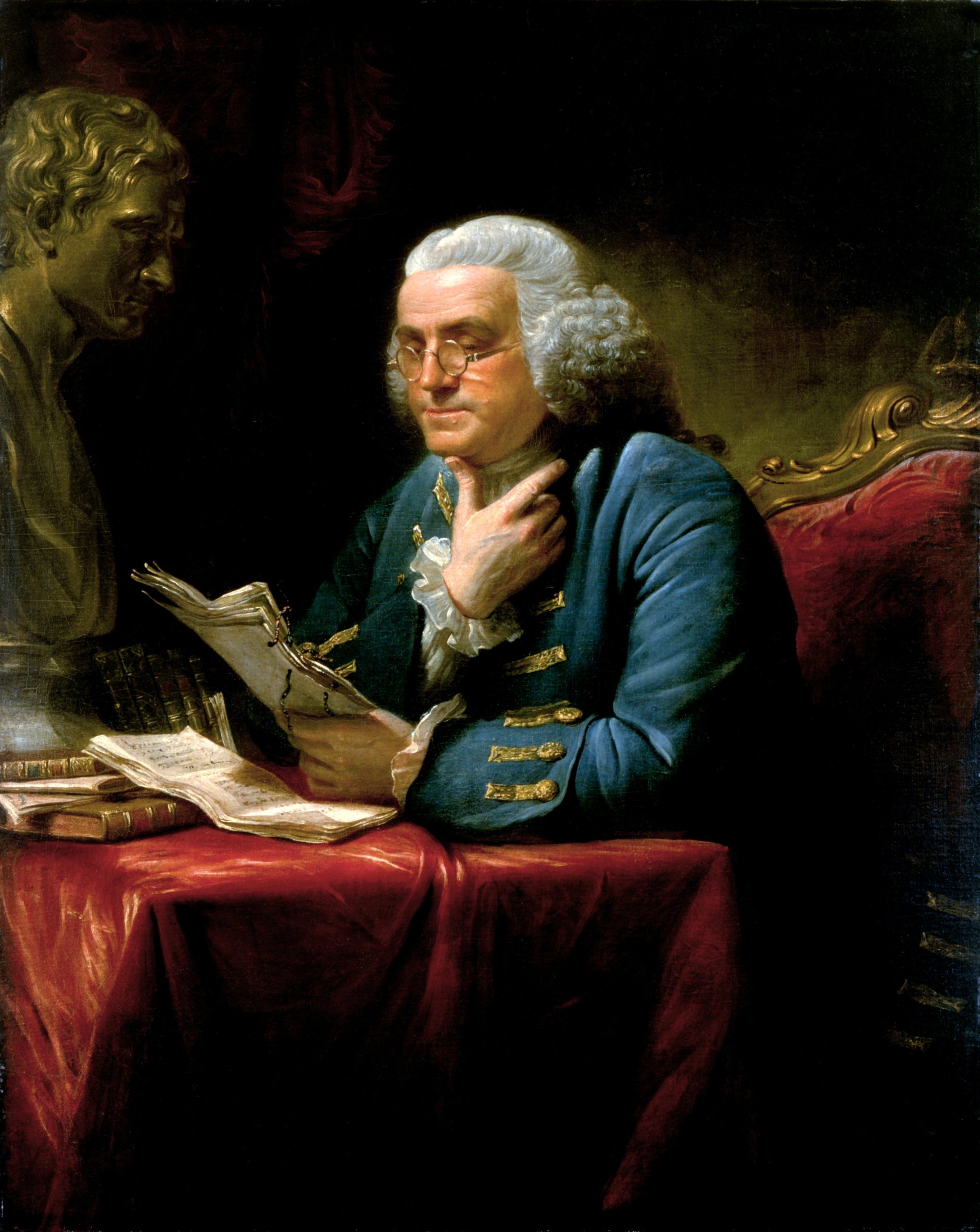 |
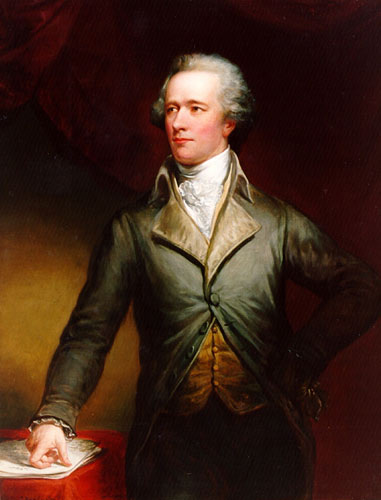 |
|
|
Two hundred years after Benjamin Franklin [left] and his young protégé Alexander Hamilton [right] established the American System of Political Economy in order to ensure the success of the young Republic, the British Empire was still yearning to tear its existence from the books of history in order to establish a new world order.
|
||
By identifying the fact of creativity’s relationship to technological advance, and technological advance’s relationship to increased growth and productivity, embedded self consciously in the American System founded by U.S. Treasury Secretary Alexander Hamilton and his mentor Benjamin Franklin, Lamontagne, a student of George Henri Lévesque and key member of the Gordon Commission twelve years earlier, established his commitment to defend the principle of empire. The current leading defender of the American System Lyndon LaRouche has subsequently described contrast between the forces active today the following terms:
“The most readily accessed example of the contrast of good to evil in modern times, has been typified not only by the goodness of the anti-monetarist principle on which the original Constitution of the United States of America was premised; it was also the same principle which had been adopted earlier by the Massachusetts Bay Colony. That principle, which modern society should trace back to such Renaissance geniuses as Nicholas of Cusa, has been demonstrated through the crucial quality of a leading contributing role specific to the included role of U.S. Treasury Secretary Alexander Hamilton.”(32)
Lamontagne’s allegiance to the monetarist forces opposing the American System, can be clearly seen when Lamontagne let his true intention shine forth when he wrote in vol. 2 of his 3 volume report:
“It is becoming apparent, however, that nature is not as passive as we thought, that it has its own laws and can revenge itself, once its own equilibrium has been disrupted... Nature imposes definite constraints on technology itself and if man persists in ignoring them the net effect of his action in the long run can be to reduce rather than to increase nature’ potential as a provider of resources and habitable space... But then, an obvious question arises: How can we stop man’s creativeness?”(33)
Thus, Lamontagne has established that it is man’s creativity itself that must be stopped if the supposed “fixed” equilibrium of nature will remain unchanged by technology! This is the root morality of the current global environmentalist religion which Lamontagne was at the forefront of unleashing. Since Lamontagne admits that his “ideal” solution of destroying man’s creative impulse is itself an impossibility, like the Zeus of Aeschylus’s Prometheus Bound, he never the less finds a resolution to this problem by introducing a perverse alternative when he wrote:
“How can we proclaim a moratorium on technology? It is impossible to destroy existing knowledge; impossible to paralyze man’s inborn desire to learn, to invent and to innovate. … In the final analysis we find that technology is merely a tool created by man in pursuit of his infinite aspirations and is not the significant element invading the natural environment. It is material growth itself that is the source of conflict between man and nature”(32)

If you're not progressing you're dying. The above illustration of
the anti-entropic tendency of a healthy human economy must be informed by the fact of the interconnected relationship of the energy flux density of heat used to accomplish work to the power of society to sustain greater creative activity at ever higher rates of production. This is the only metric of determining value and the basis of the anti-monetarist American System. |
Thus creativity and its fruits of technological progress are acceptable only IF they reduce the assumed conflict between man and nature posited by Lamontagne! “Bad” technology in Lamontagne’s formulation, has the effect of increasing humanity’s powers of productivity and thus increase the entropy in his fixed ecosystem-based economy. If, on the other hand, we promote technologies of a low energy flux density form, such as windmills, solar panels and biodiesel, which lead to the reduction of man’s powers to exist, then technology can be defined as a “good” thing.
This is the genocidal intention of the British Empire expressed in all its nakedness, which has been the primary target of American statesman and founder of the science of Physical Economy, Lyndon LaRouche. By the time of the Lamontagne Commission, LaRouche had already risen to world prominence as the only effective challenger to the British monarchy’s genocidal agenda of lowering the energy flux density underlying society’s material and intellectual existence. LaRouche has subsequently fought for 50 years to defend the truth of mankind’s scientifically verifiable relationship to the universe, as being governed by everything which Lamontagne and his Anglo-Dutch masters hate: mankind’s necessity for unbounded scientific and technological progress expressed as the unending obligation to increase the productive powers of labour.
The concept which LaRouche has used to guide mankind’s mandate for progress, is the increase of energy flux density of cycling of atoms through the biosphere and human economy, shaped by upgrades of new platforms of technologies. Compare LaRouche’s view on energy-flux density with the cynical rubbish promoted expressed by Lamontagne above:
“The rates of increase of energy-flux density in the concentrations of increasing rates of intensity of power per capita, must be now be restarted, and also accelerated; otherwise, the death-rates throughout the world are now already accelerating at rates which must be identified as a global trend in planetary human genocide... The nominal trend in rising rates of genocide is not the only aspect of this threatening trend. The inability to maintain a correlated set of rates of increase of the energy-flux density of the human persons per capita, must be correlated with the falling rate of intellectual development of the typical U.S.A. or European citizen. The so-called “green doctrine” is a doctrine of practice which results in not only human genocide, but a decadence in the mental powers, and also the relative sanity, of the individual human being.”(34)
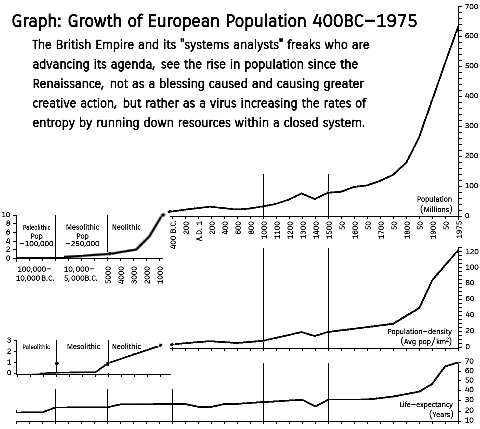 |
What LaRouche is describing is the simple fact that without a constant increase of energy-flux density of the system and each individual within that system, then the domination by a green doctrine which sets “value” upon forms of energy and behaviour which reduce mankind’s power to accomplish work is destined to exterminate the population trapped within that system. The effect of destroying the means to increase the energy flux density of the system (ie: Creativity) means that a policy of genocide is the only alternative for a ruling oligarchy!
How would such a logic of genocide be accepted by citizens and administrators who are animated by the inspired faith in scientific and technological progress as was still largely the case during the late 1960s? For this task, Lamontagne had already let the cat out of the bag when he wrote in vol. 1:
“If general science policy is to accomplish its crucial role effectively, it must also develop a system of control, to make sure that the strategy will be respected in the detailed decision-making process and review mechanisms... Perhaps more than any other sector of policy, science policy requires the careful application of systems analysis.”(35)
With the linear language of systems analysis, the minds of those trying to manage any intrinsically non-linear process became sufficiently crippled with statistics and compartmentalization that their ability to see either 1) a whole top down process, or 2) the tragic consequences of their own foolish beliefs, was destroyed. Similar to the logic adopted ten years earlier with the state-run Canada Council which provided top down grants to “certain types” of art, music and social theories compatible to an oligarchy, though abhorrent to natural human sentiment, the Lamontagne Commission called passionately for a centralized financing and planning body in order to fund those “types” of applied technologies and pure research which were compatible with the genocidal aims of an oligarchy, but would never be accepted by a society imbued with even a little common sense and human compassion. In this spirit Lamontagne exclaimed that:
“The creation of a dynamic and balanced science organization is an urgent necessity. A main center of coordination and financing of science policy is extremely desirable. The time has come to create a federal department of scientific affairs.”(36)
Lamontagne is referring of course to the creation of the Canadian Ministry of State for Science and Technology (MOSST) which was modelled on the British system, and kept under the full control of the Treasury Board and its balanced accounting system. MOSST and the Treasury Board redirected Canadian science into the dark ages and its new emphasis on “ecosystems management” and “conservation” instead of nation building. The “new wisdom” advocated by Lamontagne demanded that science now be shackled to “market demand” instead of future orientation.
(30) Lamontagne, a disciple both of Father Levesque at Laval University and Joseph Schumpeter at Harvard, collaborated with Walter Gordon as a member of the 1955 Royal Commission on Economic Prospects for Canada before going on to become personal secretary to Lester Pearson in 1958. Previous to his chairmanship of the Senate Committee, Lamontagne was President of the Privy Council Office (1964-65), before being made Senator by Lester B. Pearson.
(31) Maurice Lamontagne, Report of the Senate Special Committee on Science Policy, vol. 1, p.22
(32) Lyndon LaRouche, ‘On the Subject of Oligarchy,’ Executive Intelligence Review, July 26, 2013
(33) Ibid.
(34) Report of the Special Senate Committee on Science Policy, vol. 2, p.33-34
(35) Maurice Lamontagne, Report of the Senate Special Committee on Science Policy, vol. 1, p.240
(36) Lamontagne, 29 March 1969, Senate Debates, cited in F. Roland Hayes’ The Chaining of Prometheus, pg.186
After the Rhodes Trust-directed ouster of the well intentioned, but incredibly naïve Conservative Prime Minister John Diefenbaker in 1963,(37) all of the measures proposed by these four Commissions were enforced vigorously by Lester B. Pearson and the Rhodes Trust/CIIA networks that had risen to prominence under him, and then fully by Pearson’s replacement... the former Justice Minister Pierre Elliot Trudeau in 1968. Along with Trudeau came fellow CIIA-assets from the Privy Council Office Gerard Pelletier, and another disciple of Father Lévesque named Jean Marchand, both of whom were active with Trudeau’s Cité Libre. The `new reformers` of Quebec became the `new reformers` of Canada.

The “new reformers” take over Ottawa on July 6, 1968.
Here Pierre Trudeau [3rd from left] marches with his Cabinet ministers Rhodes Scholar John Turner [3rd from right], Jean Marchand [2nd from right], and Secretary of State Gerard Pelletier [far right] on their way to their swearing-in ceremonies |
Under Trudeau, the application of “systems analysis” as a cover for population reduction and fascism were fully carried into the top down management of government on all levels, and the Club of Rome of Alexander King, and his Canadian collaborators such as Maurice Strong, Maurice Lamontagne, Roland Mitchener (former Governor General),(38) Michael Pitfield (Personal Aid to Trudeau and head of Privy Council Office), Alastair Gillespie (Rhodes Scholar, and 1st MOSST), C.R. Nixon (Privy Council Office), Marc Lalonde (Rhodes Scholar, Trudeau advisor and head of Prime Ministers Office), Ronald Ritchie (National Advisor), Rennie Whitehead (Asst. Sec. to MOSST), and Ivan Head (head of Prime Minister`s Office) had set its putrid roots firmly into Canadian soil officially when the Canadian Branch was established informally in 1970.(39)
This nest was directly responsible for the creation of Environment Canada, which had applied systems analysis in order to transform what was once a policy of water and energy development, centered around a national mission, towards “ecosystems management”. A strict dualism between civilized humanity characterized by change and the “unchanging pure equilibrium” of nature was assumed as law, and with this assumption, a new green religion arose masking its fascist intentions behind a “new Canadian nationalism” centered not around a love of freedom or development, but around a fear of both American and Russian aggressors and unfortunate admiration for Britain.
(37) Matthew Ehret-Kump, Diefenbaker and the Sabotage of the Northern Vision, The Canadian Patriot #4, Jan 2013
(38) Former Governor General Roland Michener, himself a Rhodes Scholar, also received the Royal Victorian chain by Queen Elizabeth II for services rendered to the British Empire. This honour is the highest given out by the Monarchy, of which only 14 have ever been distributed, and only two in Canada`s history. The other chain was given to Vincent Massey.
(39) The official formation of the Canadian Club of Rome took place only in 1974. Although Trudeau was an enthusiastic participant at Club of Rome meetings, even sponsoring the 1971 Conference in Montebello, Quebec which gave birth to the work “Limits to Growth” the following year, he did not become an officially registered member until out of office. Trudeau remained close friends with Alexander King, and according to former U.S. Ambassador Thomas Enders, Trudeau referred “frequently to Club of Rome thinking on the need for new political and moral approaches.” Trudeau’s renown as a Club of Rome representative was so great that after Aurelio Peccei’s death in 1984, Rhodes Scholar J. Gordon King revealed that Trudeau was even asked to become Peccei’s replacement... a post which he turned down due to political reasons at that time. [see The Limits to Influence: The Club of Rome and Canada 1968-1988 by Jason Churchill, Waterloo, Ontario, 2006, p.138.]
The lies of the past are looking pretty ugly. Shall we find the strength within ourselves to look upon this disfigured ugliness which we are told is our heritage, in order to recapture the vision of Canada’s sovereign potential as a great pioneering nation which held the imaginations of men such as Wilfrid Laurier, O.D. Skelton, C.D. Howe and John Diefenbaker? Shall we pick up upon the organic creative evolution that was so scarred and disfigured when Franklin Roosevelt died, and build such long overdue projects as the North American Water and Power Alliance, championed by the Kennedy brothers in the 1960s? Shall we rebuild our destroyed infrastructure along upgraded magnetic levitation train technology alongside the Russia-China led Belt and Road Initiative? Shall we let go of the false genocidal notion of unchanging ecosystems and allow ourselves to see human beings as a species above and beyond everything else known in the biosphere, in that we are unique in our power to comprehend, and wilfully transform those processes of nature in a way that improves and speeds up their evolutionary progress towards ever higher states of energy-flux density?
That really depends on you.
In 1877, while laying out his agenda for the formation of a secret society to recapture Britain’s lost colony of America and the submission of “inferior” races (ie. non anglo-saxon) under the control of a renewed British Empire, Cecil Rhodes, wrote his Confessions of Faith in which the following explicit mission statement can be read:
“I contend that we are the finest race in the world and that the more of the world we inhabit the better it is for the human race. Just fancy those parts that are at present inhabited by the most despicable specimens of human beings what an alteration there would be if they were brought under Anglo-Saxon influence, look again at the extra employment a new country added to our dominions gives. I contend that every acre added to our territory means in the future birth to some more of the English race who otherwise would not be brought into existence... I look into history and I read the story of the Jesuits I see what they were able to do in a bad cause and I might say under bad leaders.
Why should we not form a secret society with but one object the furtherance of the British Empire and the bringing of the whole uncivilised world under British rule for the recovery of the United States for the making the Anglo-Saxon race but one Empire...
We know the size of the world we know the total extent. Africa is still lying ready for us it is our duty to take it. It is our duty to seize every opportunity of acquiring more territory and we should keep this one idea steadily before our eyes that more territory simply means more of the Anglo-Saxon race more of the best the most human, most honourable race the world possesses. To forward such a scheme what a splendid help a secret society would be a society not openly acknowledged but who would work in secret for such an object.”
Rhodes’ agenda had manifested itself upon his death in 1902 with the creation of the Rhodes Scholarship Trust whose trustees included Lord Rothschild, and Lord Alfred Milner. The Canadian imperialist George Parkin had even left his post as headmaster of Upper Canada College in Toronto, in order to serve as the 1st head of the Scholarship Trust from 1902-1922. Both Parkin and Milner went on to mentor a young Vincent Massey.
“On the day on which, existing money goes out of existence, as in Weimar Germany 1923, but this time more or less world-wide, what do the existing accountants do?
If we are to recover from the social effects of the currently onrushing disintegration of the present world financial and monetary systems, radically new methods of cost accounting will be required for private enterprises, as also for governmental and related kinds of institutions. The previously used, linear, “connect the dots” tactics, of both financial accounting and of systems analysis, must be abandoned, and replaced. A new standard must be adopted, for cost-accounting, budgetary, tariff, taxation policies, national-income estimations, and related practices.
The pivotal question of all competent cost accounting, is: What causes an increase in the net physical value of the productive powers of labor? For a moment, put aside calculations made in terms of nominal, that is to say financial, prices. Think solely in terms of physical contents of market-baskets of goods and services; measure inputs, as costs (inputs), and as outputs, in those physical terms. Instead of the common practice, of simply comparing ratios of prices of nominal inputs and outputs, seek to define the processes which determine a succession of changes in ratios of physical outputs to physical inputs. As measured in those terms, which increases, or decreases, in specific qualities of expenditure for infrastructure, production and distribution of product, and of which kinds of products, have neither beneficial, nor detrimental impact upon the functionally determined rate of net physical output, as the latter may be measured per capita of both total labor-force and population, and per square kilometer of a nation’s, or region’s surface-area?
Competent answers to those questions, lie outside the domain of a cost accounting based upon financial analysis, and outside the tyranny of those recently popular, pseudo-scientific hoaxes known as the “systems analysis” of the late John von Neumann and the statistical “information theory” of the late Professor Norbert Wiener. In the circumstances defined by the present crisis, we can no longer tolerate those faulty practices, which have been generally accepted standards of professional and related practice for much too long.”
Download the full article The Becoming Death of Systems Analysis published in the March 31, 2000 issue of Executive Intelligence review at
www.larouchepub.com/lar/2000/lar_systems_analysis_2713.html
Also, see LaRouche’s 1981 paper: Systems Analysis is White Collar Genocide also available on www.larouchepub.com
Our first two installments have dealt with the origins of the Deep State in North America by reviewing the creation of the Rhodes Scholarship/Chatham House network at the end of the 19th century and the infiltration of indoctrinated scholars into every governing branch of western society. We traced the key players in this Oxford-based network who were formed with the intent of fulfilling the will of Cecil Rhodes to “form a church of the British Empire” and undo the effects of the American Revolution as a global phenomenon. We also saw how these networks worked closely with another early “think tank” called the Fabian Society in order to advance an agenda that required the destruction of the sovereign nation state system which had been founded upon the 1648 Treaty of Westphalia. This was exemplified by the 1999 “Chicago speech” of Fabian asset Tony Blair when he stated that the world must now embark upon a “post-Westphalian order” setting the stage for 9/11 and the new era of regime change that was soon unleashed. In the following report, we will look at the origins of the Fabian Society, by examining some of its founding members and governing philosophy.

The Peace of Westphalia signified the end of the Venetian
sponsored 30 years of religious war, and set the basis for the modern sovereign nation state and rule of law. Painting depicting the treaty by Gerard ter Borch |
Polarization is the name of empire. If a society can be kept under the control of their belief in what their senses tell them, then the invisible structures governing their behaviour will remain mystical and unknowable. More importantly than that, those intentions shaping such structures towards a pre-determined goal will also remain unknowable. If unknowable, then beyond the reach of judgement, and if beyond the reach of judgement, then unchangeable. This has been the great secret of empire since the days of the Babylonian priesthood and Babylon’s whore Rome, since whose collapse, three more incarnations have manifested themselves in the forms of the Byzantine, Venice and Anglo-Dutch empires. This is the dynamic at the heart of what has today come to be known as “the Deep State”.
With the 15th century rediscovery of the efficient power of self-conscious reason as a knowable and self-developing potential in the soul of every human, the renaissance-humanist conception of mankind had blossomed. With that conception of {tip content="imago viva dei - in the living image of God"}imago viva dei{/tip}(1) led in large measure by the unique discoveries and life’s devotion of Cardinal Nicholas of Cusa (1401-1460), a revolution in science, art and statecraft occurred. Natural law both in the sciences, in the arts and especially as a standard when shaping physical economic policy became accessible to self-consciousness.
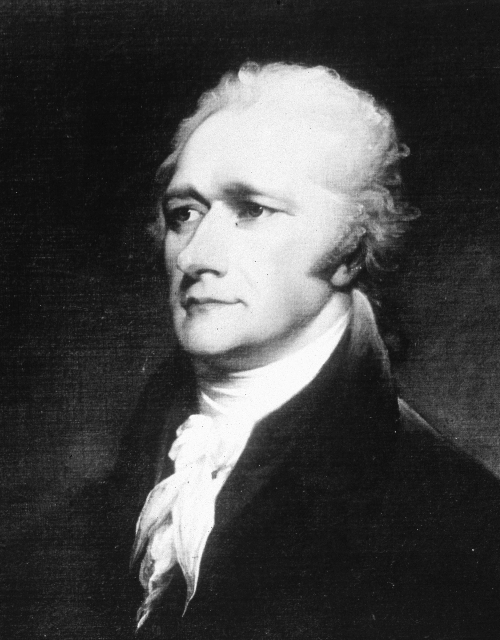
Alexander Hamilton
|
With such discoveries came new principles of self-organization, such as the 1648 Peace of Westphalia that not only put an end to the oligarchy’s 30 year religious warfare, but established the principle of ‘The Benefit of the Other’ as the basis of national sovereignty. From the 1648 Peace, a new platform was created upon which the next great revolution could begin with the 1776 American Declaration of Independence. With the 1776 Declaration and 1789 Constitution, a nation founded upon life, liberty and the pursuit of happiness was instituted for the first time amongst men. By 1791, Alexander Hamilton, First Treasury Secretary and Benjamin Franklin protégé established his American System of Political Economy with his 1791 reports on the National Bank, Public Credit, and most importantly the Subject of Manufactures where Hamilton defined the purpose and value of economic planning, not according to “pleasure/pain, utility or money”, but rather “to cherish and stimulate the activity of the human mind, by multiplying the objects of enterprise, is not among the least considerable of the expedients, by which the wealth of a nation may be promoted. Even things in themselves not positively advantageous, sometimes become so, by their tendency to provoke exertion. Every new scene, which is opened to the busy nature of man to rouse and exert itself, is the addition of a new energy to the general stock of effort.”
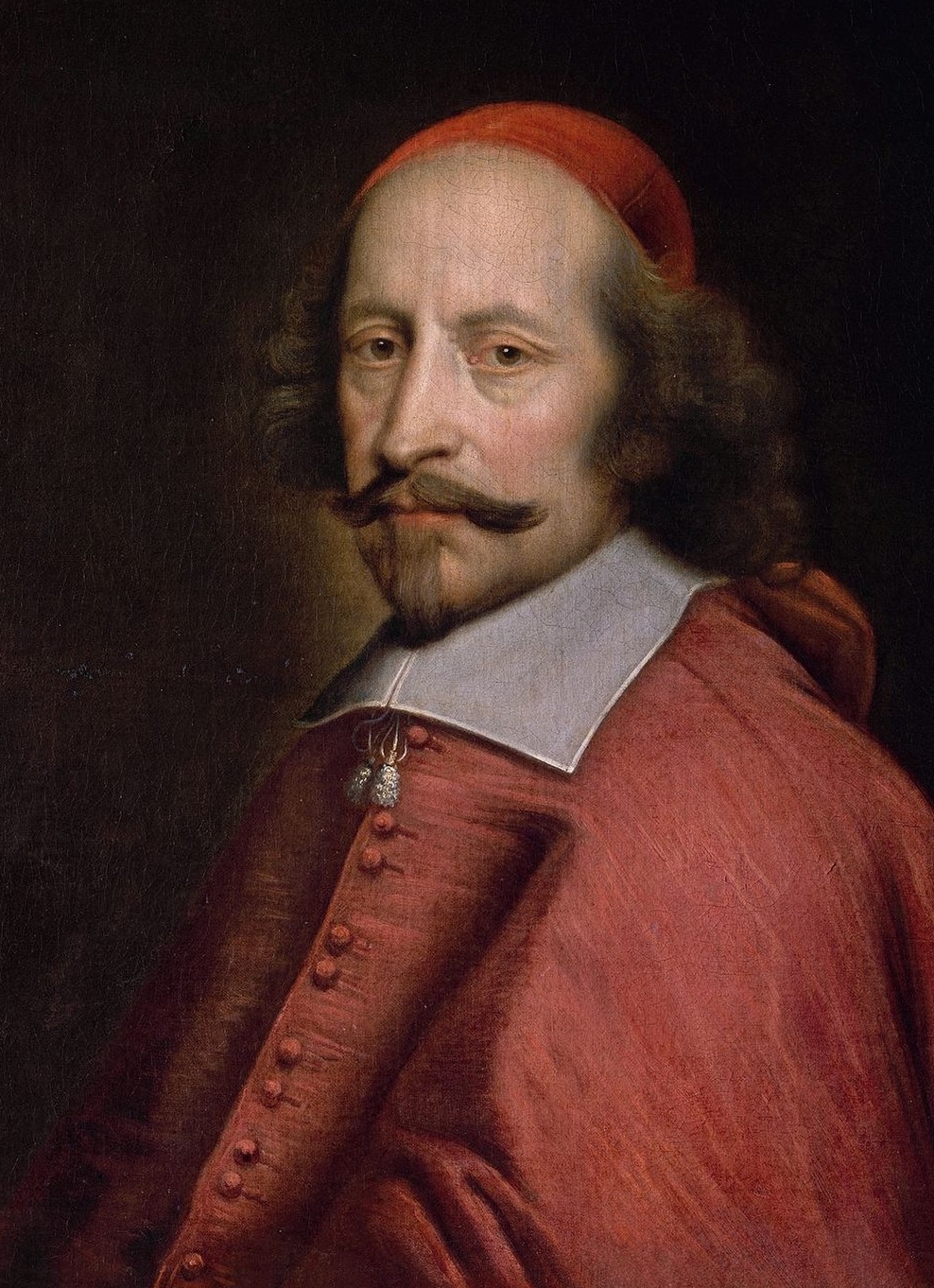 |
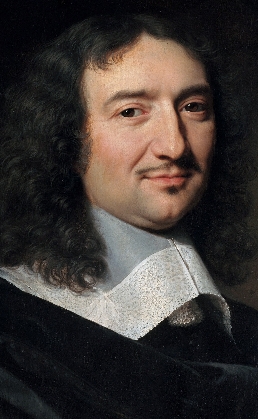 |
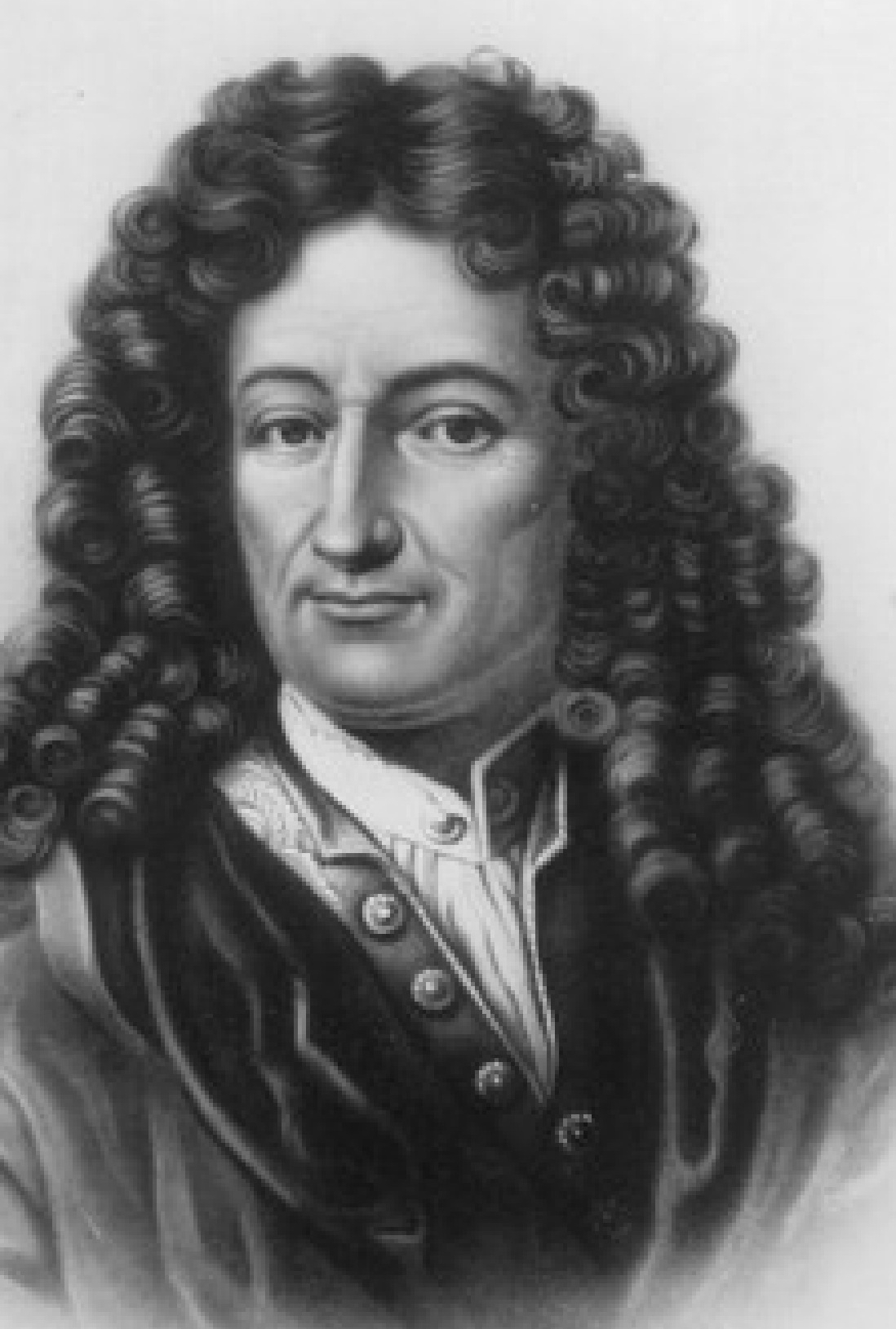 |
|
The Cameralist School of Physical Economy was led by such figures as Cardinal
Mazarin (left), Jean-Baptiste Colbert (middle) and Gottfried Leibniz (right) |
||
This American System was the effect of rigorous studies of Platonic texts such as the Republic, and the French Cameralist (aka: Dirigist) economic school as applied by such leading organizers of the Westphalian Treaty as Cardinal Mazarin, and France’s Finance Minister Jean-Baptiste Colbert, not to mention their spiritual heir, the great scientist and statesman Gottfried Leibniz. Nearly written out of today’s history books, these men played a direct role in the formation of the early colonies of the Americas and New France. In his 1984 So You Wish to Learn All About Economics?, a modern representative of this tradition, Lyndon H. LaRouche (1923-2019), credits Leibniz as also having been the founder of the science of Physical Economy and intellectual inspiration for the American System.(2) Virtually every nationalist American president who attempted to revive this system throughout the coming two centuries, including President Trump today had to contend with Britain’s deep state structures within America itself.
(1) “Made in the living image of the creator”
(2) The earliest known document produced by Gottfried Leibniz on the topic of physical economy as a branch of science are found in his Science and Economy (1671).
Our most recent 500 years of universal history have been principally driven by the British oligarchy’s burning fear of the applied truth of these discovered principles of self-organization of mankind as a whole. Every innovation by the British Empire since that time, has been effected specifically with the intention of undoing the truth that such singular leaps in potential imply for humanity’s true destiny.
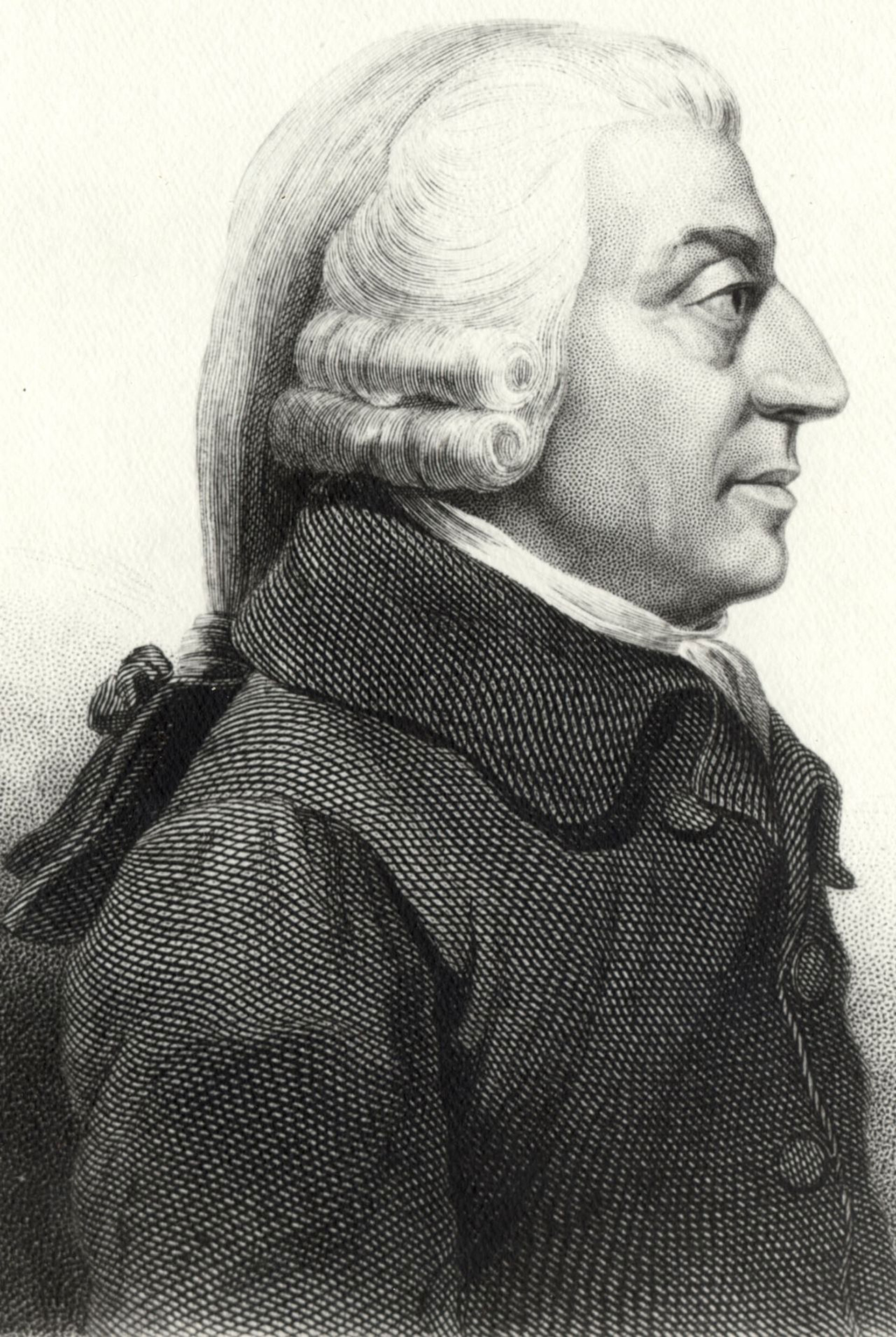 |
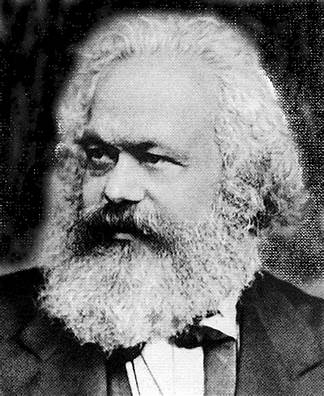 |
|
|
Adam Smith and Karl Marx: Two sides of the Same British Coin
|
||
In order to obscure the truth of the American System’s success and even existence as an idea, two programs were formulated by liars and fools directly under the pay and control of the leading priests of the British Empire. The first was known as Adam Smith’s doctrine of Free Trade as elaborated in his 1776 Wealth of Nations. The second was Marx’s doctrine of Communism as elaborated in his 1867 Das Capital. Wealth of Nations was a response to the American Revolution, and served as a framework to convince the new republic to abandon plans at developing manufacturing and remain agrarian, emphasizing individual liberty/pleasure but not the well-being of the whole. In Smith’s doctrine, national rights to protectionism against the dumping of cheap goods and directed credit were antagonistic to “self- regulating marketplaces”. Inversely Marx’s Capital was produced as a response to the ‘2nd American Revolution’ of 1865 and served as a sophistical argument to attempt to control the industrialization built up by the Hamiltonian American System since 1791. Das Capital focused on the utilitarian “Good” of the whole at the expense of the individual.
Both systems of Smith and Marx were not only grounded in a radical empiricism (belief in the validity of sense-impressions), but also empiricism’s necessary corollary: that mankind is in essence no more than 1) his material flesh and 2) his ability to adapt to his material environment, both political and physical. Thus, contrary to the Renaissance humanist view that premises mankind’s essence on his soul and capacity to express his creative personality by discovering and changing the laws of the universe for the better, the empiricist of the left or the right, concludes that mankind is actually a beast. Creative leaps of progress in the arts and science which apparently separate man from the biosphere, and permit for the increase of the productive powers of labour without intrinsic limit must be assumed by the empiricist to be merely chimerical anomalies which must be kept as obscure as possible from the mass of the human cattle.
By Marx’s day, Darwin’s thesis of natural selection as the effect of a constant struggle for existence had provided new fuel for the imperialist’s world view and had fed Marx’s thesis. After reading On the Origin of Species, Marx sent a personally signed copy of Das Capital to Darwin in 1873 and had a German edition dedicated “In deep appreciation for Charles Darwin”.
Both systems also share the common lie that since universal principles are unknowable, that the only metrics a society is permitted to use in judging value are some mixture of “pleasure” and “utility”. Of the two, Smith was much more explicit in his writings on this point. In his Theory of Moral Sentiments (1759), he writes:
“Hunger, thirst, and the passion which unites the two sexes, the love of pleasure, and the dread of pain, prompt us to apply those means for their own sake, and without any consideration of their tendency to those beneficent ends which the great Director of nature intended to produce by them.”

A wolf in sheeps clothing.
The Fabian Society Logo |
It is a fact that cannot be missed by the honest intellect that recent history has been shaped by agencies operating outside of the general field of perception of the majority of the population. As previous reports have documented, such agencies have expressed themselves in the form of two polarities operating from one Oxford mind during the first years of the 20th century. Those two operations were the Round Table Movement catering to the so called “new right” anglophiles of the world on the one side, and a “new left” sect known as Fabian Socialists on the other. Through their various manifestations over the century, both organizations have worked together to create structures of thought, belief and law which lock their victims into a world where creative improvement of man and nature mediated by self-conscious reason is abandoned.
In this world of no change, the ugly fact of diminishing returns cannot be avoided since no new resources except those that are already in practice can come into being. In this system of scarcity, the ugly necessity of sterilization, and murder of the unfit based on material considerations (both genetic and environmental) becomes real, and the laws of Malthus become hegemonic. This process of decay has become more popularly known as “Entropy” or “The Second Law of Thermodynamics,”(3) and has become treated by a language developed as an outgrowth of the belief called “systems analysis”. The hegemony of systems analysis today is due directly to the Fabian Society networks and Rhodes Trust allies working through both Soviet and Western systems throughout the Cold War.
The Fabian Society was founded by an elitist clique of Darwinian propagandists in 1884 who saw Karl Marx’s newly published system as the perfect vehicle to carry Darwin’s logic into the belief structure of the masses. In fact, all members were devout racists obsessed with the problem of convincing mankind to submit to racial cleansing along the lines prescribed by Herbert Spencer’s Social Darwinism and Francis Galton’s field of Eugenics. Both Spencer and Galton were closely directed by Thomas Huxley’s X Club, at this point entirely in charge of imperial science policy. The eerie Fabian Symbol features a wolf wearing sheep’s clothing.
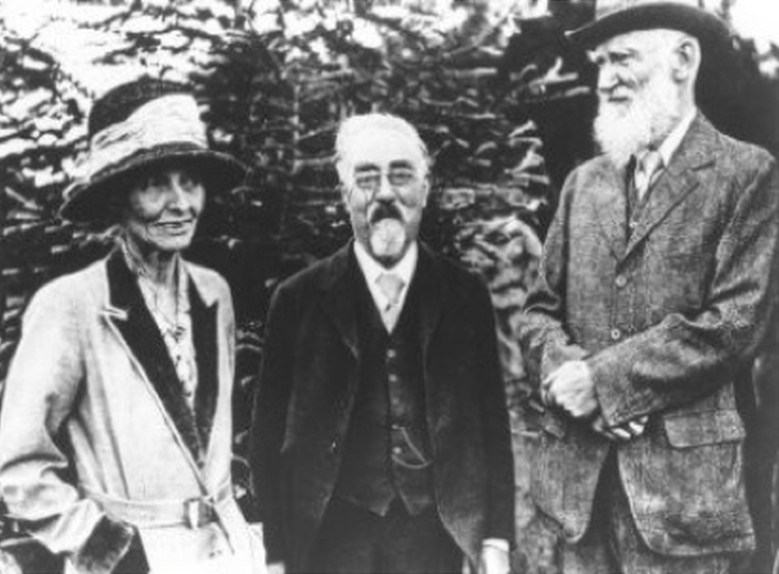
Early leading Fabians Beatrice and Sidney Webb, and G.B. Shaw (right)
|
The most prominent founding members were Sidney and Beatrice Webb and George Bernard Shaw. This group was soon joined by various influential aspiring priests of the British Empire, namely leading Theosophist Annie Besant, Huxley protégé H.G. Wells, Bertrand Russell, Arthur Balfour, and the founder of Geopolitics Halford Mackinder. The name “Fabian” was chosen for the Roman General Fabius Maximus (aka: The Delayer), who’s fame is founded on having beaten Hannibal by never engaging in direct combat, but rather by sheer endurance and attrition. In the founding Fabian document it was written:
“For the right moment you must wait, as Fabius did most patiently, when warring against Hannibal, though many censured his delays; but when the time comes you must strike hard, as Fabius did, or your waiting will be in vain, and fruitless.”(4)
The Fabian society program focused on broad social welfare programs such as universal health care, mass education, and better working conditions which were designed to attract the disenfranchised masses. Under the Fabian program, such programs held no substance in reality, as the true means to justify their creation was banned a priori (aka: scientific and technological progress). That is, the activation of self-conscious reason in all members of society.
This ruse was thus designed to merely bring the will of the lower classes under the deeper influence of a ruling oligarchy via the promise of “democratic socialism” and a naïvely utopian “end of history” ideal. All the masses have to do in order to receive their treats, is to accept being governed by a scientific priesthood which will manage their lives and eventually kill them if they are deemed too numerous or troublesome to maintain. This priesthood will manage pre-existing wealth in such a way as is expedient to placate the mob, but will not allow the creation of new wealth via the activation of the powers of mind as that would force the changing of the parameters of the fixed channels of the system which they seek to manage as gods. The controllers of Fabian Socialism are not, nor have they ever been “democratic socialists”, but brutish social Darwinists. As theosophist Annie Besant said to the Indian Congress party:
“But the general idea is that each man should have power according to his knowledge and capacity. [...] And the keynote is that of my fairy State: From every man according to his capacity; to every man according to his needs. A democratic Socialism, controlled by majority votes, guided by numbers, can never succeed; a truly aristocratic Socialism, controlled by duty, guided by wisdom, is the next step upwards in civilization.”(5)
Without a genuine commitment to scientific discovery and the unbounded increase of the productive powers of labour, as laid out clearly in the American System of Political Economy, then no promise of social welfare measures are durable. Any such handouts will necessarily result in a Ponzi-pyramid crisis which will, by its very nature, force the logic of triage and thus fascism onto the dupes that “democratically” permitted its hegemony. All current arguments to cut social security, pension plans, health care, and education are derived from this function. The rise of environmentalism as a “new post- industrial religion” today pushed by a Green New Deal has a blood curdling agenda of depopulation behind its nominal socialist costume.
Working closely with leading figures of Oxford, and especially the Rhodes Trust, the Fabians set up their own school with Rothschild funding called the London School of Economics (LSE) in 1895. The ideological framework employed by both the LSE and Oxford agents were always formulated by Cambridge, which to this day remains the core intellectual hive of the empire’s rotten ideas. Oxford and LSE continue to exist primarily for the purposes of setting up programs which “apply” those “pure” ideas formulated in Cambridge into general practice in the interests of the ruling oligarchy. Prominent Fabian controllers who recruited young talent at the LSE were Frederick von Hayek, Bertrand Russell, John Maynard Keynes, and Harold Laski.
Five years after LSE was established, the Labour Party was created as the official Fabian political party. Its function was essentially take over the role of the left from the Liberals in opposition to the Conservative government which had previously been the two hegemonic parties in Britain. One of the most perverse members of the movement, playwright George Bernard Shaw laid out the method of permeation which had governed the Fabian success in permeating influential socio political institutions:
“Our propaganda is one of permeating – we urged our members to join the Liberal and Radical Associations in their district, or, if they preferred it, the Conservative Associations – we permeated the party organizations and pulled all the strings we could lay our hands on with the utmost adroitness and energy, and we succeeded so well that in 1888 we gained the solid advantage of a Progressive majority full of ideas that would never have come into their heads had not the Fabians put them there.”
This is exactly what was done. Over this century, the LSE has conditioned dozens of heads of state, tens of thousands of civil servants and several generations of academics.
In Canada this process was replicated in 1931 when the “Fabian Society of Canada” was created by 5 Rhodes Scholars and dubbed the League of Social Reconstruction. It quickly created a pro-eugenics political party called the Cooperative Commonwealth Federation in 1932 which changed its name to the NDP in 1961. Many of its core controllers took over the Liberal Party after the purge of pro- American system statesman C.D. Howe and his allies after 1957.
More cabinet officials under Barack Obama had studied at Oxford and LSE than its American counterparts Yale, Harvard or Princeton.(6) This is the essence of the Deep State which has sought to overthrow President Trump ever since he became a serious candidate in the 2016 elections.
This method of “permeation” is analogous to a virus taking over the white blood cells of a victim. At first, the virus’ presence in the system is hardly noticeable, but when organs begin to unexpectedly malfunction, the thoughtless person may foolishly choose not to seek help, but wait for the immanent point at which he is past the point of no return. This infection has taken place thousands of years ago, and while humanity produced bursts of potential led by creative genius over the generations, mankind still has not learned his lesson.
(3) The 2nd Law of Thermodynamics presumes that all fixed systems contain a fixed amount of energy, and thus for every addition of activity within the fixed system, the system as a whole has ever less energy to sustain itself, and is thus vectored inexorably towards an “equilibrium” point of heat death (ie: potential for change is always diminishing as entropy increases proportionally)
(4) Quoted in A.M. McBriar, Fabian Socialism and English Politics, 1884–1918. [1962] Cambridge: Cambridge University Press, 1966; pg. 9.
(5) Annie Besant. “The Future Socialism”. Bibby’s Annual (reprinted by Adyar Pamphlet). OCLC 038686071. Bessant herself was made President of the India Congress Party in 1917
(6) Under Obama, White House Chief of Staff, Deputy Chief of Staff, Budget Director, and Secretary for Homeland Security have all studied at LSE while Secretary of State Susan Rice was an Oxford Rhodes Scholar. This does not of course, imply that Yale, Harvard or Princeton are in any way reputable schools, but it is indicative of who really runs American policy.
It is of absolute necessity that now, even at this late date, the lessons of past mistakes are learnt before the lawful outcome of this virus runs its course and kills its host. The essence of mankind’s troubles is not derived by any defect in our nature, or our “greedy yearning for progress”. It is not due to our fixed “selfish nature”, nor will our problems be resolved by adopting a “sustainable” system of zero technological growth under “Green New Deals”. Such a system only exists in the delusional mind of an oligarch or their victims, but not in nature. If such a system were to be imposed on our 21st century society, a genocide magnitudes greater than anything Hitler could have dreamed will be the result.
So let us put away such Fabian theories as “man-made global warming”, and “zero growth green technologies” which will produce only famine, war, and chaos. Let us instead rediscover the identity which was inspired by Benjamin Franklin’s discovery of electric fire. The quickest path to reawakening this identity within the greatest portion of the species is by engaging in such great projects the Belt and Road Initiative, embarking upon a total nuclear power renaissance, and returning to John F. Kennedy’s vision for unbounded space exploration as Presidents Trump, Xi, and Putin have all made national priorities. If the nature of humanity is to truly live as made in the image of the creator, then adapting like an animal to the unchangeable and unknowable cycles of nature is not compatible with our purpose.
The Fabian Society: Eugenics From the Left
In case any doubts yet linger that the Fabians or their Rhodes Trust counterparts on the so-called “right” have advanced their agenda in order to apply genocidal eugenics programs on a scale unimagined by even Hitler, then simply read their own words, and judge for yourself.
“The moment we face it frankly we are driven to the conclusion that the community has a right to put a price on the right to live in it ... If people are fit to live, let them live under decent human conditions. If they are not fit to live, kill them in a decent human way. Is it any wonder that some of us are driven to prescribe the lethal chamber as the solution for the hard cases which are at present made the excuse for dragging all the other cases down to their level, and the only solution that will create a sense of full social responsibility in modern populations?” -- George Bernard Shaw, Prefaces (London: Constable and Co., 1934), p. 296
“I believe that now and always the conscious selection of the best for reproduction will be impossible; that to propose it is to display a fundamental misunderstanding of what individuality implies. The way of nature has always been to slay the hindmost, and there is still no other way, unless we can prevent those who would become the hindmost being born. It is in the sterilization of failure, and not in the selection of successes for breeding, that the possibility of an improvement of the human stock lies.” -- H.G. Wells in American Journal of Sociology, Vol. 10 (1904), p. 11
“We may perhaps assume that, if people grow less superstitious, government will acquire the right to sterilize those who are not considered desirable as parents. This power will be used, at first, to diminish imbecility, a most desirable object. But probably, in time, opposition to the government will be taken to prove imbecility, so that rebels of all kinds will be sterilized. Epileptics, consumptives, dipsomaniacs and so on will gradually be included; in the end, there will be a tendency to include all who fail to pass the usual school examinations. The result will be to increase the average intelligence; in the long run, it may be greatly increased. But probably the effect upon really exceptional intelligence will be bad.
Eugenics has, of course, more ambitious possibilities in a more distant future. It may aim not only at eliminating undesired types, but at increasing desired types. Moral standards may alter so as to make it possible for one man to be the sire of a vast progeny by many different mothers. ... If eugenics reached the point where it could increase desired types, it would not be the types desired by present-day Eugenists that would be increased, but rather the type desired by the average official. Prime Ministers, Bishops, and others whom the State considers desirable might become the fathers of half the next generation...
If we knew enough about heredity to determine, within limits, what sort of population we would have, the matter would of course be in the hands of State officials, presumably elderly medical men. Whether they would really be preferable to Nature I do not feel sure. I suspect that they would breed a subservient population, convenient to rulers but incapable of initiative.” -- Bertrand Russell, “ICARUS or the Future of Science” (1924)
“Galton’s eccentric, sceptical, observing, flashing, cavalry-leader type of mind led him eventually to become the founder of the most important, significant and, I would add, genuine branch of sociology which exists, namely eugenics.” -- John Maynard Keynes on Galton’s Eugenics, Eugenics Review 1946
“Political unification in some sort of world government will be required... Even though... any radical eugenic policy will be for many years politically and psychologically impossible, it will be important for UNESCO to see that the eugenic problem is examined with the greatest care, and that the public mind is informed of the issues at stake so that much that now is unthinkable may at least become thinkable.” -- Sir Julian Huxley, UNESCO: Its Purpose and Its Philosophy. 1946
“I contend that we are the finest race in the world and that the more of the world we inhabit the better it is for the human race. Just fancy those parts that are at present inhabited by the most despicable specimens of human beings what an alteration there would be if they were brought under Anglo-Saxon influence, look again at the extra employment a new country added to our dominions gives. I contend that every acre added to our territory means in the future birth to some more of the English race who otherwise would not be brought into existence. Added to this the absorption of the greater portion of the world under our rule simply means the end of all wars, at this moment had we not lost America I believe we could have stopped the Russian-Turkish war by merely refusing money and supplies. Having these ideas what scheme could we think of to forward this object.” -- Cecil Rhodes, Confession of Faith, 1888
“I do not agree that the dog in a manger has the final right to the manger even though he may have lain there for a very long time. I do not admit that right. I do not admit for instance, that a great wrong has been done to the Red Indians of America or the black people of Australia. I do not admit that a wrong has been done to these people by the fact that a stronger race, a higher-grade race, a more worldly wise race to put it that way, has come in and taken their place.” -- Winston Churchill to the Peel Commission, 1937
 |
Matthew J.L. Ehret is a journalist, lecturer and founder of the Canadian Patriot Review. He is an author with The Duran, Strategic Culture Foundation, Fort Russ. His works have been published in Zero Hedge, Executive Intelligence Review, Global Times, Asia Times, L.A. Review of Books, and Sott.net. Matthew has also published the book “The Time has Come for Canada to Join the New Silk Road” and three volumes of the Untold History of Canada (available on untoldhistory.canadianpatriot.org). He can be reached at
|
Editor's note:
Part 4 was not included as part of the previous document (Parts 1-3).
However, it seems appropriate to include it at this time (April 2022). |
 |
While the WEF’s Young Global Leader program has recently become infamous, it follows the model of a much older program and think tank established with the ill-begotten gains of Cecil Rhodes.
The recent, pandemic-ridden years have involved a steep and often traumatic learning curve for many citizens across the Trans Atlantic. One particularly shocking revelation that has ripped virally across the internet in recent days revolves around the revelations that the World Economic Forum’s ‘Young Global Leaders’ have been positioned across western governments and powerful private institutions over the past three decades.
Videos of Klaus Schwab bragging that Young Leaders have been positioned across the governments of Canada, Argentina, Europe and beyond are now being posted across social media platforms on a daily basis, confirming the suspicions of many that the World Economic Forum is not a benign business networking operation, as it has tried to project for the credulous. Rather, it is something much darker and insidious.
Set up in 1993 as the Global Leaders of Tomorrow and renamed WEF Young Leaders Forum in 2004 (fueled with funds from such benevolent institutions as JP Morgan Chase and the Bill and Melinda Gates Foundation), over 1400 young leaders (under the age of 38) from both public and private sectors have been processed through the program. For those tapped to become members of this elitist clique, they agree to attend six years of regular WEF conferences featuring seminars, focus groups and other special experiences both at Davos and at regional WEF events, at which point they graduate and become “alumni” who, in turn, become capable of nominating future young leaders.
Just a tiny sampling of the prominent figures who have been processed and installed into positions of influence to advance the WEF globalist agenda over the past 30 years include Angela Merkel, Nicholas Sarkozy, Emmanuel Macron, Tony Blair, Mark Zuckerberg, José Manuel Barroso, Bill Gates, Chrystia Freeland, Pete Buttigieg, Jacinda Arden (PM New Zealand), Jack Ma (Ali Baba founder), Larry Fink (Blackrock CEO), Larry Page (Google founder), Lynn Forrester de Rothschild (Council for Inclusive Capitalism founder), Jimmy Wales (Wikipedia founder), Peter Thiel (Paypal founder), Leonardo Di Caprio (tool), Richard Branson (Virgin Records CEO), Jeff Bezos (Amazon founder), Stephan Bancel (Moderna CEO), Pierre Omidyar (Ebay co-founder), Alizia Garza (co-founder BLM), Jonathan Soros (son of sociopath) and, according the Schwab, himself “half the Canadian Cabinet” under Prime Minister Justin Trudeau.
As important as it is to hold this disturbing fact in mind, it is even more important not to lose sight of the deeper historical forces at play and the older institutional practice of talent searching young blood upon which the YGL Program is based.
Just as Klaus Schwab was never his own man, having been trained by his mentors Maurice Strong (co-founder of the WEF)(1) and his Harvard mentor Henry Kissinger, so too were Klaus’ Young Leaders merely a modern version of an older practice that has been at play for over 114 years. This older institution is the Rhodes Scholarship system and the associated Round Table Movement, which created both Chatham House in 1919 and its American branch, dubbed “The Council on Foreign Relations,” in 1921.
This program has been incredibly influential and has also generated immense damage over the last century. Thousands of young Americans have been processed through the halls of Oxford since its founding who are then re-inserted back into their native land with a religious-like zeal to advance an agenda, the full scope of which very few of them truly comprehend.
[1] Klaus Schwab delivered the following remarks upon Strong’s 2015 death saying: “He [Strong] was my mentor since the creation of the Forum: a great friend; an indispensable advisor; and, for many years, a member of our Foundation Board. Without him, the Forum would not have achieved its present significance.”
On year later, at a 2016 Davos meeting, Justin Trudeau went further in his eulogizing Strong saying: “Thank you Professor Schwab for your warm welcome, and for bringing this impressive group together. I’d like to take a moment just off the top to recognize a founder of the World Economic Forum and a great Canadian, Maurice Strong, who passed away just a couple of months ago.”
During the first year of the Biden administration, swarms of Oxford-trained Rhodes Scholars were swept into dominant positions of power across America’s domestic and foreign policy landscape.
The hegemony of the Council on Foreign Relations as a major top-down planning center for the Rules-Based International Order has also been firmly re-established after having been relegated to a back seat during the four year period of Donald Trump’s presidency. Trump’s term was referred to by CFR President Richard Haass as “the aberration”. Haass himself is a Rhodes Scholar, having graduated from Oxford’s Oberlin College in 1978.
The CFR and the Rhodes Scholarship program are simply two sides of the same process that have acted as a key pillar to the establishment of fifth column operations within the USA, and the Trans Atlantic Community more generally, during the past century. Both the CFR and the Rhodes Scholarship were established by the ill-begotten fortunes of Cecil Rhodes.
Every year since its creation in 1902, over 30 talented young American scholars have been rewarded each year with the privilege of an all-expenses-paid brainwashing in the halls of Oxford University, on the dime of the riches left to posterity by the deceased diamond magnate Cecil Rhodes, before being re-deployed back to their home nations.

Cecil Rhodes long had a reputation as a
vicious racist Here, an editorial features him dominating Africa |
Rhodes himself was a leading mining magnate who was used by the powerful financiers of London to consolidate mining operations across South Africa, thereby cornering the global diamond market and founding such rapacious institutions as DeBeers. Rhodes used his economic influence to rapidly ascend through the ranks of political office, becoming Prime Minister of Cape Colony, which comprised much of today’s South Africa, from 1890-1896.
During this time, Rhodes oversaw the vast theft of lands from native Africans while also guaranteeing that no blacks would be permitted to play any role in the political process by tripling the wealth requirement for voting.
Rhodes consolidated British imperial control over much of southern Africa by directing the invasion and takeover of the region north of Cape Town (today’s Zambia and Zimbabwe), which later became dubbed Rhodesia.
During the second Boer War against the Transvaal Republic (a coalition of Dutch settlers and Zulus), Rhodes’ network of sociopathic imperial managers, dubbed “Milner’s Kindergarten,” worked with Lord Kitchener to innovate new genocidal techniques for asymmetrical warfare. These techniques included poisoning water systems and establishing a new model of concentration camps, which killed over forty thousand innocent civilians via starvation and disease.
Commenting upon the rates of children dying in the concentration camps, Lord Milner, a close ally of Rhodes, stated the “fact that the death rate among young children in the camps was still not dropping. ‘The theory that, all the weakly children being dead, the rate would fall off is not so far borne out by the facts… The strong ones must be dying now and they will all be dead by the spring of 1903.'”
This concentration camp system proved incredibly effective at breaking the spirits of the Transvaal soldiers who soon succumbed to the empire’s stranglehold across South Africa. It was later adopted by the Nazis during WWII.
Rhodes’ early disciples included such luminaries as Lord Alfred Milner, Sir Halford Mackinder, George Parkin, W.T. Stead and the Canadian oligarch Vincent Massey (to name a few). His early backers included high level figures among the British intelligentsia including Prince Edward Albert and Lord Nathaniel Rothschild, who saw that a new strategy was needed to halt the spread of the American System and its policies around the world, particularly in the wake of Lincoln’s victory over the South during the Civil War.
During the last decades of the 19th century, it was becoming increasingly clear to many that the unipolar days of the British Empire stood on shaky foundations. Starting in the 1870s, a new multipolar system of win-win cooperation was emerging internationally due to the spread of nationalist systems of political economy, modelled on the best attributes of America’s Hamiltonian system.
In Germany, the Zollverein was established under Chancellor Bismarck, which unified the compartmentalized state around a holistic protective tariff to block the dumping of cheap goods from abroad, while uniting Germany’s regions around internal free trade, productive credit, rail development, industrial growth and other labor reforms. These reforms had been driven by the teachings of the influential German economist Friedrich List, who formulated his system during his five years in the USA. He was among the first to coin the term “American System of Political Economy” in 1827.
In Russia, Finance Minister Sergei Witte led a parallel reform, adopting protectionism to favor the growth of native agro-industrial power while driving continental interconnectivity via the Trans Siberian Railway (made with Baldwin Locomotives from Philadelphia), which was assisted by teams of American engineers. Witte worked closely with a network of nationalists who had worked closely with Lincoln to save the union from British-directed dissolution during the Civil War. He initiated the sale of Alaska with plans to extend rail and telegraph through the Bering Strait and launched a vast anti-corruption program in Russia itself.
Protectionism, anti-corruption reforms and internal improvements were adopted in France by the government of Sadi Carnot and his Foreign Minister Gabriel Hanotaux and also in Japan, where American advisors like Erasmus Peshine Smith where American advisors like Erasmus Peshine Smith where American advisors like Erasmus Peshine Smith were helping the restored Meiji government adopt national banking programs and rail development.
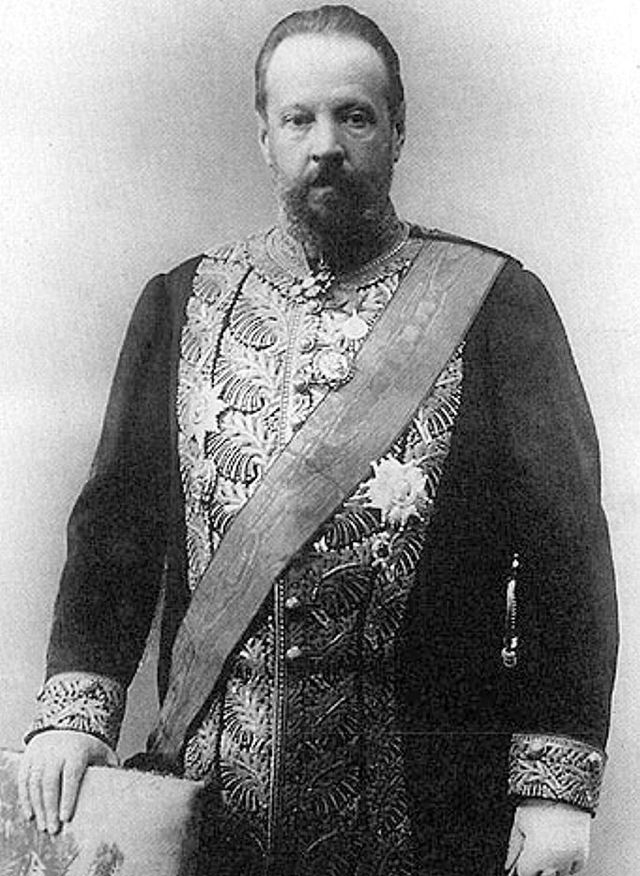 |
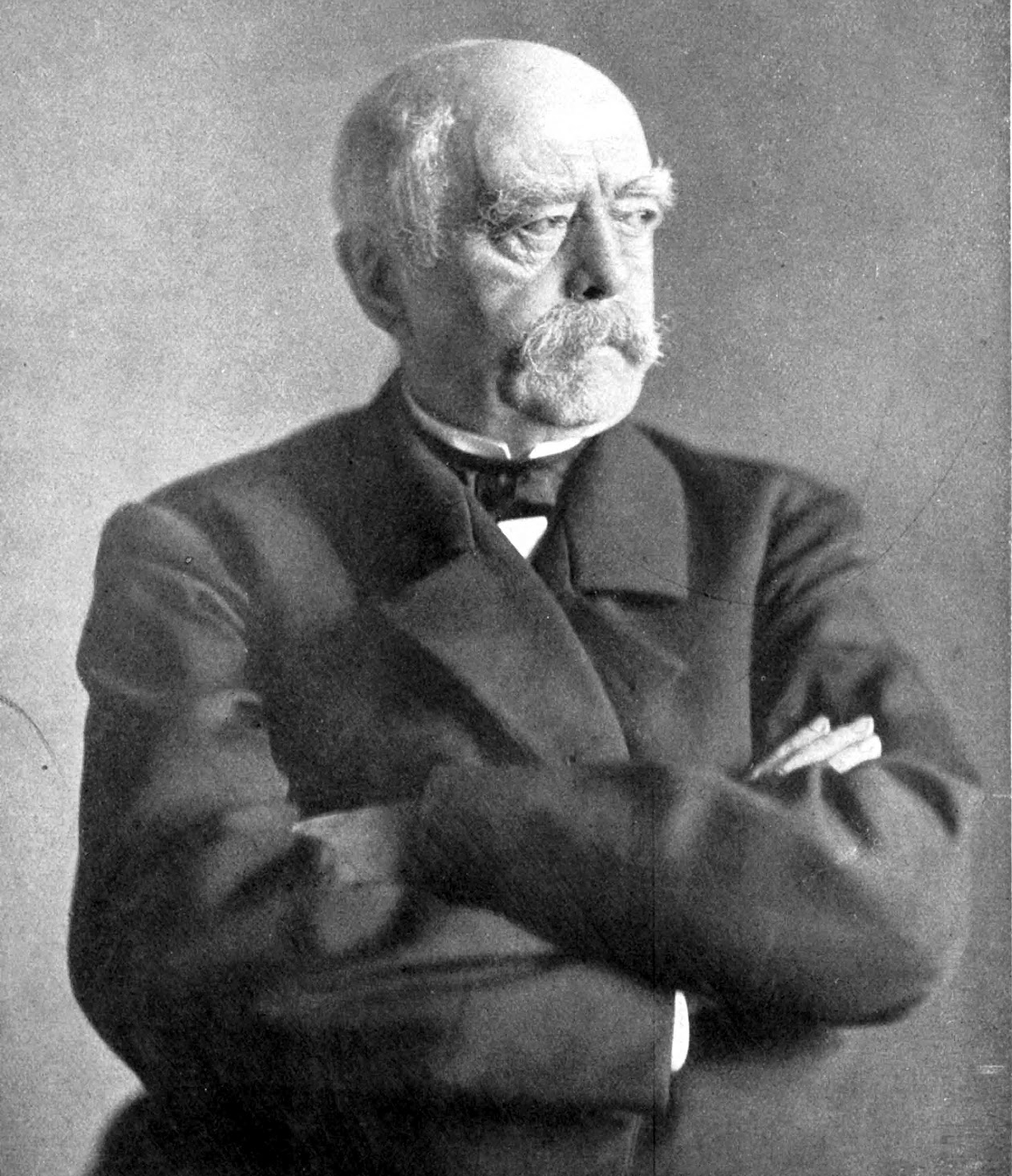 |
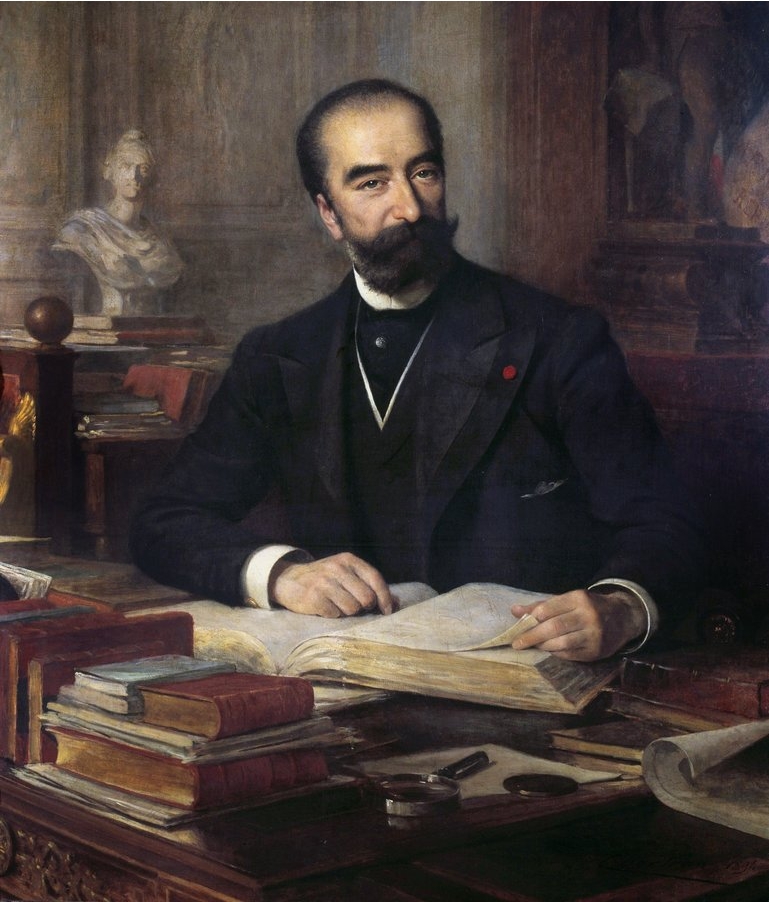 |
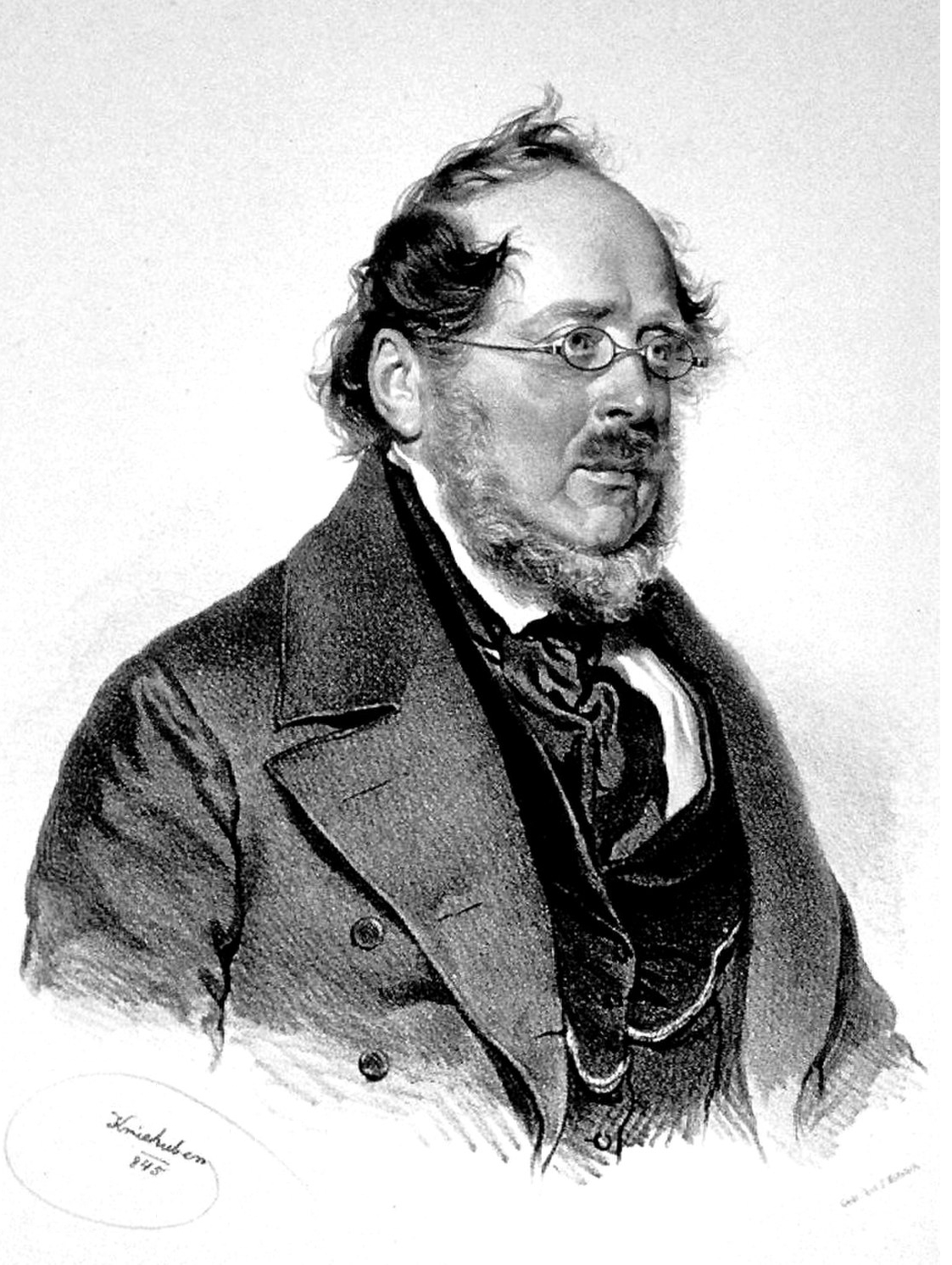 |
|
After the 1876 Centenial Convention of America, American System converts from Europe such as (left to right)
Russian Transport Minister Sergei Witte, German Chancellor Otto von Bismarck and French President Sadi Carnot began implementing the system advocated by Henry C. Carey, and Carey's German ally Frederich List (author of Germany's Customs Union program). |
|||
What was most frightening for the upper echelons of the British elite, was that these developments were not isolated to the borders of various states wishing to break free of British dominance of private finance and maritime shipping – they now extended across borders. Bismarck’s Berlin-to-Baghdad railway was one example, as was the Russia-Chinese railway through Manchuria.
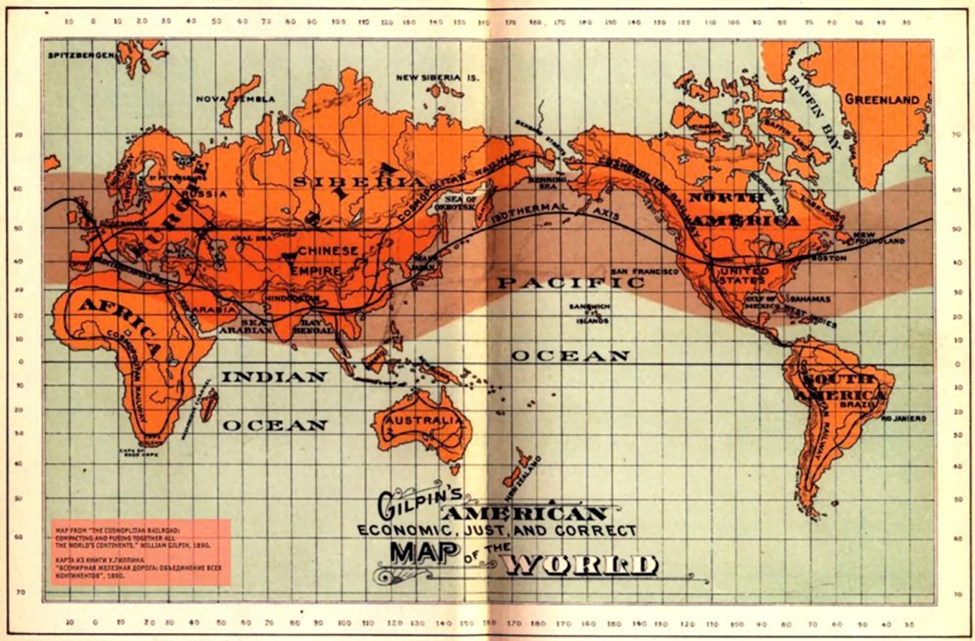
Image commissioned by Gov. William Gilpin published in
1890 Cosmopolitan railway |
Rail projects extending the newly built Trans Continental railway through British Columbia, and then through Alaska and the Bering Strait into Eurasia, were being discussed by statesmen and engineers on both sides of the Atlantic from the moment Alaska was sold to the USA in 1867. These discussions continued until the day Witte was ousted from power in 1906. The 1890 Cosmopolitan Railway map published by Lincoln-ally and former Governor of Colorado William Gilpin is a reminder of the trajectory of the sort of world then being brought into existence.
The growth of a community of win-win cooperation as the basis for international law was a prospect deemed intolerable by many devout social Darwinists and eugenicists among the British ruling class.
Outlining his vision for the new paradigm then coming into being, Gilpin wrote in 1890:
“The weapons of mutual slaughter are hurled away; the sanguinary passions find a check, a majority of the human family is found to accept the essential teachings of Christianity IN PRACTICE… Room is discovered for industrial virtue and industrial power. The civilized masses of the world meet; they are mutually enlightened, and fraternize to reconstitute human relations in harmony with nature and with God. The world ceases to be a military camp, incubated only by the military principles of arbitrary force and abject submission. A new and grand order in human affairs inaugurates itself out of these immense concurrent discoveries and events”
This was not an operating system acceptable to the misanthropic ideals of Malthusian social engineers, whose self interest was located in keeping the world divided, ignorant, hungry and at war. Something had to be done.
The early members of the Rhodes Trust hive interfaced closely with London’s Fabian Society throughout the 20th century and became the new disciplined elite that gradually infiltrated throughout society. This new breed of imperial management exerted its influence in much the same way earlier Jesuit operations had been formed and deployed across Europe beginning in the 16th century.
|
Eugenics from the Right: The Round Table
|
|||||
|
|||||
|
A core group would arise to form a new secret sociery to renew the British Empire, Key figures ofthe Round Table Group (left to right):
Lord Nathanial Rothschild, John Ruskin, Lord Alfred Milner, William T. Stead, and Cecil Rhodes. (Though Ruskin was not dinectly a member, his ideas formed a major basis for its existence) |
|
Eugenics from the Left: The Fabian Society
(Leading Fabians) |
||||||
|
For anyone confused as to the purpose of this Rhodes Scholarship program, one need look no further than Rhodes’ 1877 Confessions of Faith and Seven Wills, which called for the domination of “inferior races” by Anglo-Saxon superiority, as well as the ultimate recapturing of America and the creation of a new Church of the British Empire:
“Let us form the same kind of society, a Church for the extension of the British Empire. A society which should have its members in every part of the British Empire working with one object and one idea we should have its members placed at our universities and our schools and should watch the English youth passing through their hands just one perhaps in every thousand would have the mind and feelings for such an object, he should be tried in every way, he should be tested whether he is endurant, possessed of eloquence, disregardful of the petty details of life, and if found to be such, then elected and bound by oath to serve for the rest of his life in his Country. He should then be supported if without means by the Society and sent to that part of the Empire where it was felt he was needed.”
In another will, Rhodes described in more detail his intention to create an organization:
“For the establishment, promotion and development of a Secret Society, the true aim and object whereof shall be for the extension of British rule throughout the world. The colonization by British subjects of all lands where the means of livelihood are attainable by energy, labour, and enterprise and especially the occupation by British settlers of the entire Continent of Africa, the Holy Land, the Valley of the Euphrates, the islands of Cyprus and Candia, the whole of South America, the islands of the Pacific not heretofore possessed by Great Britain, the whole of the Malay Archipelago, these aboard of China and Japan, [and] the ultimate recovery of the United States of America as an integral part of the British Empire.”
Describing his thinking to his disciple W.T. Stead, Rhodes wrote: “Please remember the key of my idea discussed with you is a Society, copied from the Jesuits as to organisation”.
As generations passed, the continuity of purpose that transcended individual lives of players on the stage was maintained by certain organizations that grew out of the original Rhodes/Milner Round Table movements, which now had branches in the Anglo-Saxon majority countries that had formed part of the British Empire. By 1919, after the Round Table had taken control of Canadian and British governments during 1911 and 1916 coups, this group created the Royal Institute for International Affairs (also known as Chatham House).
By 1921, an American branch was set up called the Council on Foreign Relations (CFR), which was staffed with Rhodes Scholars and Fabians and has maintained a continuity of intention to the present day. This organization spawned dozens of influential sub-organizations, which always interface with a form of “central command”. When Hillary Clinton once referred to the CFR as the “mother ship” in 2009, this is what she was referring to.
Although it was inaugurated in 1921, the CFR’s creation can be traced to the same May 30, 1919 meeting at the Hotel Celeste in France that also saw the birth of the Royal Institute for International Affairs. Leading members among the 50 Anglo-American delegates attending that founding meeting included Round Table leader Lionel Curtis, Lord Eustice Percy, German-American financier Paul Warburg and Wilson-advisor Edward M. House. Many of these figures (including House and Warburg) had been instrumental in instituting the US’Federal Reserve System in 1913, and had also gone far to finance the Bolshevik Revolution that turned Russia inside out.
The official Chatham House website described the founding meeting in the following terms:
“At the Hotel Majestic, Curtis gave a rousing speech where he told the assembled scholars and officials that it was up to them, people who operated at the intersection of high politics and scholarship, to shape the new peace by educating the public on international issues. There was also an expectation, underpinned by Anglo-American social connections and institutions such as the Rhodes scholarships, that it would be up to Britain and the United States to determine the course of international politics in the post-war period.”
Branches in Canada, Australia, and South Africa were set up in 1928, 1933 and 1934, respectively.
Although many historians refer to the Council on Foreign Relations as “an American organization,” with the earlier Chatham House acting as junior partner, the truth is just the opposite.
A young student of Harvard’s William Yandell Elliot (himself a leading Rhodes Scholar) was none other than former Secretary of State Sir Henry Kissinger who stated gushingly at a May 10, 1981 Chatham House event:
“The British were so matter-of-factly helpful that they became a participant in internal American deliberations, to a degree probably never practiced between sovereign nations… In my White House incarnation then, I kept the British Foreign Office better informed and more closely engaged than I did the American State Department… It was symptomatic”.
It is no exaggeration to state that many important events that happened during the dark bipolar years of the Cold War intimately involved the top-down role of Rhodes Scholars. Occupying critical positions within the State Department in both the USA and Canada, UN bureaucracy and Foundations, Rhodes Scholars operated with a level of discipline, enthusiasm and coherence unseen in any modern imperial civil service.(2)
From Escott Reid’s designs for NATO two full years before the anti-Russian organization was brought online, to George McGhee’s advance of the Truman Doctrine, to Dean Rusk’s guiding hand behind the Korean War, US support of the French in Vietnam and later US involvement in Vietnam, to Senator J. William Fulbright’s promotion of globalism and a European Union, everywhere you see a bad idea being born during the post-WWII years, there is almost invariably a Rhodes Scholar or “Rhodie” to be found behind it.
Two years before his death on April 12, 1945, President Franklin Roosevelt shared his concerns of this foreign agenda and its disciples permeating his own State Department, waiting to take control of US foreign policy at a moment’s notice, when he said to his son Elliot:
“You know, any number of times the men in the State Department have tried to conceal messages to me, delay them, hold them up somehow, just because some of those career diplomats over there aren’t in accord with what they know I think. They should be working for Winston. As a matter of fact, a lot of the time, they are [working for Churchill]. Stop to think of ’em: any number of ’em are convinced that the way for America to conduct its foreign policy is to find out what the British are doing and then copy that!” I was told… six years ago, to clean out that State Department. It’s like the British Foreign Office….”
Of course, FDR’s vision for a world of US-Russia-Chinese cooperation and internationalization of the New Deal was more than a little anathema to Cold War, which Rhodes Scholars had been preparing so they could sculpt the world order after WWII. Neither FDR, his allies nor his grand design could be tolerated for long.(3)
While the Rhodes Scholar hives managed to permeate ivy league schools, media outlets, private corporations, elected offices and the civil service during the 20th century, as laid out by Professor Carrol Quigley’s posthumously published The Anglo-American Establishment, the prize of the presidency remained an elusive trophy… until the day one of Quigley’s own students returned from Oxford and soon became Governor of Arkansas.
[2] In 1951, the Chicago Tribune published an incredible series of investigative reports by journalist William Fulton outlining the depth of penetration of UN, US State Department, Canadian, academic and private sector foundations (albeit with a mistaken conclusion that the controlling hand behind this conspiracy was “communist”)
[3] Some of FDR’s leading allies who shared in his vision for a multipolar age of global industrial cooperation and whose lives were either cut short or systematically slandered in the post war age include: Undersecretary of State Sumner Wells, Republican Party leader Wendell Wilkie, Harry Hopkins, former Vice President Henry Wallace and leader of the US delegation at Bretton Woods Harry Dexter White.
With Bill Clinton’s 1992 presidential victory, Rhodes Scholars like Strobe Talbott (Assistant Secretary of State and co-architect of Perestroika) and Robert Reich (Secretary of Labor), were joined by “Rhodies” Ira Magaziner, Derek Shearer (Senior Economic Advisors), Susan Rice (Assistant Secretary of State for African Affairs), Kevin Thurme (Health and Human Services Chief of Staff), George Stephanopoulos (Communications Director), Richard Celeste (Ambassador to India) and dozens of other Rhodes Scholars. These individuals were funneled into positions of influence that aimed to oversee the “end of history”, as celebrated by neocon thinker Francis Fukuyama, as the Soviet Union disintegrated.
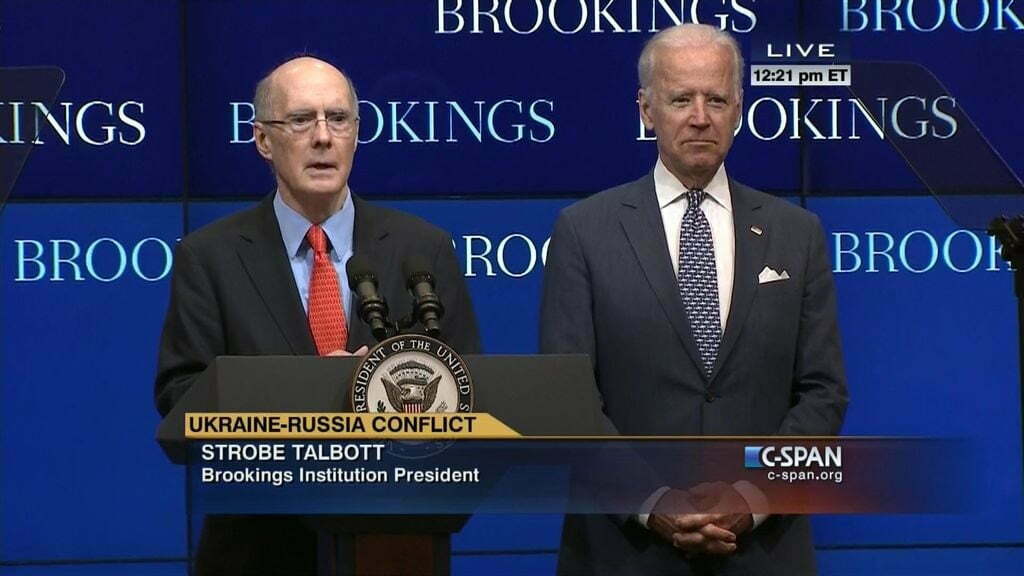
Strobe Talbott speaks during a Brookings event hosting
then-Vice President Joe Biden, Source: YouTube |
While some Rhodies remained in positions of power during the period of the presidency of George W. Bush, the Rhodes Hives again enjoyed vast policy-shaping influence under the Obama-age where the architecture for global governance was being built on the wreckage of troublesome nation states like Libya, Syria and Ukraine.
Despite the set back caused by Trump, whose victory interfered with Hillary Clinton’s coronation, Rhodies are stubborn creatures, if nothing else. It was later revealed in 2020 that both Talbott and Rice were at the heart of Russiagate.
While still serving as Brookings Institute President in 2015-17, it was Talbott who interfaced with MI6’s Sir Richard Dearlove and Christopher Steele in the months before the elections by cooking up and circulating the “dodgy dossier”. It was Rice who was revealed to be at the center of the “unmasking” entrapment operation that targeted Michael Flynn in January 2017.
It would be the height of folly to presume, as some commentators have done, that Talbott’s role in this operation indicates an American guiding hand in the effort to undo the 2016 elections. Yet, the fact is that Talbott’s entire life and world outlook have been shaped by British Imperial principles that are programmed into the minds of most Rhodes Scholars like himself.
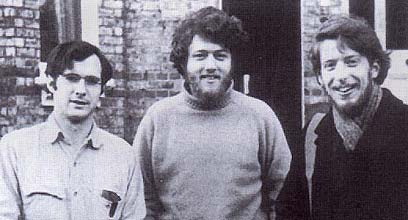
Strobe Talbott, Bill Clinton, and Frank Aller
during their Oxford days. Source: adst.org |
As Jeremy Kuzmarov demonstrates in his recent essay published in Covert Action Magazine, both Talbott and his Oxford roommate Bill Clinton had likely been recruited to the CIA long before receiving their scholarships. Kuzmarov also demonstrates that Bill Clinton played a key role smuggling Khrushchev’s memoir out of Russia during a “research” expedition to Moscow. Clinton’s role in this operation gives new meaning to the role Talbott played in translating that memoir into English as part of a much larger Anglo-American intelligence operation designed to revise Soviet history.
It was also during his time at Oxford that young Talbott adopted a near-religious commitment to a post-nation state world order.
Upon his return to America, Talbott was shepherded into a prominent role in the western propaganda bureau, serving as a leading editor of Time Magazine. It was during the end of this phase of his career that the soon-to-be Assistant Secretary of State outlined his manifesto for the New World Order in a July 20 1992 article entitled “The Birth of a Global Nation”.
In that article, Talbott stated:
“All countries are basically social arrangements…No matter how permanent or even sacred they may seem at any one time, in fact they are all artificial and temporary…Perhaps national sovereignty wasn’t such a great idea after all….But it has taken the events in our own wondrous and terrible century to clinch the case for world government.”
Within his 1992 manifesto, Talbott describes NATO as “history’s most ambitious, enduring and successful exercise in collective security” and then celebrates the International Monetary Fund. Talbott said “the free world formed multilateral financial institutions that depend on member states’ willingness to give up a degree of national sovereignty. The International Monetary Fund can virtually dictate fiscal policies, even including how much tax a government should levy on its citizens.”
Forecasting the Blair-Cheney “Responsibility to Protect” protocol which would soon justify the humanitarian bombings of Kosovo, Iraq, Libya and Syria, Talbott championed the destruction of national sovereignty made possible by the invasion of Kuwait in 1991, saying “the internal affairs of a nation used to be off limits to the world community. But the principle of ‘humanitarian intervention is gaining acceptance.”
During the entire Clinton Presidency, Talbott ensured that his utopian beliefs would not remain ink on paper, but be put swiftly into action, interfacing closely with Soros’ Open Society Foundations and overseeing the Shock Therapy of Russia during the 1990s.
Among the top Rhodies guiding US President Joe Biden is none other than Susan Rice, who is now the director of Biden’s Domestic Policy Council.

President Barack Obama and National Security Advisor Susan E. Rice
talk on the phone with Homeland Security Advisor Lisa Monaco regarding a terrorist attack in Brussels, Belgium, March 2016. Source: Flickr |
In 1990, Rice received her PhD in International Relations from New College, Oxford and, in 1992, received the first annual award from Chatham House for “the most distinguished dissertation in the UK in the field of International Studies” for her thesis “The Commonwealth Initiative in Zimbabwe 1979-80”. In her thesis, Rice lauded the British peace keeping transition after the empire’s 13 year war against Zimbabwe liberation.
Describing her love of Oxford, Rice delivered remarks at Rhodes House in 1999 saying:
“To be at Rhodes House tonight with so many friends, benefactors and mentors is a personal privilege. It is like a coming home for me for much of what I know about Africa was discovered within these walls, refined at this great university with generous support of the Rhodes Trust.”
It is worth keeping in mind that as she spoke those words, Rice had recently demonstrated her imperial worldview by coordinating the destruction of a Sudanese pharmaceutical factory in 1998 and threatening South Africa with economic destruction unless it gave up its desire to produce generic and affordable AIDS medication that same year. While serving as special assistant to Bill Clinton and Senior Director of African Affairs at the National Security Council, Rice oversaw a well documented rogue CIA operation that ensured US support to the invasion of the Democratic Republic of Congo by Ugandan and Rwandan-sponsored rebels. A September 2009 New York Review of Books article by Howard French documented Rice’s role in this genocidal operation:
“Museveni [of Uganda] and Kagame [of Rwanda] agree that the basic problem in the Great Lakes is the danger of a resurgence of genocide and they know how to deal with that. The only thing we have to do is look the other way.”
During these operations that targeted Hutu refugees, it is estimated by UN officials that over 200,000 people were massacred simply because Rice demanded the USA “look the other way”.
Rice worked to balkanize Sudan and to promote military intervention across the Arab and African worlds under the Responsibility to Protect doctrine (R2P) with the cooperation of supranational organizations like the International Criminal Court (ICC), which issued an arrest warrant for President Bashir. Her handiwork would have made Cecil Rhodes proud.
We should not forget that the Sudan-Libya-Egypt alliance under the combined leadership of Mubarak, Qadhafi and Bashir, had moved to establish a new gold-backed financial system outside of the IMF/World Bank to fund large scale development in Africa. Had this program not been undermined by a NATO-led destruction of Libya, the carving up of Sudan and regime change in Egypt, then the world would have seen the emergence of a major regional block of African states shaping their own destinies outside of the rigged game of Anglo-American controlled finance for the first time in history.
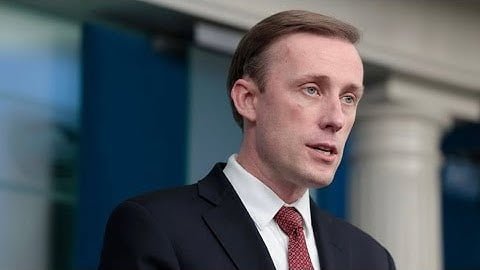
National Security Adviser Jake Sullivan discusses
President Biden’s trip to Europe at a press briefing in March 2022. Source: YouTube |
Following the Rhodes model of economic exploitation of colonized people, today’s Anglo-American neocolonial models of finance have mastered the art of providing usurious loans with many strings attached and structural adjustment measures that would ensure those target populations never benefit or break free from the economic dominance of a masterclass that exploits their land and labor.
Beyond Rice, other Rhodes Scholars emerging into positions of control in the current Biden administration include National Security Advisor Jake Sullivan, who graduated from Oxford’s Magdalene College and worked under Strobe Talbott at the Brookings Institute’s Center for the Study for Globalization at Yale in 2000. During this time, Rice had also come to work as Senior Fellow at Brookings, followed by a stint as UN Ambassador from 2009-2013 and Obama’s National Security Advisor from 2013-2017, while Sullivan went on to become Biden’s top security aid during the Obama years.
Due to an embarrassing series of scandals, Rhodes Scholar Eric Garcetti (former Mayor of LA) was pulled from Biden’s early cabinet. But now, with a full year in the penalty box, Garcetti’s rehabilitation was announced on July 2021 with his appointment as US ambassador to India. Acting as Chair of the C40 Cities (a network of 97 major cities around the world), and also the co-founder of Climate Mayors (representing 400 US mayors who have signed onto the Paris Climate Accords), Garcetti is a driving force of the Green New Deal, which is itself an integral part of the Great Reset.

Pete Buttigieg speaks at the 2019 California
Democratic Party State Convention in San Francisco, California, June 2019. Source: Flickr |
Garcetti has made it known that his priorities in India will be to expand the “green cities” program deeper into India, work to combat Russia’s relationship with the Indian military, and promote an anti-China outlook amongst the India elite.
Another Rhodes Scholar and former mayor, Pete Buttigieg, was more fortunate than Garcetti and was given the keys to the Transportation portfolio, although he had first been considered for the position of US Ambassador to China. Although conservatives are quick to paint Buttigieg and Democrats as stooges for “evil China”, it was in fact Buttigieg who said in May 2020: “Beijing sees an opportunity to call into question the American project and liberal democracy itself. One thing they’re banking on is four more years of Trump.”
As I laid out in my previous reports, Soros himself has repeatedly labelled the two greatest threats to his “open society” as 1) Xi Jinping’s China and 2) Trump’s USA and even recently called for the overthrow of President Xi in defense of his preferred configuration of the global order.
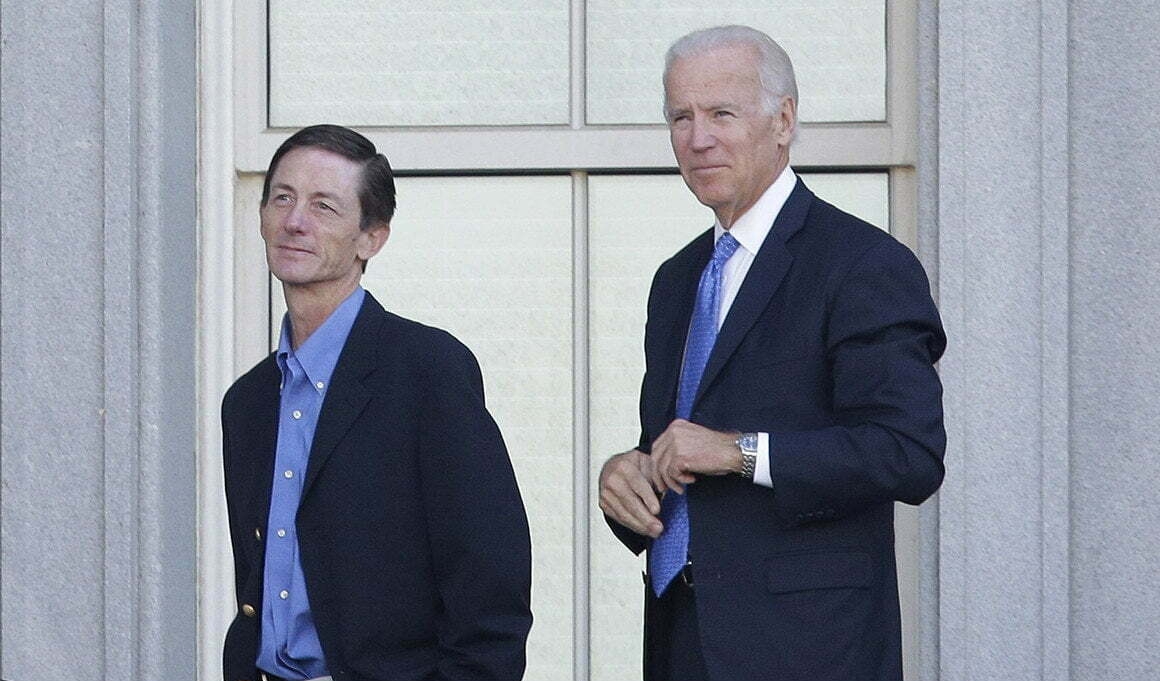
Then-Vice President Joe Biden and Bruce Reed
on a balcony of the Old Executive Office building of the White House complex in 2013. Source: The Spokesman Review |
Another Rhodie named Bruce Reed had originally entered Washington as part of the first 1992 Rhodes Scholar infusion as the Clinton-Gore campaign manager and later director of Clinton’s Domestic Policy Council. Reed has since been tapped as the top tech advisor to Biden and has since openly called for cracking down on free speech online by cancelling Federal Internet law Section 230.
This law has kept website owners free from prosecution over content published on their sites. Its cancellation would crush what dwindling free speech still exists on social media. The argument advanced by Reed has been that Section 230 has been used by Russian and Chinese operatives to infiltrate the information ecosystem and manipulate Western elections. With its repeal, Facebook and other social media sites will be forced to censor all “illicit” thought crimes under fear of federal prosecution.
Reed had previously teamed up with Biden in drafting the infamous 1994 crime bill, which gave countless petty criminals longer-term sentences, benefiting the prison-cheap labor complex. During the Obama years, Reed worked as Biden’s Chief of Staff and lead handler. He is currently also serving as the Deputy Chief of Staff to the White House and is commonly described as a “political operative”.
One particularly notable Rhodes Scholar who ran US science policy between June 2, 2021 and February 28, 2022 is geneticist Eric Lander. Although his systematic abuse of dozens of women on his staff resulted in his being forced out of his powerful position and replaced with his colleague Francis Collins, Lander’s life’s work, upon returning from his Oxford conditioning, has been devoted to imposing information theory (aka: mathematical systems analysis) onto biology and genetics.

Eric Lander speaks at the UK Biobank Scientific
Conference, June 2018. Source: YouTube |
After rising through the ranks of the Whitehead Institute and co-founding the Broad Institute with geneticist David Baltimore, Lander led the Human Genome Project from 1995-2002. Together Lander and Baltimore oversaw a major 2015 conference on the “new era of biomedical research” that unveiled a new gene modification technology known as CRISPR. CRISPR involves the use of enzymes and RNA found in bacteria, which were discovered to have the ability to target DNA sequences and induce various mutations. While it is obvious that this powerful technology may offer potential benefits to humanity as a tool to eliminate hereditary diseases, CRISPR’s incredible power to fundamentally alter human DNA forever can do unimaginable harm if put into the wrong hands.
At the “historic” international summit on human gene editing in December 2015, conference chairman David Baltimore echoed the creepy words of Julian Huxley, former head of the British eugenics society and later UNESCO, during his keynote speech: “over the years, the unthinkable has become conceivable. We’re on the cusp of a new era in human history.”(4)
In January 2021, John Holdren congratulated Eric Lander for being appointed Joe Biden’s Science “Czar” (Director of White House Science and Technology Policy)- the position formerly held by Holdren himself.(5) In this position, Lander oversaw the re-activation of every Obama-era behaviorist science policy as part of a technocratic overhaul of the US government that is fully aligned with the World Economic Forum’s Great Reset Agenda.
For those who may not be aware, the Great Reset (sometimes termed “the Davos Agenda”) is a blueprint which professes to use the two-fold catalyst of anthropogenic global warming and the Covid-19 pandemic to induce a reset of all aspects of civilization (political, economic, security and cultural), with the ultimate goal of in bringing about the sort of post-nation state world order that had been outlined by Strobe Talbott in his 1992 diatribe mentioned above.
Using the pretext of Covid-19 and resulting emergency legislation to bypass the FDA and advance gene therapy technologies by relabeling them “vaccines”, a new social experiment has begun. CRISPR technology is already being hailed as the key to tackling mutating strains of Covid-19 and is being used as a “vaccine” for certain tropical diseases as of this writing. The obvious connection between eugenics organizations and the rise of modern mRNA operations associated with GAVI and Oxford’s Astra Zeneca, as unveiled by investigative journalist Whitney Webb, should be kept firmly in mind.
[4] The mandate for the new organization was set out clearly in Huxley’s 1946 UNESCO: Its Purpose and Its Philosophy: “At the moment, it is probable that the indirect effect of civilization is dysgenic instead of eugenic, and in any case it seems likely that the dead weight of genetic stupidity, physical weakness, mental instability and disease proneness, which already exist in the human species will prove too great a burden for real progress to be achieved. Thus even though it is quite true that any radical eugenic policy will be for many years politically and psychologically impossible, it will be important for UNESCO to see that the eugenic problem is examined with the greatest care and that the public mind is informed of the issues at stake so that much that is now unthinkable may at least become thinkable.”
[5] In the 1977 Ecoscience: Population, Resource and Environment co-written with his mentor Paul Ehrlich, John Holdren made his ideological allegiances crystal clear when he mused of the world government he wished be brought into being to solve overpopulation: “Perhaps those agencies, combined with UNEP and the United Nations population agencies, might eventually be developed into a Planetary Regime- sort of an international superagency for population, resources, and environment. Such a comprehensive Planetary Regime could control the development, administration, conservation, and distribution of all-natural resources, renewable or non-renewable, at least insofar as international implications exist. Thus, the Regime could have the power to control pollution not only in the atmosphere and oceans, but also in such freshwater bodies as rivers and lakes that cross international boundaries or that discharge into the oceans. The Regime might also be a logical central agency for regulating all international trade, perhaps including assistance from DCs to LDCs, and including all food on the international market. The Planetary Regime might be given responsibility for determining the optimum population for the world and for each region and for arbitrating various countries’ shares within their regional limits. Control of population size might remain the responsibility of each government, but the Regime would have some power to enforce the agreed limits.”
While Biden’s pick for Secretary of State Anthony Blinken is not himself a Rhodes Scholar, he is a life-long friend and former classmate of Robert Malley. Malley is a Rhodes Scholar who formerly acted as Special Assistant to Obama and served as his “point man in the middle east” at the National Security Council. In January 2021, Malley was appointed US Special Envoy to Iran for the Biden administration.

US Secretary of State Anthony Blinken at
Lancaster House in London, UK, May 2021. Source: Flickr |
Earlier, Malley had been special assistant to Bill Clinton on Arab Israeli Affairs and was always deeply enmeshed with George Soros’ operations from the day he entered into politics. Between 2016-2021, Malley has acted as President and CEO of the International Crisis Group (ICG), founded by George Soros and Lord Malloch Brown in 1994 as a tool to promote global humanitarian wars under the guise of Responsibility to Protect (R2P). Joining Soros, Malloch-Brown and Malley at the ICG, we should not be surprised to find none other than Biden’s current National Security Advisor Jake Sullivan.
Additionally, Blinken’s father Donald Blinken made a name for himself as Soros’ point man in Hungary from 1994-1998, where he served as US Ambassador facilitating the growth of Soros’ Open Society Foundation. He was later rewarded by the Hungarian speculator with a “Donald and Vera Blinken Open Society Archive” (OSA) at Budapest’s Central European University. The Soros-funded university was created in the wake of the collapse of the Soviet Union and Blinken was instrumental in that operation.
President Viktor Orbán knew exactly what he was doing when he expelled this foreign operation from Hungary’s borders in 2018. At the time, Central European University President Count Michael Ignatieff screamed “This is unprecedented. A U.S. institution has been driven out of a country that is a NATO ally.”
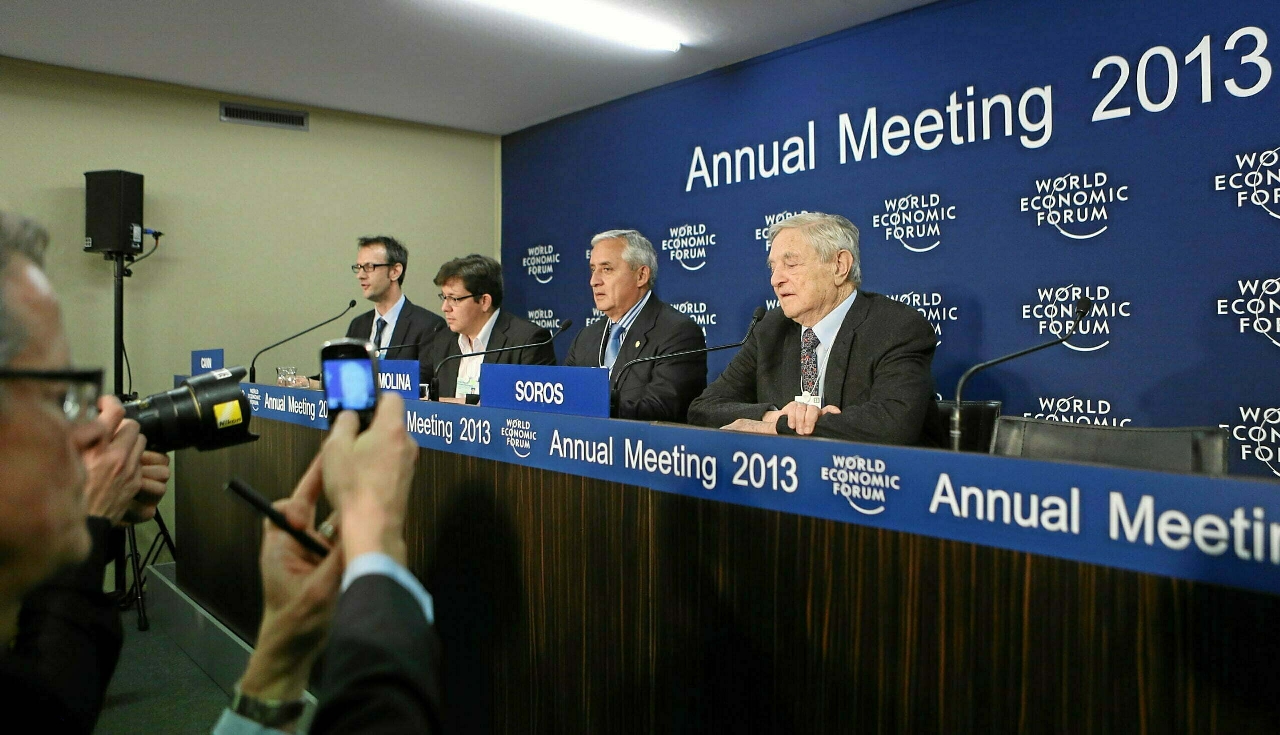
George Soros at the Annual Meeting 2013 of the World
Economic Forum in Davos, Switzerland. Source: Flickr |
It is noteworthy that Ignatieff is himself the son of Rhodes Scholar globalist George Ignatieff and great grandson of Count Nikolai Pavlovich Ignatiev (founder of the Russian Okhrana secret police), whose family was rewarded handsomely for services rendered during the overthrow of the Czarist system in Russia. This story is partially told in the article Cheney Revives Parvus’ Permanent War Madness by Jeff Steinberg (2005).
As a sidenote, Michael Ignatieff’s great grandfather on his maternal side is none other than George Parkin, the first controller of the Rhodes Trust from 1902-1922 and the man whose Oxford lectures and books inspired Cecil Rhodes and Milner to devote their lives to the cause of Empire. Michael is also a global board member of Soros’ Open Society Foundations, which is headed by Mark Malloch Brown.
As I laid out in a recent report, not only did these two upper level managers come to light as figures central to the voter fraud claims that surround the 2020 US presidential election, but both have also pioneered the new age of regime change color revolutions that began with Marcos’ 1986 ouster during the Peoples’ Power revolution in the Philippines and have since ripped through the Balkans, Georgia, Ukraine, Kyrgyzstan, Belarus, Moldova, Bolivia, etc.
While the Rhodes Trust has been close to the causal nexus of much of recent world history, no one should assume that every Rhodes Scholar is guilty by association, just as one cannot make such assumptions about every WEF Young Leader.
It is an undeniable fact that some Rhodes Scholars have broken with their training and have gone on to live useful lives. I see no reason to assume, for instance, that actor/singer and Rhodes scholar Kris Kristofferson played a nefarious role in anything (though, some of his film choices were a bit weak). Similarly, Canada’s John Turner did some very useful things in his short stint as Canadian Prime Minister, which earned him the ire of many unipolarists then promoting NAFTA, Maastricht and the Euro.
The key thing to keep in mind is that longer waves of history are shaping the present more than most historians would care to admit. Anyone taking an intention-driven approach to historical analysis will come to recognize quickly enough that events that took place centuries ago have an active impact on the events playing out today.
How and why is this so? Because history is shaped by ideas. Good ideas that are in tune with the truthful nature of reality vs bad ideas that are out of tune with said reality. This battle over ideas (and ideas about ideas e.g.: Plato’s higher hypothesis) is where the causal nexus of universal history is found. With this in mind, we can see clearly how certain people use their influence to conspire and create cultural and political institutions that transmit those ideas and organizing principles across many generations. Sometimes we find these forces to be acting in harmony with natural law and sometimes very much in defiance of natural law.
Today’s battle between the opposing paradigms of the multipolar alliance led by Russia and China on the one hand vs the unipolarist/post-nation state worldview on the other has everything to do with these longer forces of history. The only way to comprehend the ideologies pushing the world towards a new iron curtain today, and managing international fifth columns across the many nations of the world is by recognizing this higher reality.
This exercise may cause you to think about thinking differently, and at first may be uncomfortable, but just as the figure released from the cave who slowly accustoms his/her eyes to the light of the sun and reality, the satisfaction of enjoying a higher order of truthfulness is incomparably more pleasant to a life believing in the shadows cast by an elite class of puppeteers.
